Here Are the Most Stable Boat Hull Designs (with Examples)
The most stable boat hull design depends largely on the type of boat, and the conditions it's used in. To make things simple, I've made a neat overview below.
What is the most stable boat hull design? Generally, multihulls and deep-V hulls are considered the most stable hull designs in most situations. In practice, the most stable hull design depends on the specific conditions in which the boat will be used. With large waves, deep hulls tend to be better than multihulls.
With different situations, the most stable hull winner changes. It also differs per type of boat. Sailboat hulls, for example, are a type of displacement hull (which are considered unstable), that, thanks to their keel, are actually very stable.
Below I list the three most stable hull designs with examples to give you a good overview of the different stabilities of each hull design. But let's kick off with a clean overview of the kings and queens of stability for different conditions.

Most Stable Hull Design in Different Situations
| Vessel type | Where and when | Most stable |
|---|---|---|
| Sailboats | Everywhere, all conditions | Multihulls |
| Sailboats | Everywhere, very large waves | Deep Keel Monohull |
| Powerboats | Large bodies of water, waves | Deep-V |
| Powerboats | Small bodies of water, no waves | Flat Bottomed |
If you're unsure whether a particular hull will be stable, here are three rules of thumb to live by:
- The slower it goes, the more stable the hull will be
- The larger the part underwater, the more stable the hull will be
- The broader it is, the more stable it will be
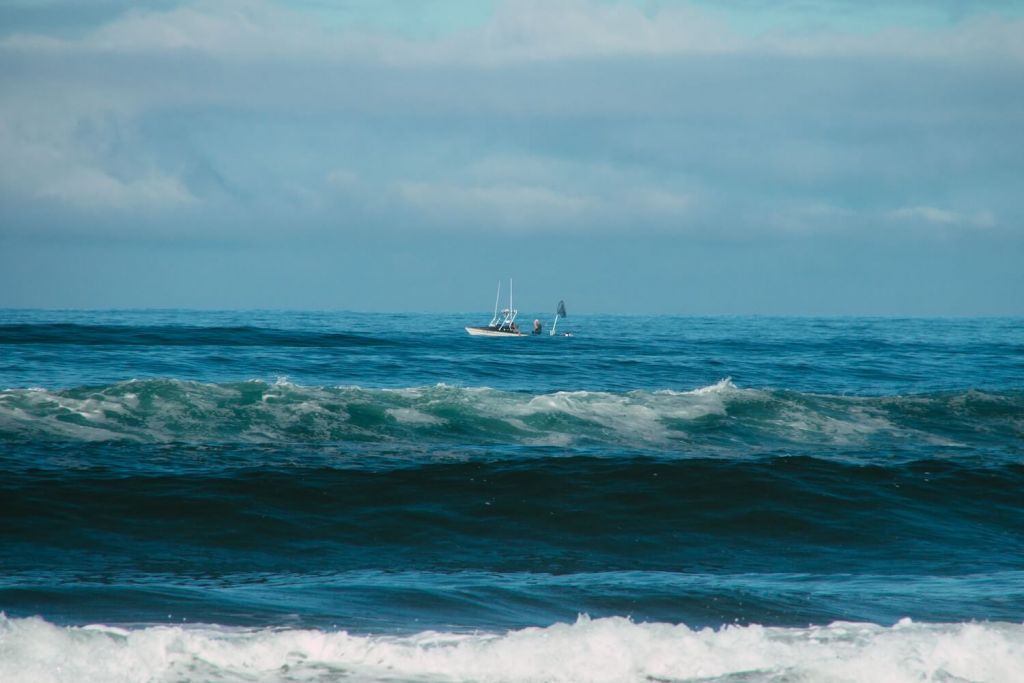
On this page:
Deep-v hull, displacement hull with keel, flat bottomed and pontoon hulls.
The multihull is the absolute winner in this list, so let's start there. Multihulls are incredibly stable , especially if they consist of two separate hulls (most sailboats). It is generally the most stable hull design out there, in most situations. The exception are extreme weather (and especially wave) conditions. With very large waves, I'd say a prefer a very deep keel design over a multihull.
So why is the multihull on sailboat the most stable, but not on powerboats in the overview above? Well, sailboats and powerboats have different hull types . They move through the water differently, which really impacts the stability of the multihull design. Sailboats have displacement hulls, but powerboats typically use planing hulls. Planing hulls glide over the water and displacement hulls move through the water.
This means that:
- multihull sailboats are displacement multihulls
- multihull powerboats are planing hulls
That simple difference really impacts the stability. I would say that for planing hulls (so powerboat) Deep-V hulls are more stable in most situations. More on that one later.
Generally, displacement hulls are a lot more stable than planing hulls, since they are submerged continuously. So the elements can't push them around as easily as planing hulls.
If you're interested in this kind of stuff, make sure to check out my full Illustrated Guide to Boat Hull Types here. There, I discuss all different hull types in a quick overview. For an in-depth look at displacement hulls, make sure to check out this article .
On Sailboats
Examples: catamarans, trimarans
Before we look at multihulls at powerboats, I want to start with sailboats. Multihull sailboats are incredibly stable. You definitely recognize these hulls: catamarans and trimarans are becoming more and more popular. The design uses two separate hulls, connected by a broad deck. This makes these boats very wide, which increases stability massively.
The two hulls are either regular displacement hulls - so it's like tying two monohull sailboats together - or semi-displacement hulls. This is a hybrid between displacement and planing. If you're interested, you can read a detailed overview of semi-displacement hulls here .
There are conditions where multihull sailboats perform worse than monohulls, and that is in extreme waves. Multihulls are a lot less agile, and because of their width, very large waves can be a problem. Not to worry: it is extremely hard to capsize a catamaran. But they can get pretty beat up when they get kicked around and receive a couple of punches.
On Powerboats
Examples: Cathedral, Dory
There are "multihull" powerboat designs out there. This design really looks like a small catamaran, but you wouldn't say so above the waterline. Powerboats with this design aren't particularly broader than their regular cousins. So the stability is a bit less compared to true catamarans. This design just doesn't make use of the enormous stability improvement thanks to the broad beam.
Multihull powerboats are mainly more stable in low and moderate chop (waves). For rough chop, Deep-V hulls are the better alternative.
Examples: powerboats
Deep-V hulls are a pretty new design, and are somewhat the powerboat's take on the sailboat's keel hull. A Deep-V is sort of a shallow keel design, that runs from front to aft, and results in a flat back to allow for planing. In other words, it's a planing keel design.
This allows two things: it can plane, so it is fast, but it's also a lot more stable and comfortable than flat bottom hulls. Waves won't push these boats around easily, as with flat bottoms. So in a way, it's best of both worlds.
Deep-V Hulls are so stable, that people even use them (safely) in rough coastal waters. They are known to hold their own pretty well in all kinds of conditions.
But: they are a type of planing hull. And as we know, planing hulls are generally less stable than displacement hulls.
Example: Sailboats
There's a bit of a debate on displacement hulls. Without a keel, they are probably the most unstable hull design out there. Really, they roll so incredibly easily. A great example of this are canoes. Canoes have displacement hulls. They glide effortlessly through water, because they are super smooth. But they also capsize the moment you put step onto them.
But displacement hulls have a lot of incredibly advantages. They are incredibly buoyant. They are heavier, making them more reliable and comfortable. They can cary enormous loads.
So we don't want to miss out on those because it tends to roll. Luckily, a simple extra feature will fix all of this: the keel. Sailboats use all sorts of keel design to counter the hull's tendency to roll over.
A good rule of thumb is: the deeper the keel runs, the more stable the hull will be.
So if you're looking for a sailboat to cross oceans on, make sure it has a long, long keel.
However, this doesn't mean it is really stable hull all of a sudden. Displacement monohulls can roll excessively in large waves. It's that typical sea-leg-tester that makes so many people sick. So if your definition of stable is 'steady', this one is not for you. However, if your definition of stable is 'reliable', this is a good option. Their roll is misleading: displacement hulls that have a good keel are incredibly hard to capsize.
Examples of flat bottomed hulls: rafts, row boats
If you are going to use the boat exclusively on small, calm bodies of water, flat bottomed hulls really make sense. You might not have expected them on this list, but the flatter the hull, the more stable it is.
The general rule is: the flatter the hull, the more stable.
So why are not all boats using this hull design? Well, even with a little chop, these boats will quickly become the most uncomfortable ride you've ever been on . Oh, and they steer like crap.
Flat bottomed hulls have a long tradition - I think it was probably the first boat hull design that every existed. Rafts have flat bottoms, and so do row boats. Most modern flat-bottom hulls are not entirely flat, because flat bottoms tend to be very choppy and not handle very well.
As with anything, there are more answers to the same question. But it's not super complex. If you're looking for the most stable boat out there, first make sure you know what you're looking for. Where and when are you going to use the boat?
Good rules of thumb:
- if it needs to go fast, you need a planing hull
- if it needs to be comfortable, you need a displacement hull
For planing hulls, you want some sort of shallow keel (multihull or Deep-V hull). These are the most stable in most conditions.
For displacement hulls, you want a multihull. If you go with a monohull, remember: the deeper the keel, the more stable it will be.
Leave a comment
You may also like, semi-displacement hulls explained (illustrated guide).
If you want to know exactly what a semi-displacement hull is, this article is right for you. Here, I explain simply what it is, how it works, and why it's different …
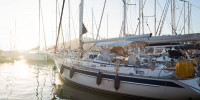
A Complete Guide to Displacement Hulls (Illustrated)

The Illustrated Guide To Boat Hull Types (11 Examples)
- 2024 BOAT BUYERS GUIDE
- Email Newsletters
- Boat of the Year
- 2024 Freshwater Boat and Gear Buyers Guide
- 2024 Boat Buyers Guide
- 2024 Water Sports Boat Buyers Guide
- 2024 Pontoon Boat Buyers Guide
- Cruising Boats
- Pontoon Boats
- Fishing Boats
- Personal Watercraft
- Water Sports
- Boat Walkthroughs
- What To Look For
- Watersports Favorites Spring 2022
- Boating Lab
- Boating Safety

The Best-Riding Center Console Boats for Rough Water
- By Heather Steinberger
- Updated: April 7, 2020
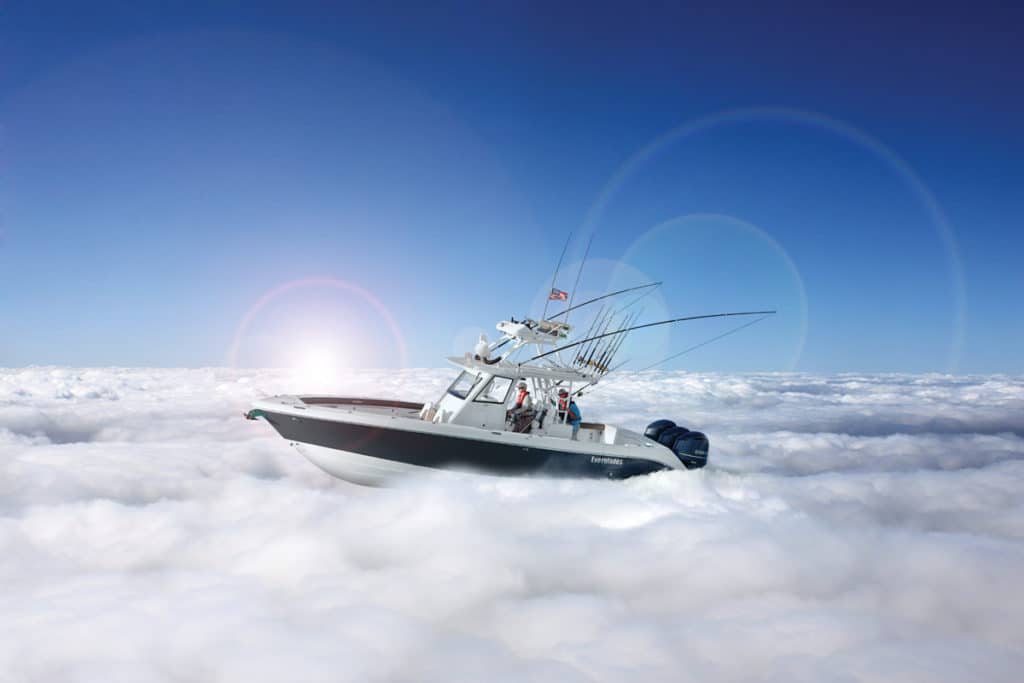
We’ve all been there. A headwind pipes up, and choppy, rough seas dance between you and your destination. You throttle up; you throttle back. You try to help your boat find its comfort zone, and you do your best to quarter the waves.
Inevitably, though, there are those stomach-dropping lurches and the slamming that clenches your muscles and rattles your dental work. Despite your best efforts, you can’t ignore the bangs down below, the ones that make the hull shudder. The ones that make you fervently hope that everyone involved with building this boat did a good job.
That’s a rough ride, even for a rough water boat. And it has happened to all of us, so let’s be honest. Not every boat can provide a soft, smooth ride in snotty conditions, no matter what the glossy brochures say.
We asked three prominent boat designers, and their answers provided much food for thought — regarding how to choose a vessel that’s going to provide a smooth ride, best boat for rough seas, the compromises and trade-offs inherent in your choice, and whether a smooth ride is even what you should be looking for in the first place.
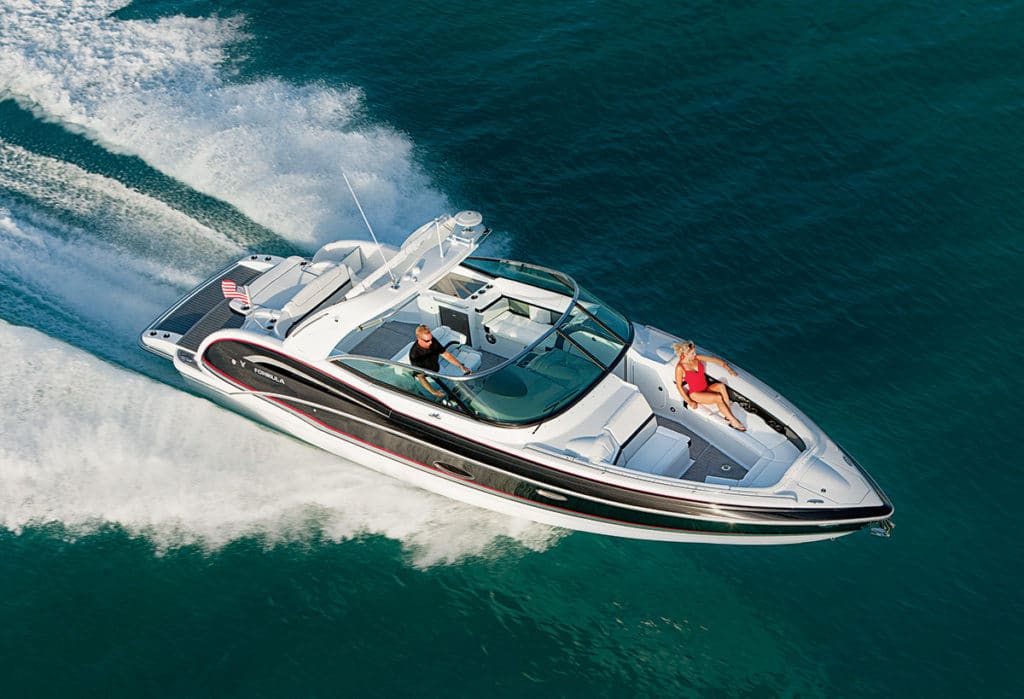
Comparing Displacement and Planing Boat Hulls
Dave Gerr founded New York City-based Gerr Marine Inc. in 1983. He’s designed a broad range of recreational boats and commercial vessels, both monohull and multihull. When it comes to designing a soft-riding hull, he immediately pointed out that there are different sets of criteria for displacement hulls and planing hulls.
Displacement hulls, he noted, don’t pound the way a planing hull will, so they automatically provide a softer ride. To maximize this, designers need to ensure three things: a good roll time, good heave characteristics and deadrise forward.
“For the roll time, we have a formula,” Gerr said. “Every boat has a natural roll period, which is 1 to 1.1 seconds times the boat’s beam in meters. If it’s slower than that, you’ll get that drunken motion. If it’s faster, it’s going to feel snappy and uncomfortable.”
For example, a boat with a 6.7-foot beam ideally should have an approximately two-second roll time. And, Gerr added, a reasonable deadrise forward will make the vessel even more comfortable.
The formula for heave, however, is more complicated. It involves the weight of the boat and the water plane area. The lighter the boat is, and the greater its water plane area, the greater the heave motion will be.
“A wide boat with a large water plane will bounce up and down violently,” Gerr said, “but if you have a small water plane compared to the boat’s weight, that heave will be slow. If it heaves too slowly, you’ve got a wet boat.
“You want to have your roll time and heave in the target region, and then add that deadrise forward,” he continued, “so you won’t have pounding in chop.”
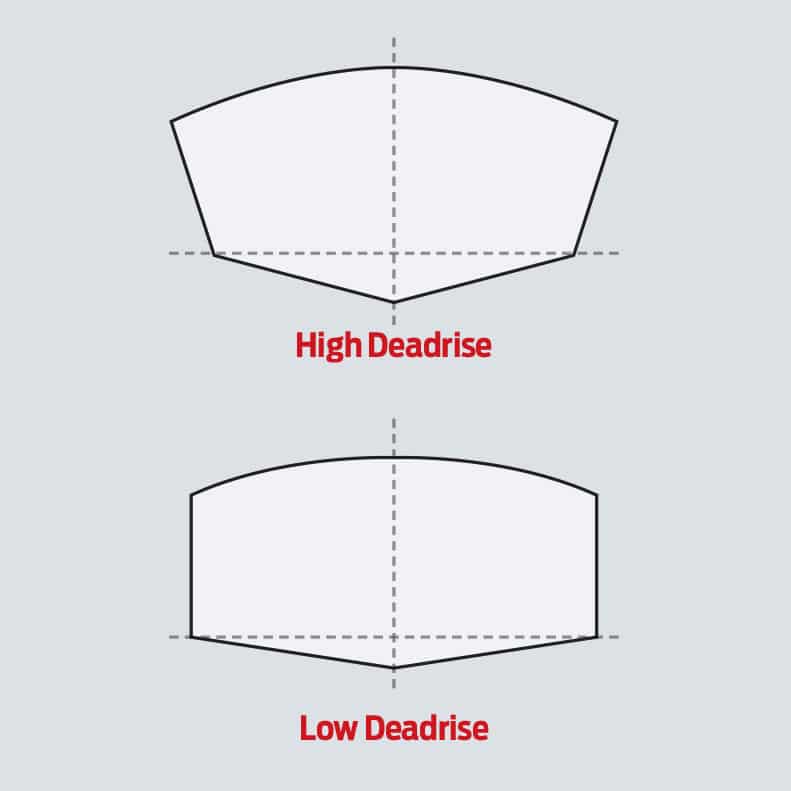
For a planing hull this is hard to achieve. By nature, these hulls are snappy and heave more while trolling or drifting; planing cancels that out, but you can still pound.
“What you really want is more deadrise,” Gerr said. “Just remember: The greater the deadrise, the slower the boat [for the same weight and engine]. That deep-V hull is going to need more power.”
A designer, he said, has to juggle power and what is good deadrise on a boat for optimum comfort.
“You put a deep, high deadrise at the forefoot to get the boat to lift its bow out of the water, or you’ll have steering problems,” he said. “You design it so it planes higher, and then you control it with trim tabs so you won’t trip over that forefoot.”
Deadrise is a difficult thing to visually assess at a boat show or in a dealer’s showroom, so how can a boater ascertain if a soft ride was a design priority? Gerr said the length-to-beam ratio is a dead giveaway.
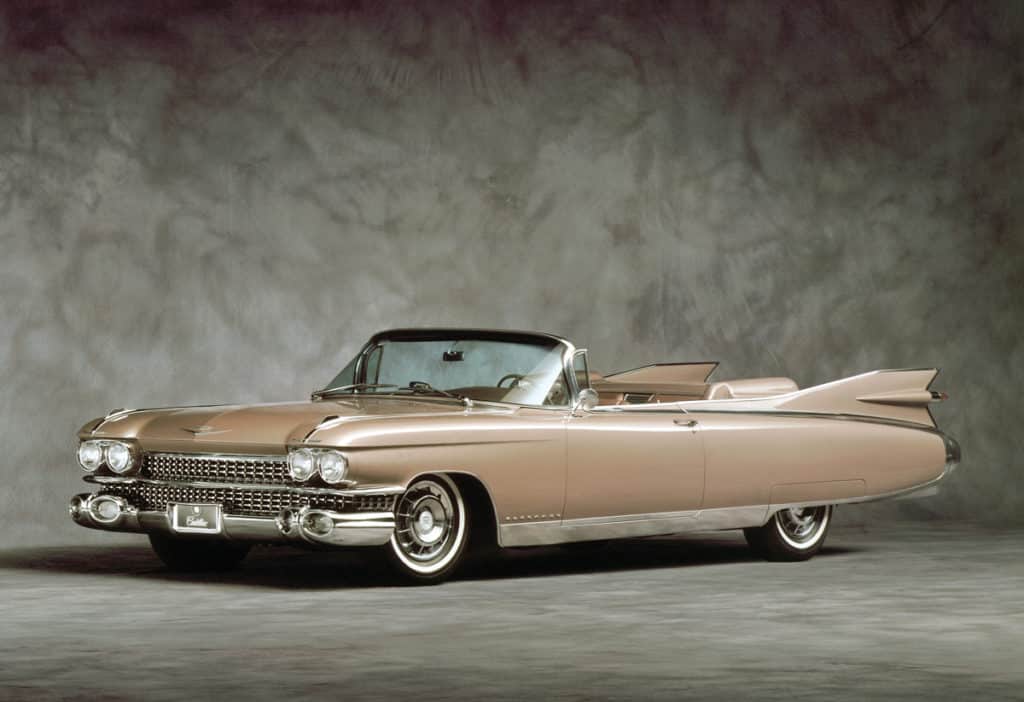
“A long, slender hull is going to have a softer ride, as long as the designer got the roll time right,” he stated. “A wide, shallow hull isn’t going to perform as well. And if you’ve got a high superstructure, you’re going to have increased roll and handling problems.”
Of course, less displacement means it’s a smaller boat inside. You’re going to have to go longer to get the same live-aboard space as that shorter, wider, taller boat next door, but the good news is that your boat is going to be faster and more fuel-efficient than the fat, high version of the same length.
If you are talking deadrise, Gerr said he likes to see a minimum of 17 degrees for offshore boats, although he observed that’s still a bit shallow. Deep-V hulls are considered to be 21 degrees or more. Consider this if you’re looking for the best deadrise for rough water.
“I’d say look for a deadrise of more than 20 degrees,” he advised, “and a length-to-beam ratio on the waterline that is greater than 3.5 to 1. Those two characteristics give you a pretty good idea that the design is intended for a soft ride.”
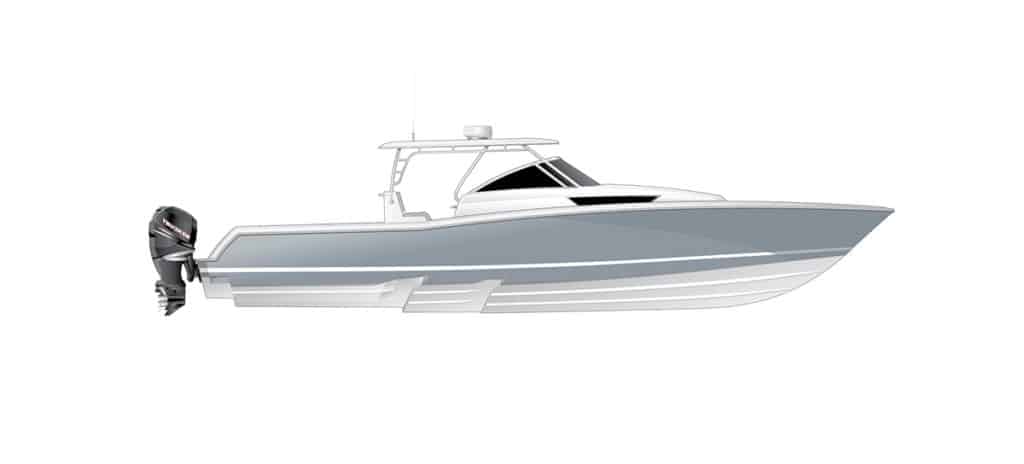
How Does a Boat Hull Handle in Following Seas?
Michael Peters founded Sarasota, Florida-based Michael Peters Yacht Design (MPYD) in 1981. Originally specializing in high-speed boats and offshore racing, MPYD now brings its fusion of performance and aesthetic standards to a wide variety of boat designs. When asked about the search for the perfect soft-riding boat, Peters laughed.
“Think of these ideals: soft-riding, dry and fast,” he said. “Now, pick two.”
The softer-riding a boat is, the wetter it is, because it doesn’t confront the wave. Rather, it splits it. If you want to knock the water down and push it away, then you’ll feel the impact. Boaters clearly need to consider these trade-offs when seeking a soft-riding vessel, but Peters has a more important cautionary tale to share. It’s natural to think of head seas and a soft-riding hull together in the same scenario — but what happens when the boat turns around?
“That’s a different story,” Peters said. “Following seas can pick up the stern, and the sharp angle and deadrise can cause the boat to bow-steer and broach. That’s a much more dangerous situation. It’s uncomfortable to hit the seas on the nose, but it won’t kill you. Boats go out of control in following seas, not head seas.”
Simply put, a hull that is too pointy forward and too flat aft will have an increased risk of broaching. Boaters should look for a hull with deadrise spread evenly — no extremes, such as a professional offshore racing boat’s sharp deadrise throughout the hull. The best boat hull for rough seas must be able to handle following seas.
“If you’re going to have fine forward sections, you’ll balance the hull by putting a lot of deadrise aft,” Peters explained. “You’re looking for recovery, a bow that doesn’t plunge and that can regain its buoyancy in a following sea.
“In our forward sections, we always run a convex section that’s puffed out,” he continued. “Some curvature helps dissipate wave energy and impact. Concave sections look like they’ll provide a softer ride, but they actually focus the energy.”
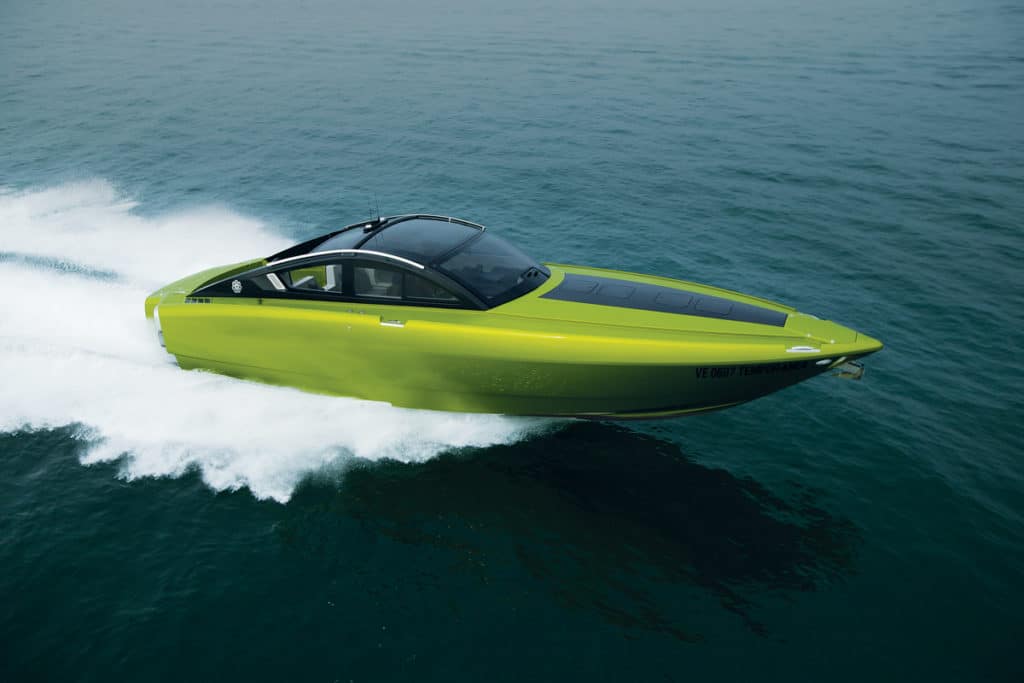
Peters’ advice to boaters is twofold. First, avoid those extremes. They’re not necessary for most recreational boaters. And second, make sure you have a good grasp of where and how you’re going to use the boat. An offshore cruising boat might not be the best choice for a river or inland lake.
“Lakes can be much harder for running a boat than the ocean, where you have long swells rather than steep, breaking seas,” Peters said. “Just make sure you’ve planned for the worst conditions you’ll run in, not the best, and never, ever sign a contract without running the boat in the intended conditions.”
Some boats, he said, are not designed to be the best boat . Sometimes the goal is to provide the best accommodations for the hull’s length and beam, which can mean creating a vessel that has a lot of windage, high freeboard, a high center of gravity and a very wide beam for its length.
“We don’t get to design the best boat in all cases,” Peters said. “No perfect boat? No kidding. But every boat appeals to somebody. One guy might love this particular boat, and he wants that 6-foot-4-inch headroom, while another guy is going to hate the compromises.”
“You always have to be aware that the more you emphasize space, the less boat it’s going to be,” he warned. “And it’s counterintuitive, but what looks good might not be good at all.”
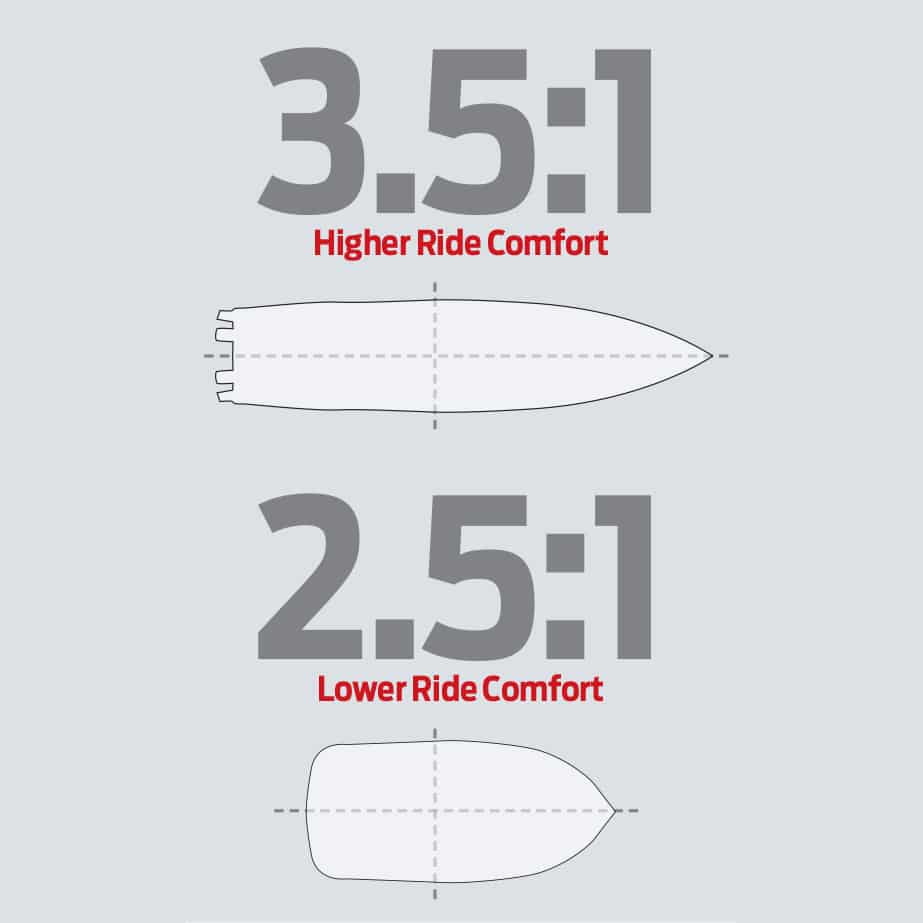
Peters also advised inquiring about a preferred design’s origins. Was it designed in-house at the boatbuilding facility? Was it designed by a naval architect? What are his or her credentials?
“Some people might not care, but it will help you better understand the design,” he said. “With a car, we accept that all the engineering is done correctly, and we can choose our favorite based on appeal alone. With a boat, you should think about engineering and stability calculations, not just styling.”
Finally, Peters noted that good hull designs stand the test of time. With most major advancements taking place in hybrids, like stepped hulls and multihulls, the average boat owner is going to be looking at hull designs that haven’t changed much in 20 or 30 years. And that’s OK.
“Most people just want a good family boat,” he said. “I’d say stay in the middle. The hull should look familiar. That hull from 30 years ago is still a good hull.”
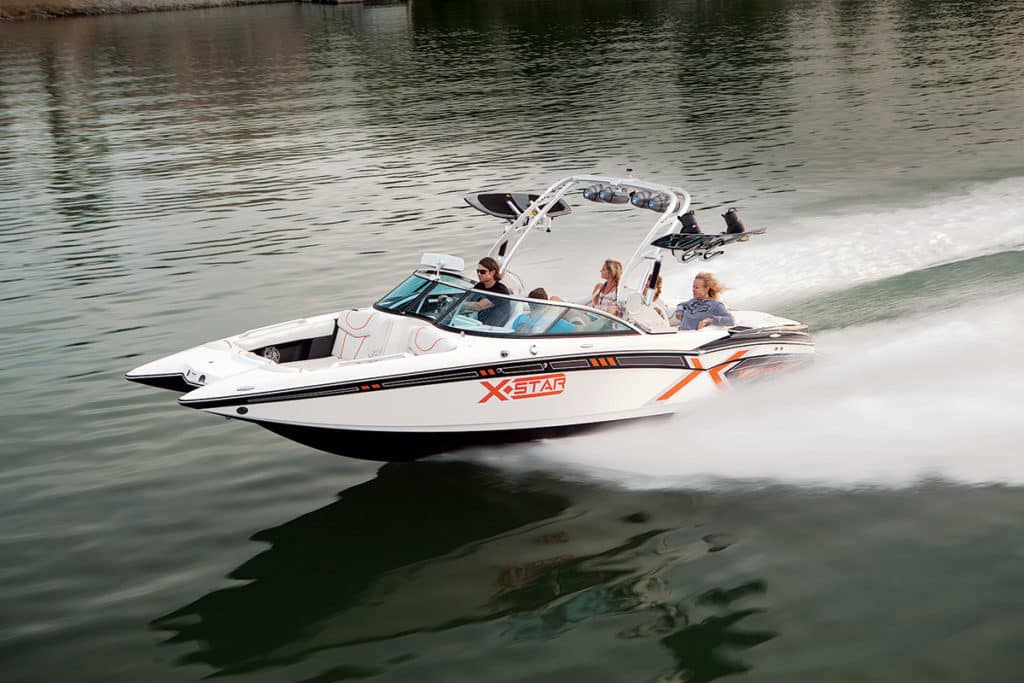
A Boat’s Soft Ride is Subjective
Peter Granata, owner of Palmetto Bluff, South Carolina-based Granata Design , has been designing boats since the early 1970s. With a number of award-winning designs and patented ideas under his belt, he’s firm in his conviction that the soft-ride discussion really shouldn’t be about the boat. It’s about the people involved.
“First of all, the hull ride is felt rather than measured,” he said. “And, it’s based very much on your own individual perception of what the boat looks like and what you expect it to deliver, plus your experience up to that point. It’s very subjective.”
Soft can be a relative term. A boater who is downsizing from a 60-foot yacht to a 30-foot pocket cruiser might find the smaller boat has the worst ride he’s experienced to date, whereas a boater jumping up from a 16-footer will say that 30-footer provides the best ride he’s ever had.
The most important questions a boater can ask, Granata said, are: How well does this design meet its intended purpose, and what can it do for me?
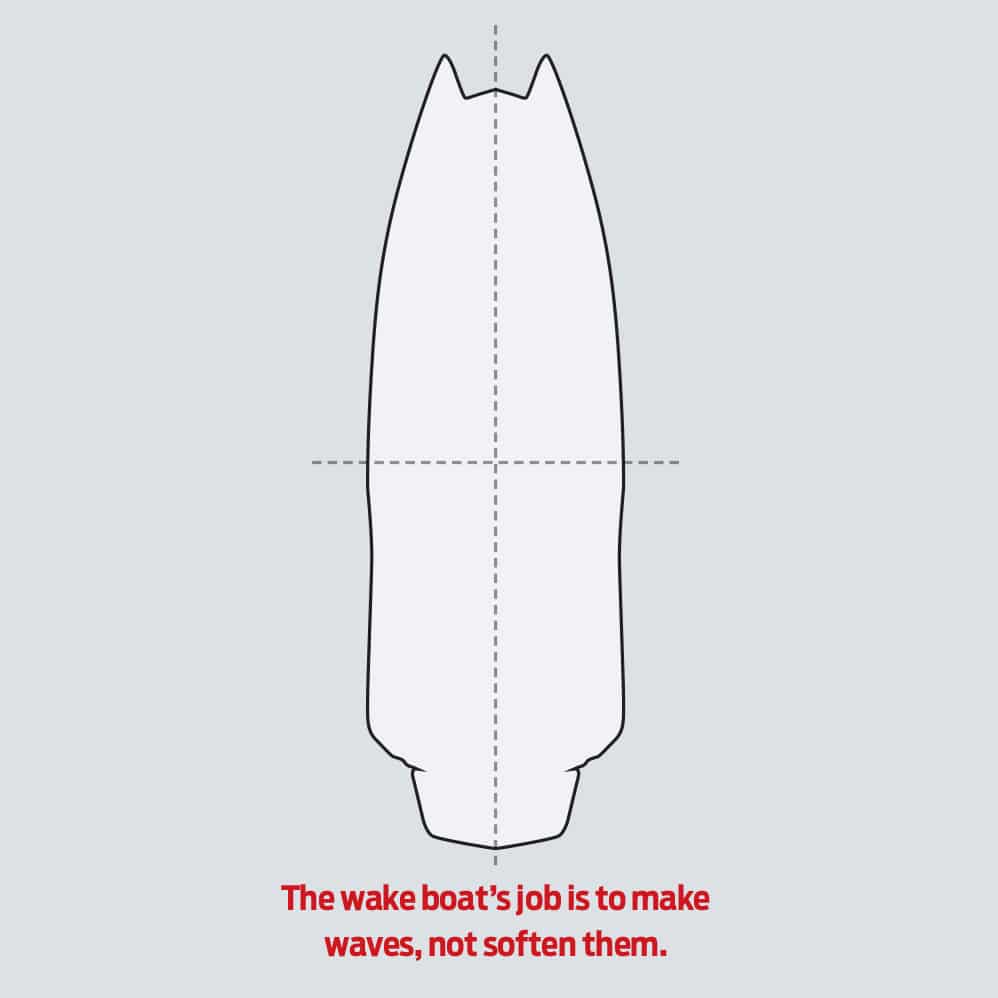
He provided a wakeboard boat as an example. The expectation is for thrills, not the softness of the ride.
“Soft ride is certainly a measurement when it comes to boat design, but it’s not the only one,” he said. “A designer should manage the ride aspect to meet the customer’s expectation. Does the boat do what it’s intended to do?”
The idea is that ride is less important than function, based on customer priorities. If you’re headed offshore and a dry ride is your No. 1 priority, you’ll want to make sure the hull has enough flare to ensure that the water follows the hull and travels outboard rather than over the deck. If you’re an angler, you might look for hull cutaways in the right spots to support the design’s self-bailing characteristics. Bass anglers seek extra buoyancy forward to support their weight.
With “dockominiums,” deep deadrise is unnecessary because owners place a higher priority on stability at rest, accommodations and space for entertaining. And with water-sports boats, the wake is all-important. Without that, the hull is worthless.
“We get so wrapped up in the specifics of hull generation that we forget someone has to buy it and spend time in it,” Granata said. “A designer has to know how the boat will be used, and you do as well. The boat is for you, not for the guy who made it.”
- More: boat building , Boats , Center Consoles

Boat Test: 2024 Viaggio Lago V 16U

Boat Test: 2024 Sea Pro 292DLX Offshore

Boat Test: 2024 Parker Offshore 2900 CC

Boat Test: 2024 Bass Cat Jaguar STS

Suzuki Marine Initiates Sustainable, Ethanol-Free Marine Fuels Plan in Florida
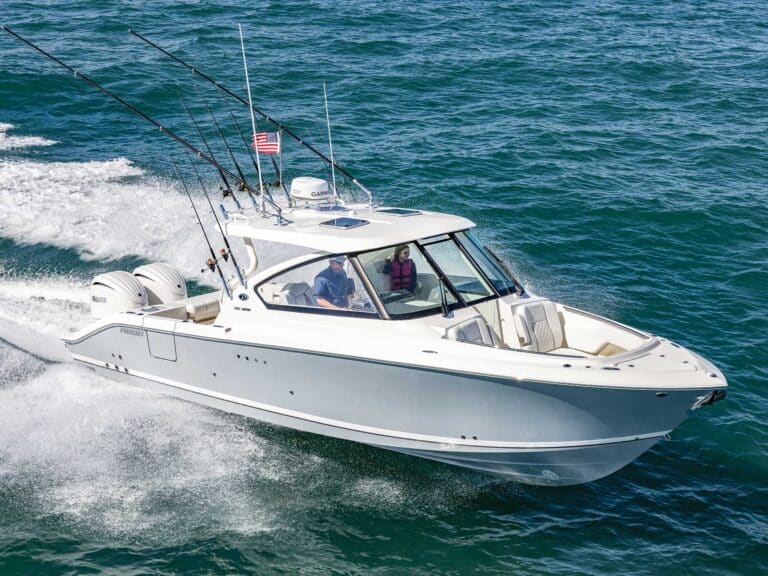
Boat Test: 2024 Pursuit DC 306
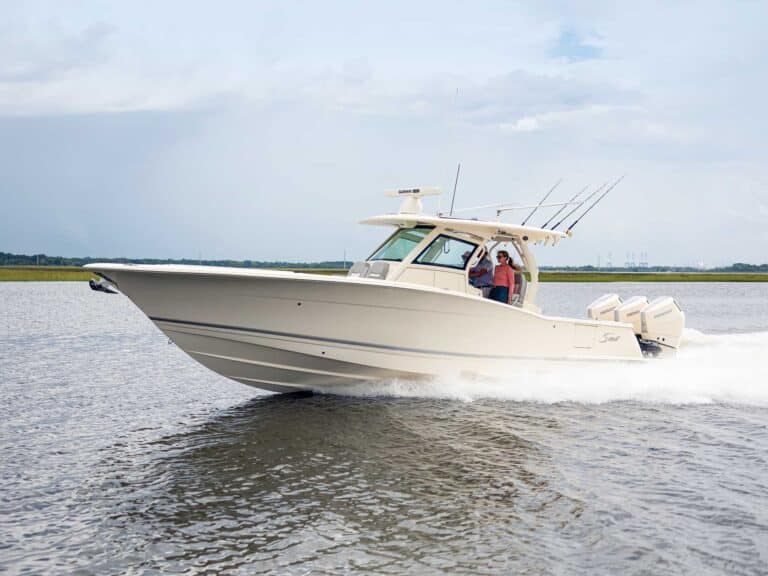
Boat Test: 2024 Scout 357 LXF

- Digital Edition
- Customer Service
- Privacy Policy
- Cruising World
- Sailing World
- Salt Water Sportsman
- Sport Fishing
- Wakeboarding
Many products featured on this site were editorially chosen. Boating may receive financial compensation for products purchased through this site.
Copyright © 2024 Boating Firecrown . All rights reserved. Reproduction in whole or in part without permission is prohibited.
Your source for the latest news on yachts, boats and more. Read through our articles to find out how to compare boats and find the right fit for you!
Which is the most stable boat hull design
Aug 05, 2020
less than a min
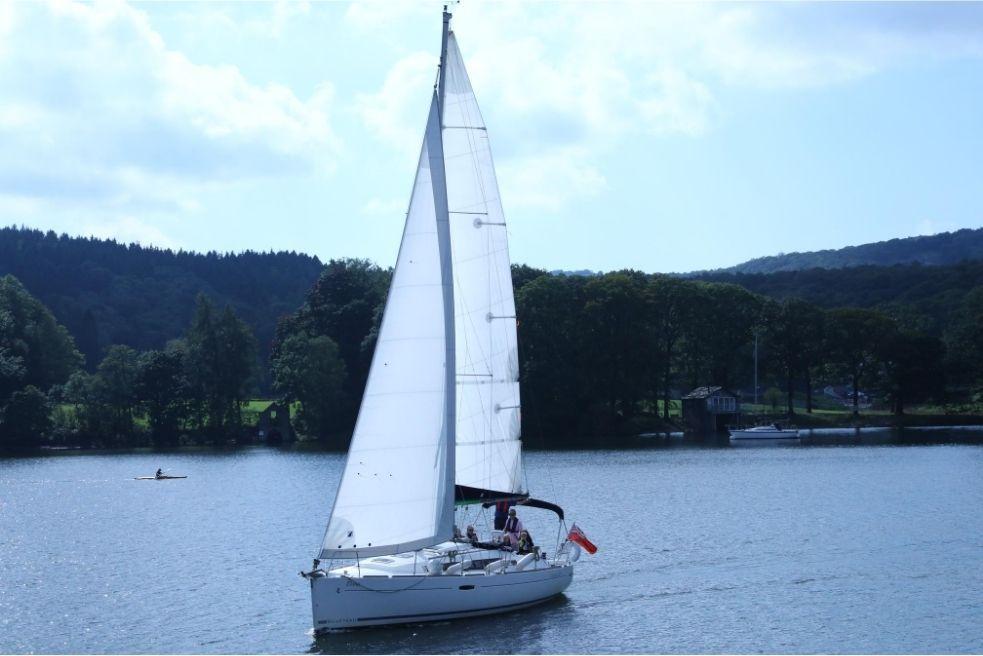
The hull of the boat is one of the most important parts of a floating vessel. It is in fact the part that is directly in touch with water and helps keep the entire boat afloat. It covers the whole lower shell of the boat and is submerged in water up to the waterline. This is why finding the most stable boat hull design is such a trending topic amongst boat owners.
The hull of the boat guarantees not only its stability but also its performance , efficiency , and in some cases speed as well. Hull designs vary from boat to boat. There are however some general groups that certain designs are categorized under. These include flat bottoms , round bottoms , vee bottoms as well as multihulls .
The most stable boat hull design is considered the flat bottom hull . This kind of design offers more stability than the rest due to its flattened bottom. Flat bottom hulls include small boats used in shallow waters, mainly in rivers or lagoons such as small fishing boats. For deeper waters, the most stable hull design is a multihull. The most famous representative of this category is the catamaran .
Features of the most stable boat hull
As it was previously mentioned, the most stable boat hull is the flat hull design . This hull is shaped almost like a box and allows the boat to be appropriate for anglers and hunters. It is mostly used in shallow waters as the shape of it prevents the boat from touching the ground. Flat hull boats do have a disadvantage however when compared to other boat designs. These boats are not as stable in rough or deep seawaters . Their flattened bottom makes them prone to flipping when hitting larger waves.
Multihulls on the other hand are more secure in saltwater as well when compared to flat hulls. Multihulls are typically composed of two or more vee hulls that provide extra stability. The most common multihulls include catamarans , trimarans , and other hybrid boats . Their disadvantage includes increased drag and lower efficiency and performance.
If you are looking to compare these two designs than TheBoatDB can come to your assistance. You can find out the features, advantages, and disadvantages of both hulls and figure out which one is the most appropriate fit for you. Before doing so, keep in mind what type of waters you are looking to roam and how many people you would like to have on board.
All in all, multihulls can be considered the most stable boat hull designs as they do not only provide stability but also a comfortable voyage in open waters. In addition, multihulls also offer ample space for more than five people to be on board and enjoy a day out at sea.
You might like these too

Sailboat or Motorboat – Learn the pros and cons lg ...
Aug 24, 2022

Types of Catamaran Boats: Sailing, Power, and Luxury Catamarans lg ...
Feb 10, 2023

Which is better a wooden boat or fiberglass boat lg ...

What are the main types of sail rigs for sailboats lg ...

Which is the Best Economical Catamaran lg ...
Oct 04, 2021

What is a Chine on a Boat lg ...
Oct 01, 2021

Ridetheducksofseattle is reader-supported. When you buy through our links, we may earn an affiliate commission. Learn more
The Most Stable Boat Hull Designs – Get Facts Here!
Written by Anthony Roberts / Fact checked by Jonathan Larson
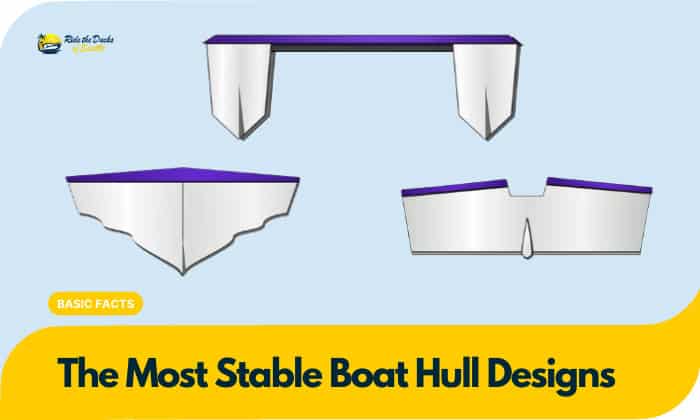
The battle for the most stable boat hull designs is a tossup between multihulls (i.e., catamarans, trimarans, and pontoons) and deep Vs. Not far behind are flat-bottomed vessels, though they are only stable in calm waters, thus, limiting their use to inland waterways.
Hence, the most stable boat design hinges on the vessel type and intended use vis-à-vis operating and environmental conditions.
Keep reading to learn more about different boat hulls, especially the most stable ones.
Table of Contents
1. Multihulls
2. monohulls with deep keel, 4. flat-bottomed hull, 1. engine mount, 2. trim angle, 4. weight distribution, 5. propellers, other notable boat hull types, what hull design is the most stable.
Manufacturers designing a boat hull always consider the boat’s purpose and the hull’s functional design. Does the hull “ride” on top of the water, or does it displace water?
As the name implies, a displacement hull allows the vessel to push against the water. Hence, these hulls “displace” water and are “slower” than boats with “planing” hulls.
The sailboat hull design is an example of a displacement type. It might be slower than powerboats, but sailboats are very stable.
Does that mean displacement-type hulls are stable? In general, yes, they are very steady, even in treacherous waters. However, some factors can also influence vessel stability.
Good boat designs for maximum stability are condition-specific. As a rule, you can expect a deep-V-hulled boat to be more suitable for rough water adventures than a multi-hulled vessel.
However, different situations call for different solutions. Let us look at different stable hull designs to appreciate our point.

The most reliable and stable boat hull design involves at least two hulls in a single vessel.
Examples of multihulls are sailboats (i.e., catamaran and trimaran) and powerboats (i.e., dory and cathedral boats).
However, multi-hulled sailboats are not ideal in extreme waves. Agility can be a concern, too. The good news is that these vessels can take a beating and never capsize.
It is worth pointing out that multihull power boats are less stable than their sailboat counterparts. However, they excel in moderate chops.
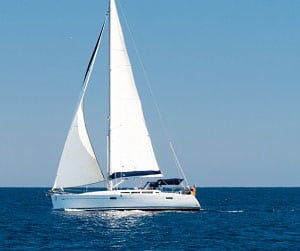
Although keelless displacement hulls can roll easily, they are more reliable, buoyant, and comfortable. The ride quality is super smooth, especially in calm waters. Their exceptional buoyancy allows these boats to carry heavy loads.
Unfortunately, their rolling tendencies can be disastrous in rough waters. Adding an extended keel to the boat hull shape changes these vessels’ instability in extreme weather.
So, if you want to learn how to design a highly stable, ocean-going displacement-type hull boat, you might want to extend the keel as long as possible.
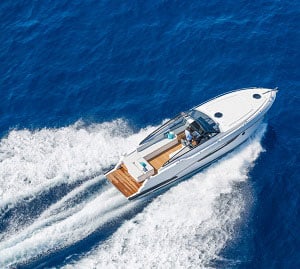
Deep V-shaped hull boat designers draw inspiration from a sailboat’s deep keel hull design for exceptional stability in the roughest waters. Although shallower than a sailboat’s keel, the deep-V combines a planing hull’s speed and a displacement boat hull’s ride comfort and stability.
Deep-V boats are a favorite of coastal anglers, allowing them to catch prey near the coast. These boats are also ideal in inland waterways with low to moderately high waves.
It cannot match a multi-hulled vessel’s stability, since a deep-V boat remains a planing hull.

The most stable small boat you can find has flat-bottomed hulls (i.e., jon boats, dories, gondolas, rafts, and pontoons). A flat and wide bottom is the perfect boat design for holding weight, allowing the vessel to “sit” on the water with exceptional stability.
Unfortunately, you might have the most stable fishing boat, but it can swamp and capsize even in slightly wavy waters. These vessels are only suitable in calm inland waterways.
The following table summarizes the most stable boat hull designs in their ideal environments. Please note that putting any vessel type into a different situation can compromise its stability.
| Very stable in all weather conditions (except very large waves), regardless of location | |
| Very stable anywhere, even in areas with large waves | |
| Very stable in lakes, rivers, and seas, with low to moderately high waves | |
| Very stable in ponds, lakes, rivers, canals, and other inland waterways, with calm zero-wave waters |
Moreover, we summarized a “rule of thumb” to observe when designing or building a stable watercraft. The boat’s speed, area underwater, and width have a direct relation to its stability. In other words, slower boats with wider bodies and a larger submerged bottom area are more steady.
Other Parameters to Determine the Boat’s Performance
Let us look at some parameters influencing a boat’s performance vis-à-vis stability.
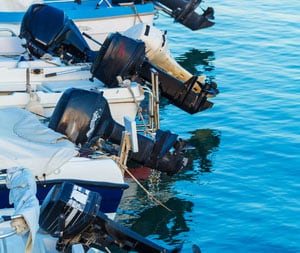
Boats with inboard engines do not have issues with stability because the manufacturer already took this issue into thoughtful consideration. However, the case for outboard motors is different.
How you mount the outboard motor can impact the vessel’s stability. Two high or low will lead to increased drag or cavitation. Twin outboards also tend to offer more steadiness than single-engine outboards.
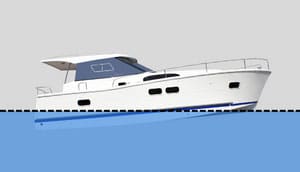
An outboard motor’s trim angle can also influence the vessel’s stability. The trim angle refers to that imaginary line between the propeller shaft and the boat’s bottom.
The ideal trim should be parallel to the waterline, allowing the boat to operate most efficiently. A motor trimmed down can lead to drag, while a trimmed-up engine can produce porpoising and instability.
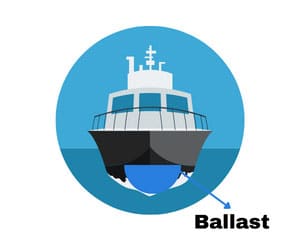
Submarines have ballast tanks, allowing them to achieve buoyancy when on the surface and remain submerged. Large cruise liners and container ships also have this element to improve their stability.
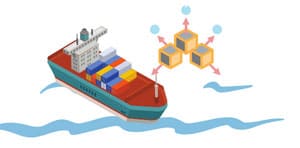
Cargo, equipment, passengers, fuel, and supplies have weight. These factors push the ship into the water, much like gravity pulls us to the ground. Hence, ensuring a uniform weight distribution is necessary for maximum vessel stability.
Ship crews must secure movable items to prevent weight creeps and shifts in severe storms and high waves.
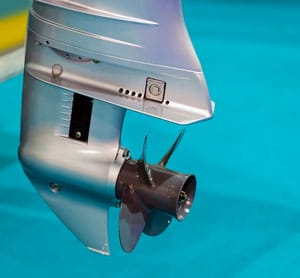
The correct propeller design is necessary for ensuring optimum thrust through the water, guaranteeing ride comfort and stability.
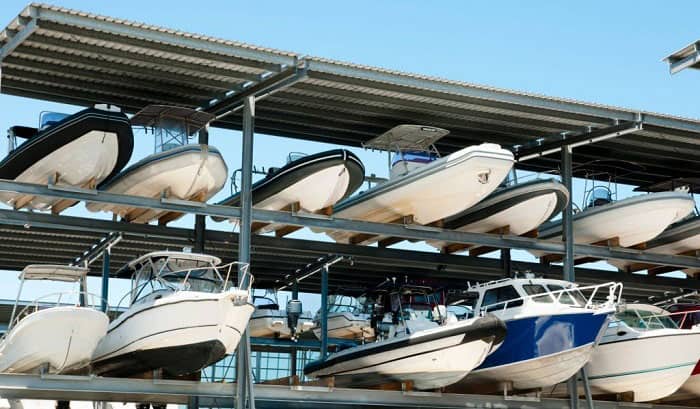
You already know the most stable hull designs across varying conditions. Of course, these are not the only boat hull shapes boaters should know. The following are other noteworthy hull types.
1. Displacement Hulls
As mentioned, displacement-type hulls are a stable design, especially with a deep keel. These vessels can carry a heavy load and move in water slowly.
Unfortunately, these vessels must consume more fuel or energy to “push” against the water. Examples are trawlers, cruise liners, tugboats, and sailboats.
2. Planing Hulls
This hull type is also stable at low speeds, like displacement hulls. Their principal advantage over displacement hulls is their speed. These boats “rise” high on a plane to minimize water resistance, allowing them to blitz. However, they are vulnerable to strong winds.
Powerboats are excellent examples of vessels with planing hulls .
3. Semi-displacement Hulls
Boats with this hull design combine displacement-type stability and a planing hull’s speed and are a good middle ground for those who can’t choose between the two.
You will feel safer with the boat’s stability at low speeds while being able to reach 10 to 20 knots.
4. Round-bottomed Hulls
Canoes are a perfect example of a boat with a round bottom. It is a displacement-type hull, allowing the vessel to give users a smooth and comfortable ride.
The issue with these boats is that they are highly unstable and prone to rolling and capsizing. Stepping into these round-bottom boats can be tricky.
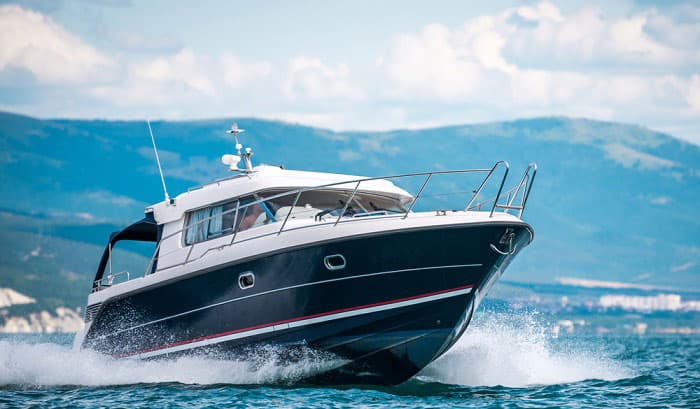
What are strakes and chines?
Strakes are elongated flat strips boat designers include in the vessel’s bottom section. Their principal purpose is to minimize swamping from unnecessary water sprays. Deflecting the water offers some degree of stability and lift.
Meanwhile, chines are sharp angular changes in the boat’s hull cross-section.
Reverse chines improve overall vessel stability by maintaining the watercraft’s equilibrium at the keel. You can pilot the boat at break-neck speeds, and it will remain stable. Boaters will also experience a smoother and more comfortable ride, regardless of speed.
What is the most efficient boat hull design?
Planing hulls are the most efficient because they can “cut” through the water with minimal resistance, allowing the boat to consume less fuel than a vessel with a displacement-type hull.
This hull design is the polar opposite of a displacement type. The latter “forces” its way through the water, requiring more energy to move. Unfortunately, it is still slow even with a boost in power, making a displacement-type less efficient than a planing hull.
The most stable boat hull designs are multihulls and deep Vs. Flat-bottomed boats and monohulls with very deep keels are also in the running for exceptional stability. However, multihulls are the steadiest among these four hull types because they are reliably stable in almost any weather.
Broader and flatter hulls are more stable than narrow and angled or rounded designs. Moreover, displacement hulls are steadier in rough waters than planing hulls (meant for speed).
The key takeaway is no single hull design can be the most stable across all water and environmental conditions. Everything depends on its design and use.

Ten years of enjoying countless trips on boats never made me love them any less! So I am here to put all those experiences into good use for other boaters who want to have a safe and fun trip with their friends and families.
672 Wine Club
- Motorcycles
- Car of the Month
- Destinations
- Men’s Fashion
- Watch Collector
- Art & Collectibles
- Vacation Homes
- Celebrity Homes
- New Construction
- Home Design
- Electronics
- Fine Dining
- Aston Martin
- Dubai Tourism
- Gateway Bronco
- On Location – Olympic Games Paris 2024
- One&Only
- The Ritz-Carlton, Kapalua
- St. Regis Costa Mujeres Resort
- Sports & Leisure
- Health & Wellness
- Best of the Best
- The Ultimate Gift Guide
From Solar-Powered Catamarans to Giant Sailing Yachts: The 12 Most Innovative Boats on the High Seas
These yachts are shaping the future of luxury boating., julia zaltzman, julia zaltzman's most recent stories.
- The 7 Most Exciting New Superyacht Marinas in the World
- This Boatmaker Builds 1960s-Inspired Cruisers With a Modern Twist. Here’s How.
- This 150-Foot Fishing Trawler Was Transformed Into a Rugged Explorer Yacht
- Share This Article

Yachts that make you look twice. That’s what our round-up of future-forward superyachts on the water today make us do. From aft decks dedicated to the ultimate helipad to silent hybrid cruisers, and even optical illusion design, it’s a rubbernecker’s paradise of top notch amenities and visionary thinking all rolled up into one dynamic yacht package. Whether you’re a salty sailor at heart or keen on speed machines, here we identify eight innovative vessels that will make you want to hop aboard without a second thought.
Feadship 312-foot ‘Bliss’

Launched in May 2021, Bliss has the Dutch shipyard’s all-new hybrid propulsion system. Designed and engineered in partnership with De Voogt Naval Architects, the diesel-electric hybrid system is paired with Polar Code compliance, meaning guests can cruise the more sensitive Polar regions with greater efficiency and as light a footprint as possible. Welcoming nine guests in an interior designed by Remi Tessier, the 312-foot world traveler packs true go-anywhere capabilities, along with a gym, wellness space, a pool and a convertible helideck.
Royal Huisman’s 184-Foot Sailing Yacht ‘Aquarius’

When design simplicity meets cutting-edge technology, the result is 184-foot ketch Aquarius . Built for an owner who likes to race and explore in equal measure, the Royal Huisman sailing yacht shows how performance and classic design do not have to be mutually exclusive. Fast yet easy to sail, Aquarius has a ketch rig developed in collaboration by the yard, its sister company Rondal, and Dykstra Naval Architects. She pairs 9,843-square-feet of sails with the latest in navigational aids to be a world explorer. Classic teak decking and good seakeeping qualities make her a true sailor’s yacht.
Heesen 262-foot ‘Galactica’

The 262-foot Galactica, built by Dutch shipyard Heesen in 2022, rewrites the rules of engineering. The owner’s brief requested fast and big, which led to an all-aluminum build to keep weight down and achieve speeds close to 30 knots, and a newly patented “backbone” for strength and rigidity. Developed in partnership with Dutch hydrodynamicists Van Oossanen, Galactica ’s fast displacement platform is created using two long, flat metal plates that are joined together by a vertical plate in the middle. This prevents the hull from flexing in water. Four MTU engines deliver 19,000-hp, and the addition of a fully-certified helipad means no place is off limits.
Ulstein Verft’s 290-Foot Motor Yacht ‘Olivia O’

Olivia O is a yacht that means business. Robust in every way, she is owned by a commercial shipping magnate with a love for industrial boats. Built by Norwegian shipyard Ulstein Verft Olivia O ’s rustic appeal is exemplified by the use of metal in the Espen Øino-designed interior, from windows with steel borders to corridors with painted metal ceilings. On water, she is defined by Ulstein’s trademarked X-Bow, which was originally designed for use on offshore vessels. Olivia O is the first yacht to ever feature it. Launched in 2020, she bridges the gap between luxury superyacht and authentic rugged explorer.
Oceanco’s 350-Foot Sailing Yacht ‘Black Pearl’

Scooping the top spot for largest DynaRig sailing yacht in the world, Black Pearl is designed by Nuvolari Lenard (assisted by Villate Design). A tri-deck sailing yacht, she boasts three revolutionary 70m DynaRig carbon masts and a sailing system designed by Dykstra Naval Architects. What’s more impressive is that all 2,900sqm of her black, highly distinctive sails can be set in a rapid seven minutes, and all at the push of a button. Her hybrid propulsion system, and other environmental onboard systems, such as waste heat recovery, propel her among a new generation of environmentally sustainable, and highly efficient vessels.
Benetti 351-foot ‘Lana’

One of the most exciting additions to the gigayacht club, Lana was built to discover the four corners of the globe. One of the largest yachts delivered by the Italian builder, Lana is powered by an unusual Rolls-Royce hybrid-electric propulsion, delivering fuel efficiency and long-range cruising. Delivered in 2020, she boasts a large pool on the sun deck that comes with its own heating system, meaning guests can enjoy a splash wherever she cruises. A waterside beach club with folding terraces creates a floating apartment at sea, equipped with a Hammam, massage room, and a dedicated professional therapist makes up one of the 33 full-time crew.
Bilgin 262-foot ‘Tatiana’

Launched in 2020, Tatiana the new flagship yacht from Bilgin Yachts heralded the arrival of cutting-edge, metal-hulled Turkish-built superyachts. With an internal volume of 1,689 gross tons—more than twice that of Bilgin’s previous flagship— Tatiana is defined by long overhangs and a sweeping sheer line penned by Unique Yacht Design. But it’s the 1,200-square-foot lower deck beach club with its two fold-down sea terraces that steal the limelight. The centerpiece is a 30-foot long, freshwater swimming pool. A second glass-bottomed pool on the main deck bathes the beach club below in dappled sunlight. When the shell doors are closed, guests can pamper themselves in the spa that enjoys a hammam, massage room and wet bar with a backlit floor.
Oceanco’s 360-Foot ‘Kaos’ (ex-‘Jubilee’)

The mighty motor yacht Kaos , formerly known as Jubilee , was built by Dutch shipyard Oceanco. For her Moscow-born exterior designer Igor Lobanov, she represents the need to always have faith in your own vision. Topping both length and volume records in the Netherlands at the time of her launch, Kaos’s layered double decks—the very thing that originally put so many people off the concept—are, for Lobanov, the key to the design’s success. “When you’re travelling on a small tender it gives the scale of a bigger yacht, but as you get closer to the yacht you realize her actual size. That’s what we wanted to achieve. We wanted it to be a design trick.” The illusion has been created with smoked glass panels between the decks that run the length of the superstructure and areas of teak decking inaccessible to guests, but which from a distance look like genuine deck spaces. Perfection.
Nobiskrug’s 262-Foot ‘Artefact’

Renowned for a truly striking exterior before she had even hit water, Artefact is the latest launch from German shipyard Nobiskrug. Designed by Gregory C Marshall, she boasts an extensive use of both structural and decorative glass, and includes a number of new technological and engineering features to minimise its environmental impact. These include a large battery storage system which allows the boat to operate without internal combustion engines for a limited time. The biggest-volume 262-foot superyacht in the world, she is also among the first superyachts to meet IMO Tier III emissions regulations and features an innovative diesel-electric propulsion system developed with electric motor manufacturer ABB.
Sanlorenzo 112-foot SX112

As the flagship of Sanlorenzo’s SX crossover line, the premise of the 111.5-foot SX112 is to introduce a new way of living at sea. Described by the Italian builder as a “floating building,” the innovative design enhances guests’ onboard connectivity to the outdoors. It’s achieved by reducing barriers to the outside and closer indoor-outdoor connection. Greater emphasis has been placed on the stern, which has a spacious internal beach area with easy access to the water and beyond, and elsewhere, retractable terraces maximize the outside connection. Exterior designed by Zucccon International, the SX112 gifts superyacht living space typically found on a much larger yacht aboard a compact platform.
Sunreef 78.7-foot 80 Eco

Is there anything more responsible than an electric sailing yacht that creates renewable energy? We don’t think so. The Sunreef 80 Eco is a sustainable transatlantic catamaran that combines electric propulsion with superyacht living and reliable sailing performance. Designed for long offshore navigation, it even generates its own electricity while under sail via a hydro generation system. A total of 1,765-square-feet of ultra-lightweight composite-integrated solar panels are spread across the mast, boom, superstructure, Bimini and hull sides generating up to 32kWp. Inside, the 78.7-foot multihull enjoys living quarters and accommodation for up to 10 guests, thanks in part to a 38-foot beam. It’s like a luxury pied-à-terre on water.
McConaghy Boats’ 140-Foot Trimaran ‘Adastra’

Costing over $20 million to build when launched in 2012, the owner of this custom-built transatlantic trimaran—shipping magnate Antony Marden—has cruised the seven seas for seven years turning heads everywhere he goes. Adastra ’s space age design comes from the boards of British studio Shuttleworth Design and was built in China by McConaghy Boats. Her speedy and light-weight hull is made from a super-strong e-glass/Kevlar foam sandwich, while her superstructure is made up of carbon fiber with a lightweight Nomex honeycomb core. Currently for sale, she provides the rare opportunity to own a yacht with “amazing seaworthiness” and looks like nothing else out there right now.
This story was originally published on August 7, 2020. It has been updated to reflect the most innovative vessels on the water as of the current publishing date.
Read More On:
- Dream Machines 2022
- Sailing Yacht
- Silent Yachts
More Marine

This New 94-Foot Foiling Catamaran Can Fly Across the Seas at Over 50 Knots

This New 170-Foot Sailing Yacht Has a Jacuzzi Hidden Beneath Its Mast

Maserati’s First Electric Boat Delivers Style and Fun on the Water—We Took It for a Spin

The Ritz-Carlton’s Massive New 790-Foot Megayacht Just Hit the High Seas

Meet the Wine Club That Thinks Differently.
Receive editor-curated reds from boutique California producers four times a year.
Give the Gift of Luxury
Latest Galleries in Marine

‘Reposado’ in Photos

Admiral Quaranta Superyacht in Photos
More from our brands, how the ftc could complicate the saks-neiman’s merger, caitlin clark, sabrina ionescu opt out of wnba 3-point contest, first trailer for ‘futurama’ season 12 sees more cross-universe adventures (tv news roundup), academy museum of motion pictures to recreate ‘2001: a space odyssey’ stargate this fall, the best yoga mats for any practice, according to instructors.

The Most Stable Boat Hull Designs
Boats are an essential part of life, whether you use them as a recreational pastime or a mode of transportation. Having a boat that is stable and secure is essential to a safe and enjoyable time spent on the water. The hull design is the most important factor when considering the stability of a boat, so it is important to understand the various designs and how they affect stability.
Table of Contents
The most stable boat hull designs are generally those with a wide beam and a deep V‑shaped hull. Wide beams help to create a large base of stability, while the V‑shaped hull helps to reduce drag and provide a smooth ride in choppy waters. Catamarans, pontoon boats, and center console boats are all examples of popular hull designs that are known for their stability.
Flat Bottom Hull: Flat bottom hulls are known for their exceptional stability, especially in calm and shallow waters. They have a large surface area in contact with the water, providing excellent stability at rest and while underway. Flat bottom hulls are commonly used in jon boats, skiffs, and some small fishing boats.
Pontoon Hull: Pontoon boats feature a multi-hull design with two or more pontoons, providing excellent stability on the water. The wide and buoyant pontoons offer stability even in rough conditions, making pontoon boats a popular choice for leisurely cruising, fishing, and entertaining.
Catamaran Hull: Catamaran hulls consist of two parallel hulls connected by a deck, providing excellent stability and load-carrying capacity. Catamarans are known for their stability in rough seas and high speeds, making them a preferred choice for offshore cruising and racing.
Cathedral Hull: Cathedral hulls have a V‑shaped bottom with multiple hulls or sponsons extending from the centerline. This design provides excellent stability and maneuverability, making it suitable for various water activities, including fishing, water skiing, and cruising.
Deep‑V Hull: Deep‑V hulls feature a V‑shaped bottom that extends from bow to stern, offering excellent stability and performance in rough water conditions. This hull design is commonly found in offshore fishing boats and high-speed powerboats.
Other boat hull designs that are known for their stability include the modified‑V hull, the semi-displacement hull, the round-bottom hull, and the full-keel hull. Modified‑V hulls are a combination of a V‑hull and a flatter bottom, which helps them remain stable in both calm and choppy waters. Semi-displacement hulls are designed to cut through the water while maintaining good stability. Round-bottom hulls are usually used on smaller boats and are designed to provide a smooth ride in choppy waters.

Hull Shapes
The shape of a boat’s hull is the most important factor in determining its stability. There are four basic hull shapes: flat-bottom, round-bottom, semi‑V, and V‑hull. Each of these hull shapes has its own advantages and disadvantages.
Flat-Bottom Hulls
Flat-bottom hulls are the simplest and easiest to construct, making them the most common in small boats. They are also the most stable in calm water, as they have a low center of gravity and a wide bottom that increases their stability. However, flat-bottom hulls are not suitable for larger boats or in choppy water, as their lack of shape and their wide bottom makes them unstable.
Round-Bottom Hulls
Round-bottom hulls are more curved than flat-bottom hulls, which helps them to slice through waves more easily and increases their stability in choppy water. They also have a higher center of gravity, making them less stable in calm water. They are often used on larger boats, as they are more suitable for deep-water sailing.
Semi‑V Hulls
Semi‑V hulls are a combination of the flat-bottom and round-bottom hulls. They have a flat bottom with a slight curve to the sides, which helps them to perform better in choppy water. They have a moderate center of gravity, making them more stable than round-bottom hulls in calm water, but less stable than flat-bottom hulls.
V‑hulls are the most complex of the four hull shapes. They have sharp curves to the sides, which help them to better slice through waves and increase their stability in choppy water. They also have a higher center of gravity, making them less stable in calm water. V‑hulls are often used on larger boats, as they are better suited for deep-water sailing.
Hull Materials
The material used to construct a boat’s hull also plays a role in its stability. Different materials can affect a boat’s weight distribution, which in turn affects its stability. The most common materials used to construct boat hulls are wood, fiberglass, and aluminum.
Wood hulls are the most traditional and have been used for centuries. They are lightweight and have excellent stability in calm water, but are not suitable for deep-water sailing. Wood hulls also require more maintenance than other materials, as they can easily be damaged by water and need to be treated regularly.
Fiberglass Hulls
Fiberglass hulls are the most common material used in modern boats. They are lightweight and durable, making them suitable for both calm and choppy waters. They are also relatively easy to maintain, as they do not require as much treatment as wood hulls. If You want to know more check our guide on how to repair fiberglass boat hull from outside .
Aluminum Hulls
Aluminum hulls are the strongest and most durable of the three materials. They are also the heaviest, which makes them less suitable for deep-water sailing. However, they are extremely stable in calm waters and require little maintenance.
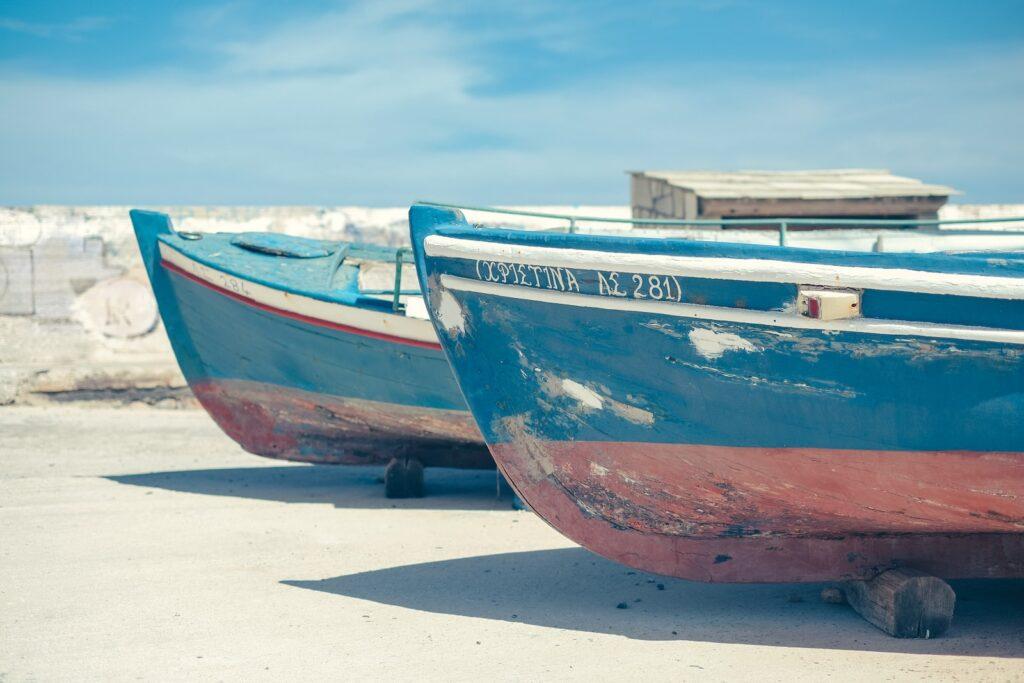
Design Considerations
When choosing a boat hull design, it is important to consider the type of boat and its intended use. If the boat is intended for deep-water sailing, then a V‑hull or round-bottom hull may be the best option. If the boat is for use in calm waters, then a flat-bottom or semi‑V hull would be more suitable. It is also important to consider the type of material used to construct the hull, as each material has its own advantages and disadvantages.
Safety Features
Even the most stable boat hull design can be made more secure with the addition of safety features. These can include handrails, life jackets, and even an anchor. Handrails provide a secure grip on the boat and can help to prevent falls overboard. Life jackets are essential for any boat, as they provide additional buoyancy in the event of a fall overboard. An anchor can be used to secure the boat to the shore or sea floor, further increasing the safety of the passengers.
Maintenance
Regular maintenance is essential to ensure a boat’s hull remains in good condition. This includes checking and lubricating the hull regularly, inspecting for any signs of corrosion or damage, and cleaning the hull regularly . Proper maintenance will help to ensure the hull remains stable and secure for years to come.
The cost of a boat hull design can vary depending on the materials and labor involved. Wood hulls are the cheapest option, while fiberglass and aluminum hulls can be more expensive. It is important to consider the cost of the hull design when making a purchase, as a more expensive design may offer more stability and security.
What is the most efficient boat hull design?
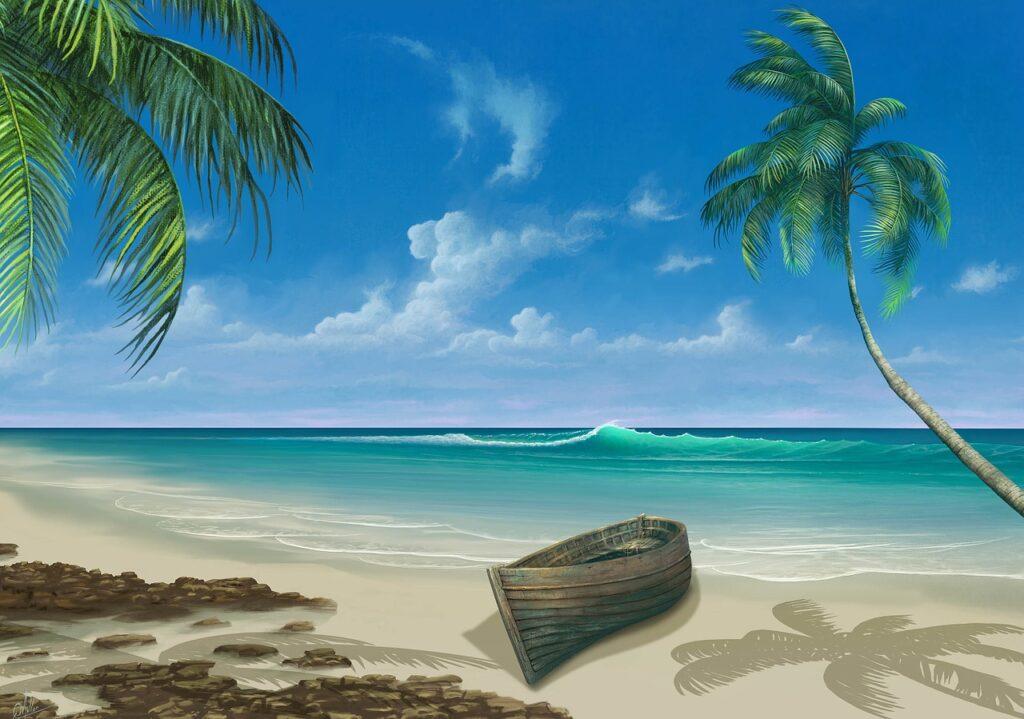
The most efficient boat hull design is one which is designed to minimize drag and maximize lift while still providing good stability and maneuverability. This usually requires a combination of factors such as the shape of the hull, the size and weight of the boat, the type of materials used, and the placement of appendages such as keels and skegs.
It also takes into account the type of watercraft it is intended for and the conditions in which it will be used. For example, a boat designed for rough waters may need a different type of hull than one designed for use in calm waters. Other considerations include the type of propulsion system being used and the desired speed of the boat. To achieve the most efficient design, the boat designer must use their knowledge of fluid dynamics and materials science to create the best possible combination of these elements.
What is the most stable boat hull design in rough water?
The most stable boat hull design in rough water is a deep - V hull . This design features a sharp angle at the bow , which slices through the waves , and a shallow angle at the stern , which provides more lift and helps to reduce the amount of water that spl ashes up against the hull . This combination of a sharp bow and shallow stern makes for a boat hull that is less likely to be affected by cho ppy waters and that is more stable in rough conditions .
It is also important to consider the cost of insuring a boat. Insurance can help to cover the cost of any repairs or replacements that may be necessary, which can be costly. Before purchasing a boat, it is wise to research the various insurance policies available to ensure you are adequately covered.
What is the most stable boat hull design?
The most stable boat hull designs include flat-bottomed hulls, pontoon hulls, and cathedral hulls. These designs offer excellent stability in different water conditions.
Are deep‑V hulls more stable in rough waters?
Yes, deep‑V hulls are known for their stability in rough waters. The V‑shaped hull allows the boat to cut through waves, providing a smoother ride and increased stability.
Are pontoon boats stable?
Yes, pontoon boats are known for their exceptional stability. The wide and buoyant pontoons offer excellent stability, making pontoon boats popular for leisurely cruises and other on-water activities.
Related posts:
Leave a Reply Cancel reply
Your email address will not be published. Required fields are marked *
Save my name, email, and website in this browser for the next time I comment.

The Most Stable Hull Design Of A Boat
Walking by a marina and looking at all the different kinds of boats have you ever wondered which of these will be the most stable while plying through the rough sea? which boat hull design is the most stable?
The most stable hull design is directly related to the hull of a boat. In most circumstances, multihulls and deep-V hulls are thought to be the most stable hull types. Deep hulls typically perform better in rough seas than multihulls.
Knowing what you’re intending to use the boat for can help you choose the most stable hull. But just to be clear, the catamaran or multi-hull boat has the most stable hull and is used in the most practical situations.
The flat-bottom boat, however, has the most stable boat hull structurally because of its wide platform and significant water displacement.
Let us get into more details to find out more!
One of the most crucial components of a floating watercraft is the boat’s hull. In actuality, it is the area that has direct contact with the water and aids in keeping the whole boat afloat.
It is completely submerged in water up to the waterline and covers the entirety of the boat’s lower shell. This is why boat owners are so interested in choosing the most stable boat hull design.
The boat’s hull ensures not just its stability but also its effectiveness, performance, and, in some situations, speed. Different boats have different hull designs. However, there are several broad categories into which specific designs can be divided. These include multihulls, vee bottoms, flat bottoms, and round bottoms.
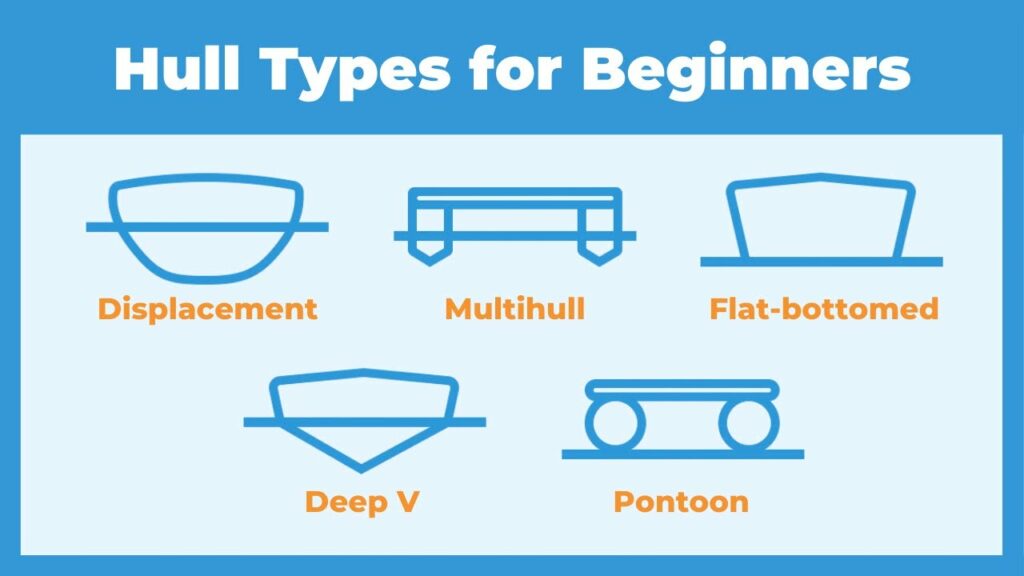
The Different Types Of Hull Designs
Hull designs can be typically classified into the following based on different parameters like deadrise angles, the number of hulls, and so on.
The Flat Bottom Hulls
The flat bottom hull is thought to be the most stable boat hull design usually found in smaller vessels. Due to its flattened bottom, this type of design gives greater stability than the others. Small boats with flat bottom hulls, like small fishing boats, are utilized in shallow waters, typically in rivers or lagoons
These boats are typically used by hunters and anglers because of their practically box-shaped hulls. As a result of its form, they draft lesser which keeps the boat from hitting the ground. But compared to other boat designs, flat-hull boats have drawbacks. In choppy or deep waters , these boats are less stable. When they reach bigger waves, their flattened bottom makes them prone to flipping.
Multihulls are vessels with two or more vee hulls, which adds additional stability. Catamarans , trimarans, and other hybrid boats are the most prevalent multihulls. All things considered, multihulls are the most stable type of boat hulls since they not only offer stability but also a nice ride through open water. Multihulls also provide more room than their monohull counterparts.
The hull of a catamaran is the most stable and has the widest range of uses in many types of water. This is so that the catamaran can be built in a variety of ways to suit various types of water.
This means that although a pontoon boat , a catamaran sailboat, and a Power Cat are all catamarans, they have all been specifically created to serve a certain function.
Let’s first examine the benefits of a hull designed like a catamaran. In addition to being quite stable, catamaran hulls can be modified to accommodate a variety of nautical activities and styles.
A dual-hulled boat has fewer design restrictions than a hull with a Deep-V profile. Weight distribution, length, width, and hull depth of a boat can all be modified to suit the needs of the owner. Because of this, the Hull designs can be very varied. They could take the form of a catamaran sailboat or something as basic as a round tube, like on a pontoon boat.
Power cats travel at very high speeds while maintaining stability and mobility in choppy waters thanks to their hull design. Most catamaran-style hulls have significantly more usable space.
Since the weight distribution may be changed, it is practically possible to construct a house on a platform that is set upon the two hulls. In comparison to a V-bottom boat, you may expand the beam even in speedboats to optimize space with little performance loss.
You may be wondering what drawbacks the catamaran hull has given all of these benefits. To be honest, I don’t think there are many. The only drawback that comes to mind is that, due to this hull’s wider stance, it may be a little uncomfortable if trapped broadside in stronger waves.
Due to its stability, the boat may knock you about if you are not careful. The only other disadvantage is that transferring larger boats may be quite expensive when it comes to trailers and that moving boats with this sort of hull can be difficult at times.
V-Bottomed Hulls
The Deep-V and the Shallow-V are the two primary types of V-Bottom style hulls. They are similar in most respects. As you have probably already surmised, the key distinction is the height at which the hull emerges from the water and this is basically to the higher deadrise angles.
Both are secure, but their circumstances are distinct. For example, Deep-V hulls typically produce larger boats. Unlike shallow-V boats, which are typically smaller vessels.
Shallow-V hulls are less able to manage deeper, more unpredictable waters than Deep-V hulls. A Shallow-V will cut through a wave, but it will typically ride higher on the wave. This is because of the deep wedge shape of the hull, which allows it to slice through rougher water.
The Shallow-larger, V’s flatter bow is what causes this. The Shallow-V will give you a noticeably rougher ride in choppy water, even though both of these will cut through waves better than a flat bottom and some Catamarans.
This style of the hull has great advantages while the boat is moving, such as stability and the ability to cut through rough water, but stability is not the best when stopped.
Weight distribution needs to be the owner’s top priority on a V-style hull. In smaller boats, even moving from one side to the other can cause the boat to pitch and yaw. It can also affect how the boat handles if there is too much weight on one side.
Once more, the boat’s pitch and yaw have no negative effects when it is moving. This becomes a characteristic of the boat’s handling when it is going. One thing this enables is a smaller turning radius .
Round Bottom hulls
These hulls are essentially exceedingly smooth with no, or very few, sharp edges. These hulls are designed to have the least amount of drag and the most buoyancy possible. To keep the boat upright, these hulls typically need a weighted keel . This hull is more stable the lower the center of gravity . That is why you often see sailboats with a heavy fin on the bottom of the vessel.
What Are The Other Parameters Which Make A Boat Stable Other Than The Hull?
The following are some of the key aspects which determine the performance of a vessel,
Engine Mount And Optimum Trim Angle
In the case of outboard engines, the height of the engine mount is one of the key features in determining the performance of a vessel. If the engine is mounted too low the lower unit will cause additional drag and if the engine mount is too high there is the risk of propeller cavitation.
The boat’s engine will operate most effectively if it is trimmed, about parallel to its waterline when at rest, and not trimmed too up or down.
Weight Distribution
Proper weight distribution is the key to the vessel’s dynamics when underway. Ask your passengers to move if it is safe to do so that the weight is spread equally; it will make a difference.
Other than cargo, ballast can be added to a vessel to add stability. This is frequently done with ships. A ballast tank is a container that houses water within a boat, ship, submarine, or other floating structure. To balance the ship, water must enter and exit the ballast tank.
Propeller Selection
Selecting the right propeller is also a key aspect in making sure the power from the engines is effectively transferred by the propellers to deliver the required thrust force.
What you intend to use the boat for ultimately determines the hull style you should choose. Hopefully, the information in this post will make it easier for you to choose the right kind of boat. carefully consider the advantages and disadvantages of various boat kinds, your budget, and the types of water nearby. Only then will you be able to determine which option is best for you.

- Recent Posts
- Sustainable and Luxurious: Discovering Split’s Yachting Paradise – April 26, 2024
- MarineTraffic vs VesselFinder: Which Is Better Vessel Tracking Service? – February 14, 2024
- Port Costs: A Comprehensive Guide to Port Dues and Fees for Cargo Ships – February 12, 2024
About the author
I worked as an officer in the deck department on various types of vessels, including oil and chemical tankers, LPG carriers, and even reefer and TSHD in the early years. Currently employed as Marine Surveyor carrying cargo, draft, bunker, and warranty survey.
Leave a Reply Cancel reply
Your email address will not be published. Required fields are marked *
Save my name, email, and website in this browser for the next time I comment.
Latest posts

Marine Satellite Internet: How Ships Keep Connected
Some boaters take leisurely trips to the lake while others venture into the ocean, far removed from the rest of civilization. Thankfully, marine satellite internet helps ships stay connected.

What to Wear on a Boat
Sailing on a ship requires extensive preparation. In addition to understanding its components and how to operate it, people must also know what to wear on a boat.
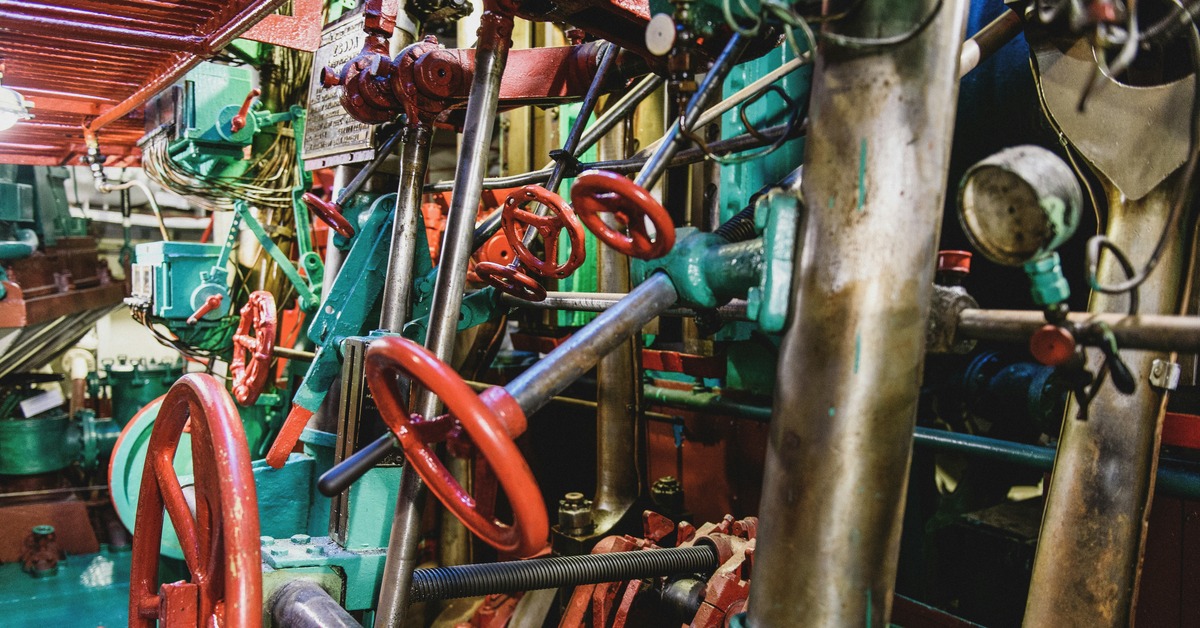
What Happens if a Ship Loses Power?
A power outage is among the worst issues for maritime professionals. What happens if a ship loses power?
- MarketPlace
- Digital Archives
- Order A Copy

Hull shape and stability
Boats can be split into two categories: the ones that dig holes in the water and the ones that travel on top. Race boats, runabouts, fast cruisers, sport fisherman and military patrol craft are part of the planing fraternity. A few racing sailboats and wind surfers fall into the same cult, but when all is said and done, it takes considerable energy to coax a hull onto a plane and it’s not easy to get that from a sail plan. Water’s hold on the hull comes from the double team effort of skin drag and wave making, phenomena experienced by all craft as they accelerate. Hull speed is defined as the point where the very crest of the bow wave is at the stem of the vessel and the crest of the stern wave is at the transom – in essence, the vessel is neatly tucked into the trough of a wave of its own creation. To get on a plane requires enough energy to break free of the stern wave and climb onto the crest of the bow wave shackling the effect of hydrodynamic lift (hull speed = 1.34 x square root of the design waterline length (DWL). Planing is a speed length ratio of 2 or greater).
Displacement cruisers (power and sail), merchant ships and small, low-powered recreation vessels, along with kayaks and rowing shells, make up the second category, one that favors hull shapes that avoid the desire to plane and emphasize an ability to slip through the water with as little resistance as possible. The issue of resistance to forward motion is comprised of several factors and, at low speed, skin drag reigns supreme. In short, water next to the hull adheres to the skin and a thin layer gets dragged along for a ride. Narrow, pointy-ended, round bilge craft with as little surface area submerged as possible afford the least drag in a displacement mode. The smoother and fairer the underbody of the craft, the less water gets towed along, and for decades coatings manufacturers have been looking for the magic touchstone in paint technology – a formula that lessens skin drag and actually makes a boat more slippery in the water.
Once a vessel starts to approach its hull speed, resistance from wave making becomes the biggest obstacle to progress. With enough power, any shaped hull can be thrust over the “hump” and launched onto a plane. But the real art in high-speed yacht design is balancing a vessel’s proclivity to plane with its behavior once on top of the water. Wide, flat-bottomed boats leap onto the surface but then tend to porpoise and pound, even in calm conditions. Juggling the influence of gravity, buoyancy, dynamic lift, drag and thrust is the design challenge, and small changes in things like trim angle can make a big change in performance. As a rule of thumb, the trim angle that seems to give the best performance is around 2° to 4°.
With fuel prices soaring, designers and builders are taking a second look at the hull shape, boat speed and the cruising efficiency of the vessels being built and those already in play. It’s no surprise that motor boats are least efficient when they are trying to climb over their own bow wave to get on a plane. It maximizes wave making, negatively impacts fuel consumption and decreases range. The half plane hull form/power package is a vestige from an era of inexpensive fuel and is hard to justify at current energy prices. The new trend is toward boats that plane at fairly modest speeds and can be throttled back and still remain on top of the water. There’s a resurgence of interest in fuel efficient, low-powered displacement hull shapes.
Catamarans came to the U.S. with masts stepped and sailors as the target market. Meanwhile, the Australians were running gas turbine-powered, high-speed multihull ferries across Jackson Bay and designers quickly recognized the fuel efficiency and decent load carrying ability of smaller renditions of these power cats. Their high beam-to-length ratio hulls didn’t suffer as much from wave making drag, and builders were cognizant of the ill effect of excess weight. The result was a variety of fuel-efficient workboats and recreational craft that are popular on the market today.
Staying afloat is a major desirable yacht characteristic, and stability has a big role to play in the process.
The Greek scientist and inventor Archimedes was ahead of his time when he acknowledged that buoyancy and displacement were correlated factors associated with the shape and behavior of objects floating in water, and that the weight of the water displaced by a floating object was equal to its weight. Since then, everyone involved with boat design has been keenly aware of buoyancy and weight, and how they relate to each other. The first part of our stability discussion involves the shape of a vessel and how it contributes to staying up right. A wide, short, hard chine skiff has an abundance of athwartship form stability – you can stand near the rail and not fear capsizing. This is a plus, but if you tried to row the boat there was so much skin drag from the wide flat bottom it was like rowing the dock. A longer, leaner, round bilge skiff would be reluctant to plane with a small outboard and would send you for a swim if you stood near the rail but would row like a dream. From these simple design comparisons you get a hint of the dilemma faced by every naval architect dealing with the art of design compromise.
Let’s hypothetically deck over the small 9-foot skiff, make it watertight and discover another factor associated with form stability. We have recognized that, all things being equal, the wider a boat the more it resists heel. However, if it heels to a point where the center of gravity and the center of buoyancy line up vertically, we have the proverbial nickel standing on its edge – the vanishing point of positive stability. The stability curve of a wide boat initially looks good but the large area under the negative portion of the curve is disconcerting. The form stability associated with buoyancy derived from a wide beam now works to keep the vessel in the inverted position. To mitigate the effect of stability in the negative range, or in simple terms a boat’s desire to stay upside down, designers introduce shapes and structures that create a secondary righting moment.
This extra boost to stability is best seen in sailboats in the form of ballast keels and their heavy pendulum-like influence that resists the forces of wind and sea. Like any teeter-totter relationship, the effect of ballast has to do with both the weight involved as well as its distance from the fulcrum – in this case, the center of buoyancy. Designers calculate the vessel’s vertical center of gravity (CG), a point within the vessel around which its weight is evenly distributed. The lower the CG, the more stable the vessel becomes and the higher in degrees its limit of positive stability.
Adding a large cabin structure can also change the heeled center of buoyancy and, at extreme angles, may contribute to the vessel’s self-righting ability. However, the structure also raises the CG and often adds the issue of down flooding created by placing large vulnerable windows in contact with violent seas. Tradeoffs have to be carefully considered when designing oceangoing powerboats. The concept of scantings, or the overall strength of a vessel, comes into play at this point. For example, an expeditionary craft designed and built to range into high latitudes is likely to endure more sea-induced stress and strain than the average weekend cruiser. Therefore, its range of stability, structural integrity and ability to avoid down flooding should be greater. In lay terms, it makes sense that the former be stronger and more resistant to capsize than the latter.
Too much of a good thing?
Seakindliness is another important design consideration and, ironically, when it comes to stability there is a down side to too much of a good thing. A case in point is how excess beam creates a snap roll effect that can be more disconcerting than a slower pendulum-like swing through a greater degree range. The flat, wide bottoms of catamarans and some monohulls offer significant initial stability. Their powerful righting arm associated with the large distance between the at-rest CG and CB creates more acceleration when returning a vessel to its upright position than is found with narrower beam vessels. This jerky motion, especially when navigating beam seas, can be disconcerting.
Every vessel is an amalgam of ideas, some working in complement with each other, while others have a parasitic effect. Windage is one of the latter and as cabin accommodations grow, so does the stack-of-boxes look of the boat. This is not a subjective concern over aesthetics, it’s a safety issue associated with excess surface area and the influence of wind pressure on light displacement vessels with very little hull surface submerged. If the vessel is primarily a live-aboard accommodation, and the need for performance is little more than ambling from protected estuary to protected estuary in benign weather, the windage issue may be of less consequence.
Moderation has proven to be the naval architect’s friend and avoiding excess, whether it’s beam, cabin size, horse power or window size, makes sense. Good design is about harmony, and the naval architect’s role was best explained by poet John Masefield when he described a schooner as: “Built out of so much chaos brought to law.” n
By Ocean Navigator

- News & Views
- Boats & Gear
- Lunacy Report
- Techniques & Tactics
MODERN SAILBOAT DESIGN: Quantifying Stability
We have previously discussed both form stability and ballast stability as concepts, and these certainly are useful when thinking about sailboat design in the abstract. They are less useful, however, when you are trying to evaluate individual boats that you might be interested in actually buying. Certainly you can look at any given boat, ponder its shape, beam, draft, and ballast, and make an intuitive guess as to how stable it is, but what’s really wanted is a simple reductive factor–similar to the displacement/length ratio , sail-area/displacement ratio , or Brewer comfort ratio –that allows you to effectively compare one boat to another.
Unfortunately, it is impossible to thoroughly analyze the stability of any particular sailboat using commonly published specifications. Indeed, stability is so complex and is influenced by so many factors that even professional yacht designers find it hard to quantify. Until the advent of computers, the calculations involved were so overwhelming that certain aspects of stability were only estimated rather than precisely determined. Even today, with computers doing all the heavy number crunching, stability calculations remain the most tedious part of a naval architect’s job.
There are, however, some tools available that you can use to make a sophisticated appraisal of a boat’s stability characteristics. If you dig and scratch a bit–on the Internet, or by pestering a builder or designer–you should be able to unearth one or more of them.
Stability Curves and Ratios
The most common tool used to assess a boat’s form and ballast stability is a stability curve. This is a graphic representation of a boat’s self-righting ability as it is rotated from right side up to upside down. Stability curves are sometimes published or otherwise made available by designers and builders, but to interpret them correctly, you first need to understand the physics of a heeling sailboat.
When perfectly upright, a boat’s center of gravity (CG)–which is a function of its total weight distribution (i.e., its ballast stability)–and its center of buoyancy (CB)–which is a function of its hull shape (i.e., its form stability)–are vertically aligned on the boat’s centerline. CG presses downward on the boat’s hull while CB presses upward with equal force. The two are in perfect equilibrium, and the boat is motionless. If some force heels the boat, however, CB shifts outboard of CG and the equilibrium is disturbed. The horizontal distance created between CG and CB as the boat heels is called the righting arm (GZ). This is a lever arm, with CG pushing down on one end and CB pushing up on the other, and their combined force, known as the righting moment (RM), works to rotate the hull back to an upright position. The point around which the hull rotates is known as the metacenter (M) and is always directly above CB.
The longer the righting arm (i.e., the larger the value for GZ), the greater the righting moment and the harder the hull tries to swing upright again. Up to a point, as a hull heels more, its righting arm just gets longer. The righting moment, consequently, gets larger and larger. This is initial stability. A wider hull has greater initial stability simply because its greater beam allows CB to move farther away from CG as it heels. Shifting ballast to windward also moves CG farther away from CB, and this too lengthens the righting arm and increases initial stability. The angle of maximum stability (AMS) is the angle at which the righting arm for any given hull is as long as it can be. This is where a hull is trying its hardest to turn upright again and is most resistant to further heeling.
Once a hull is pushed past its AMS, its righting arm gets progressively shorter and its ability to resist further heeling decreases. Now we are moving into the realm of ultimate, or reserve, stability. Eventually, if the hull is pushed over far enough, the righting arm disappears and CG and CB are again vertically aligned. Now, however, the metacenter and CG are in the same place, and the hull is metastable, meanings it is in a state of anti-equilibrium. Its fate hangs in the balance, and the least disturbance will cause it to turn one way or the other. This point of no return is the angle of vanishing stability (AVS). If the hull fails to right itself at this point, it must capsize. Any greater angle of heel will cause CG and CB to separate again, except now the horizontal distance between them will be a capsizing arm, not a righting arm. Gravity and buoyancy will be working together to invert the hull.
Stability at work. The righting arm (GZ) gets longer as the center of gravity (CG) and the center of buoyancy (CB) get farther apart, and the boat works harder to right itself. Past the angle of vanishing stability, however, the righting arm is negative and CG and CB are working to capsize the boat
A stability curve is simply a plot of GZ–including both the positive righting arm and the negative capsizing arm–as it relates to angle of heel from 0 to 180 degrees. Alternatively, RM (that is, both the positive righting moment and the negative capsizing moment) can be the basis of the plot, as it derives directly from GZ. (To find RM in foot-pounds, simply multiply GZ in feet by the boat’s displacement in pounds.) In either case, an S-curve plot is typical, with one hump in positive territory and another hopefully smaller hump (assuming the boat in question is a monohull) in negative territory.
The AMS is the highest point on the positive side of the curve; the AVS is the point at which the curve moves from positive to negative territory. The area under the positive hump represents all the energy that must be expended by wind and waves to capsize the boat; the area under the negative hump is the energy (usually only waves come into play here) required to right the boat again. To put it another way: the larger the positive hump, the more likely a boat is to remain right side up; the smaller the negative hump, the less likely it is to remain upside down.
Righting arm (GZ) stability curve for a typical 35-foot cruising boat. The angle of maximum stability (AMS) in this case is 55 degrees with a maximum GZ of 2.6 feet; the angle of vanishing stability (AVS) is 120 degrees; the minimum GZ is -0.8 feet
The relationship between the sizes of the two humps is known as the stability ratio. If you have a stability curve to work from, there are some simple calculations developed by designer Dave Gerr that allow you to estimate the area under each portion of the curve. To calculate the positive energy area (PEA), simply multiply the AVS by the maximum righting arm and then by 0.63: PEA = AVS x max. GZ x 0.63. To calculate the negative energy area (NEA), first subtract the AVS from 180, then multiply the result by the maximum capsizing arm (i.e., the minimum GZ) and then by 0.66: NEA = (180 – AVS) x min. GZ x 0.66. To find the stability ratio divide the positive area by the negative area.
Working from the curve shown in the graph above for a typical 35-foot cruising boat, we get the following values to plug into our equations: AVS = 120 degrees; max. GZ = 2.6 feet; min. GZ = -0.8 feet. The boat’s PEA therefore is 196.56 degree-feet: 120 x 2.6 x 0.63 = 196.56. Its NE is 31.68 degree-feet: (180 – 120) x -0.8 x 0.66 = 31.68. Its stability ratio is thus 6.2: 196.56 ÷ 31.68 = 6.2. As a general rule, a stability ratio of at least 3 is considered adequate for coastal cruising boats; 4 or greater is considered adequate for a bluewater boat. The boat in our example has a very healthy ratio, though some boats exhibit ratios as high as 10 or greater.
You can run these same equations regardless of whether you are working from a curve keyed to the righting arm or the righting moment. The curve in our example is a GZ curve, but if it were an RM curve, we only have to substitute the values for maximum and minimum RM for maximum and minimum GZ. Otherwise the equations run exactly the same way. The results for positive and negative area, assuming RM is expressed in foot-pounds, will be in degree-foot-pounds rather than degree-feet, but the final ratio will be unaffected.
GZ and RM curves are not, however, interchangeable in all respects. When evaluating just one boat it makes little difference which you use, but when comparing different boats you should always use an RM curve. Because righting moment is a function of both a boat’s displacement and the length of its righting arm, RM is the appropriate standard for comparing boats of different displacements. It is possible for different boats to have the same righting arm at any angle of heel, but they are unlikely to have the same stability characteristics. It always takes more energy to capsize a larger, heavier boat, which is why bigger boats are inherently more stable than smaller ones.
Righting moment (RM) stability curves for a 19,200-pound boat and a 28,900-pound boat with identical GZ values. Because heavier boats are inherently more stable, RM is the standard to use when comparing different boats (Data courtesy of Dave Gerr)
Another thing to bear in mind when comparing boats is that not all stability curves are created equal. There are various methods for constructing the curves, each based on different assumptions. The two most commonly used methodologies are based on standards promulgated by the International Measurement System (IMS), a once popular rating rule used in international yacht racing, and by the International Organization for Standardization (ISO). Many yacht designers have developed their own methods. When comparing different boats, you must therefore be sure their curves were constructed according to the same method.
Perfect Curves and Vanishing Angles
To get a better idea of how form and ballast relate to each another, it is useful to compare curves for hypothetical ideal vessels that depend exclusively on one type of stability or the other. A vessel with perfect form stability, for example, would be shaped very much like a wide flat board, and its stability curve would be perfectly symmetrical. Its AVS would be 90 degrees, and it would be just as stable upside down as right side up. A vessel with perfect ballast stability, on the other hand, would be much like a ballasted buoy–that is, a round, nearly weightless flotation ball with a long stick on one side to which a heavy weight is attached, like a pick-up buoy for a mooring or a man-overboard pole. The curve for this vessel would have no AVS at all; there would be just one perfectly symmetric hump with an angle of maximum stability of 90 degrees. The vessel will not become metastable until it reaches the ultimate heeling angle of 180 degrees, and no matter which way it turns at this point, it must right itself.
Ideal righting arm (GZ) stability curves: vessel A, a flat board, is as stable upside down as it is right side up; vessel B, a ballasted buoy, must right itself if turned upside down (Data courtesy of Danny Greene)
Beyond the fact that one curve has no AVS at all and the other has a very poor one, the most obvious difference between the two is that the board (vessel A) reaches its point of no return at precisely the point that the buoy (vessel B) achieves maximum stability. A subtler but critical difference is seen in the shape of the two curves between 0 and 30 degrees of heel, which is the range within which sailboats routinely operate. Vessel A achieves its maximum stability precisely at 30 degrees, and the climb of its curve to that point is extremely steep, indicating high initial stability. Vessel B, on the other hand, exhibits poor initial stability, as the trajectory of its curve to 30 degrees is gentle. Indeed, heeling A to just 30 degrees requires as much energy as is needed to knock B down flat to 90 degrees.
Righting arm (GZ) stability curves for a typical catamaran and a typical narrow, deep-draft, heavily ballasted monohull. Note similarities to the ideal curves in the last figure
To translate this into real-world terms, we need only compare the curves for two real-life vessels at opposite extremes of the stability spectrum. The curve for a typical catamaran, for example, looks similar to that of our board since its two humps are symmetrical. If anything, however, it is even more exaggerated. The initial portion of the curve is extremely steep, and maximum stability is achieved at just 10 degrees of heel. The AVS is actually less than 90 degrees, meaning that the cat, due to the weight of its superstructure and rig, will reach its point of no return even before it is knocked down to a horizontal position. The curve for a narrow, deep-draft, heavily ballasted monohull, by comparison, is similar to that of the ballasted buoy. The only significant difference is that the monohull has an AVS, though it is quite high (about 150 degrees), and its range of instability (that is, the angles at which it is trying to capsize rather than right itself) is very small, especially when compared to that of the catamaran.
The catamaran, due to its light displacement and great initial stability, will likely perform well in moderate conditions and will heel very little, but it has essentially no reserve stability to rely on when conditions get extreme. The monohull because of its heavy displacement (much of it ballast) and great reserve stability, will perform less well in moderate conditions but will be nearly impossible to overturn in severe weather.
What Is An Adequate AVS?
In the real world you will rarely come across stability curves for catamarans. If you do find one, you should probably be most interested in the AMS and the steepness of the curve leading up to it. Monohull sailors, on the other hand, should be most interested in the AVS, and as a general rule the bigger this is the better.
Coastal cruisers sailing in protected waters should theoretically be perfectly safe in a boat with an AVS of just 90 degrees. Assuming you never encounter huge waves, the worst that could happen is you will be knocked flat by the wind, and so as long as you can recover from a 90-degree knockdown, you should be fine. It’s nice to have a safety margin, however, so most experts advise that average-size coastal cruising boats should have an AVS of at least 110 degrees. Some believe the minimum should 115 degrees.
For offshore sailing you want a larger margin of safety. Recovering from a knockdown in high winds is one thing, but in a survival storm, with both high winds and large breaking waves, there will be large amounts of extra energy available to help roll your boat past horizontal. There is near-universal consensus that bluewater boats less than 75 feet long should have an AVS of at least 120 degrees. Because larger boats are inherently more stable, the standard for boats longer than 75 feet is 110 degrees.
The reason 120 degrees is considered the minimum AVS standard for most bluewater boats is quite simple. Naval architects figure that any sea state rough enough to roll a boat past 120 degrees and totally invert it will also be rough enough to right it again in no more than 2 minutes. This, it is assumed, is the longest time most people can hold their breaths while waiting for their boats to right themselves. If you don’t ever want to hold your breath that long, you want to sail offshore in a boat with a higher AVS.
Estimated times of inversion for different AVS values (Data courtesy of Dave Gerr)
As this graph illustrates, an AVS of 150 degrees is pretty much the Holy Grail. A boat with this much reserve stability can expect to meet a wave large enough to turn it right side up again almost the instant it’s turned over.
Other Factors To Consider
Stability curves may look dynamic and sophisticated, but in fact they are based on relatively simple formulas that can’t account for everything that might make a particular boat more or less stable in the real world. For one thing, as with regular performance ratios, the displacement values used in calculating stability curves are normally light-ship figures and do not include the weight that is inevitably added when a boat is equipped and loaded for cruising. Even worse, much of this extra weight–in the form of roller-furling units, mast-mounted radomes, and other heavy gear–will be well above the waterline and thus will erode a boat’s inherent stability. The effect can be quite large. For example, installing an in-mast furling system may reduce your boat’s AVS by as much as 20 degrees. In most cases, you should assume that a loaded cruising boat will have an AVS at least 10 degrees lower than that indicated on a stability curve calculated with a light-ship displacement number.
Another important factor to consider is downflooding. Stability curves normally assume that a boat will take on no water when knocked down past 90 degrees, but this is unlikely in the real world. The companionway hatch will probably be at least partway open, and if the knockdown is unexpected, other hatches may be open as well. Water entering a boat that is heeled to an extreme angle will further destabilize the boat by shifting weight to its low side. If the water sloshes about, as is likely, this free-surface effect will make it even harder for the boat to come upright again.
This may seem irrelevant if you are a coastal cruiser, but if you are a bluewater cruiser you should be aware of the location of your companionway. A centerline companionway will rarely start downflooding until a boat is heeled to 110 degrees or more. An offset companionway, however, if it is on the low side of the boat as it heels, may yield downflood angles of 100 degrees or lower. A super AVS of 150 degrees won’t do much good if your boat starts flooding well before that. To my knowledge, no commonly published stability curve accounts for this factor.
Another issue is the cockpit. An open-transom cockpit, or a relatively small one with large effective drains, will drain quickly if flooded in a knockdown. A large cockpit that drains poorly, however, may retain water for several minutes, and this, too, can destabilize a boat that is struggling to right itself.
This boat has features that can both degrade and improve its stability. The severely offset companionway makes downflooding a big risk during a port tack knockdown or capsize, but the high rounded cabintop and small cockpit footwell will help the boat to right itself
Fortunately, not all unaccounted for stability factors are negative. IMS-based stability curves, for example, assume that all boats have flush decks and ignore the potentially positive effect of a cabin house. This is important, as a raised house, particularly one with a rounded top, provides a lot of extra buoyancy as it is submerged and can significantly increase a boat’s stability at severe heel angles. Lifeboats and other self-righting vessels have high round cabintops for precisely this reason.
ISO-based stability curves do account for a raised cabin house, but not all designers believe this is a good thing. A cabin house only increases reserve stability if it is impervious to flooding when submerged. If it has open hatches or has large windows and apertures that may break under pressure, it will only help a boat capsize and sink that much faster. The ISO formulas fail to take this into account and instead may award high stability ratings to motorsailers and deck-saloon boats with large houses and windows that may be vulnerable in extreme conditions.
Simplified Measures of Stability
In addition to developing stability curves, which obviously are fairly complex, designers and rating and regulatory authorities have also worked to quantify a boat’s stability with a single number. The simplest of these, the capsize screening value (CSV), was developed in the aftermath of the 1979 Fastnet Race. Over a third of the more than 300 boats entered in that race, most of them beamy, lightweight IOR designs, were capsized (rolled to 180 degrees) by large breaking waves, and this prompted a great deal of research on yacht stability. The capsize screening value, which relies only on published specifications and was intended to be accessible to laypeople, indicates whether a given boat might be too wide and light to readily right itself after being overturned in extreme conditions.
To figure out a boat’s CSV divide the cube root of its displacement in cubic feet into its maximum beam in feet: CSV = beam ÷ ³√DCF. You’ll recall that a boat’s weight and the volume of water it displaces are directly related, and that displacement in cubic feet is simply displacement in pounds divided by 64 (which is the weight in pounds of a cubic foot of salt water). To run an example of the equation, let’s assume we have a hypothetical 35-foot boat that displaces 12,000 pounds and has 11 feet of beam. To find its CSV, first calculate DCF–12,000 ÷ 64 = 187.5–then find the cube root of that result: ³√187.5 = 5.72; note that if your calculator cannot do cube roots, you can instead take 187.5 to the 1/3 power and get the same result. Divide that result into 11, and you get a CSV of 1.92: 11 ÷ 5.72 = 1.92.
Interpreting the number is also simple. Any result of 2 or less indicates a boat that is sufficiently self-righting to go offshore. The further below 2 you go, the more self-righting the boat is; extremely stable boats have values on the order of 1.7. Results above 2 indicate a boat may be prone to remain inverted when capsized and that a more detailed analysis is needed to determine its suitability for offshore sailing.
As handy as it is, the CSV has limited utility. It accounts for only two factors–displacement and beam–and fails to consider how weight is distributed aboard a boat. For example, if we load our hypothetical 12,000-pound boat with an extra 2,250 pounds for light coastal cruising, its CSV declines to 1.8. Load it with an extra 3,750 pounds for heavy coastal or moderate bluewater use, and the CSV declines still further, to 1.71. This suggests that the boat is becoming more stable, when in fact it may become less stable if much of the extra weight is distributed high in the boat.
Note too that a boat with unusually high ballast–including, most obviously, a boat with ballast in its bilges rather than its keel–will also earn a deceptively low screening value. Two empty boats of identical displacement and beam will have identical screening values even though the boat with deeper ballast will necessarily be more resistant to capsize.
Another single-value stability rating still frequently encountered is the IMS stability index number. This was developed under the IMS rating system to compare stability characteristics of race boats of various sizes. The formula essentially restates a boat’s AVS so as to account for its overall size, awarding higher values to longer boats, which are inherently more stable. IMS index numbers normally range from a little below 100 to over 140. For what are termed Category 0 races, which are transoceanic events, 120 is usually the required minimum. In Category 1 events, which are long-distances races sailed “well offshore,” 115 is the common minimum standard, and for Category 2 events, races of extended duration not far from shore, 110 is normally the minimum standard. Conservative designers and pundits often posit 120 as the acceptable minimum for an offshore cruising boat.
Since many popular cruising boats were never measured or rated under the IMS rule, you shouldn’t be surprised if you cannot find an IMS-based stability curve or stability index number for a cruising boat you are interested in. You may find one if the boat in question is a cruiser-racer, as IMS was once a prevalent rating system. Bear in mind, though, that the IMS index number does not take into account cabin structures (or cockpits, for that matter), and assumes a flush deck from gunwale to gunwale. Neither does it account for downflooding.
Another single-value stability rating that casts itself as an “index” is promulgated by the ISO. This is known as STIX, which is simply a trendy acronym for stability index. Because STIX values must be calculated for any new boat sold inside the European Union (EU), and because STIX is, in fact, the only government-imposed stability standard in use anywhere in the world, it is likely to become the predominant standard in years to come.
A STIX number is the result of many complex calculations accounting for a boat’s length, displacement, beam, ability to shed water after a knockdown, angle of vanishing stability, downflooding, cabin superstructure, and freeboard in breaking seas, among others. STIX values range from the low single digits to about 50. A minimum of 38 is required by the European Union for Category A boats, which are certified for use on extended passages more than 500 miles offshore where waves with a maximum height of 46 feet may be encountered. A value of at least 23 is required for Category B boats, which are certified for coastal use within 500 miles of shore where maximum wave heights of 26 feet may be encountered, and the minimum values for categories C and D (inshore and sheltered waters, respectively) are 14 and 5. These standards do not restrict an owner’s use of his boat, but merely dictate how boats may be marketed to the public.
The STIX standard has many critics, including many yacht designers who do not enjoy having to make the many calculations involved, but the STIX number is the most comprehensive single measure of stability now available. As such, it can hardly be ignored. Many critics assert that the standards are too low and that a number of 40 or greater is more appropriate for Category A boats and 30 or more is best for Category B boats. Others believe that in trying to account for and quantify so many factors in a single value, the STIX number oversimplifies a complex subject. To properly evaluate stability, they suggest, it is necessary to evaluate the various factors independently and make an informed judgment leavened by a good dose of common sense.
As useful as they may or may not be, STIX numbers are generally unavailable for boats that predate the EU’s adoption of the STIX standard in 1998. Even if you can find a number for a boat you are interested in, bear in mind that STIX numbers do not account for large, potentially vulnerable windows and ports in cabin superstructures, nor do they take into account a boat’s negative stability. In other words, boats that are nearly as stable upside down as right side up may still receive high STIX numbers.
The bottom line when evaluating stability is that no single factor or rating should be considered to the exclusion of all others. It is probably best, as the STIX critics suggest, to gather as much information from as many sources as you can, and to bear in mind all we have discussed here when pondering it.
Extremely good analysis of the issue. Did you do an engineering degree before law school Charlie? One more thought on stability that is outwith the scope of the indices. In the classic broach, as the vessel rounds up th keel bites the water and makes the turn worse, increasing the apparent wind and angle of heel, making the rudder progressively less effective,until it is powerless at 90 degrees heel. In a centreboarder with the board up, the bow skids off, avoiding a real broach, and hence danger of being forced to the spreaders hitting the water. We were caught in a 25 knot gust with our somewhat oversize spi up, the helmsman fell and let go, yet we never heeled past about 50 degrees. You had some fun on the cboard Che Vive in strong wind from aft. To some extent, this phenomenon mitigates the poorer AVS of the centreboarder. Is it enough? I hope to avoid checking it out in practice
@Neil: You’re right. I think centerboard boats are more stable in some situations, less stable in others, and the situations in which they are more stable are not represented in stability curves. It is an imperfect science, to say the least. For example, a point I probably should have emphasized a bit more strongly in the text is that the capsize screening value was never ever intended to be dispositive. It was only intended to identify boats that should be subjected to a more rigorous analysis. Thus the word “screening.” charlie
Charlie just came across this post while preparing for my next workshop this weekend. It’s flat out great, the best real world explanation of stability I’ve read.
John, Im John. I live in Rural N.C. about 75 minutes inland from New Bern. Im 58, single dad and when my 17 year old graduates next year i will be headed to Thailand….from North Carolina. I will NOT see the Cape to starboard…maybe i will write a book…Panama to Starboard
@John: Coming from you, that’s a real compliment. Thanks, mate!
A bit late in the day given the date of the article. Anyway here goes. The boat properties in this article are obtained under static equilibrium conditions. Thus the moment resistance curve is obtained by calculating the relative positions of the weight of the vessel and the buoyancy force as the hull is caused to rotate or heel- the resistance due to the moment produced by the misalignment of the two forces at various angles of heel. Because the movement takes place extremely slow no account is allowed for the effect of inertia. I would like to make my point my considering the example of a bag of sugar : In the first example (a) the sugar is gently poured from the bag onto the pan of a weigh scale until the required weight is reached , say one pound: thus an oz at a time until the scale pointer is at one pound ! In case (b) the sugar is placed in a bag, and the bag is placed in contact with the scale but then suddenly released. At which point the scale pointer will swing well past the 1 pound mark reaching 2 pounds , and the pointer will oscillate about the one pound mark, eventually coming to rest about this value! In case (c) the bag , instead of being placed in contact with pan is released from a height of one foot before being released. This will cause likely cause the pointer to be bent and a broken weigh scale.
It is a apparent that the properties used to measure a boats stability are derived from the conditions similar to case (a), while in reality they should be deduced from case (c) INERTIA IS IMPORTANT.
Leave a Reply Cancel Reply
Save my name, email, and website in this browser for the next time I comment.
Please enable the javascript to submit this form

Recent Posts
- MAINTENANCE & SUCH: July 4 Maine Coast Mini-Cruz
- SAILGP 2024 NEW YORK: Lifestyles of the Rich and Famous
- MAPTATTOO NAV TABLET: Heavy-Duty All-Weather Cockpit Plotter
- DEAD GUY: Bill Butler
- NORTHBOUND LUNACY 2024: The Return of Capt. Cripple—Solo from the Virgins All the Way Home
Recent Comments
- Charles Doane on SAILGP 2024 NEW YORK: Lifestyles of the Rich and Famous
- Pete Hogan on SAILGP 2024 NEW YORK: Lifestyles of the Rich and Famous
- Thanks, Dr_ma c k(@ y a h o O )C o M on THE INVASION OF ANGUILLA: A Comedy of Errors, Caribbean Style
- John Stone on DEAD GUY: Donald M. Street, Jr.
- Charles Doane on DANIEL HAYS: My Old Man and the Sea and What Came After
- January 2024
- December 2023
- November 2023
- October 2023
- September 2023
- August 2023
- February 2023
- January 2023
- December 2022
- November 2022
- September 2022
- August 2022
- February 2022
- January 2022
- December 2021
- November 2021
- October 2021
- September 2021
- February 2021
- January 2021
- December 2020
- November 2020
- October 2020
- September 2020
- August 2020
- February 2020
- January 2020
- December 2019
- November 2019
- October 2019
- September 2019
- August 2019
- January 2019
- December 2018
- November 2018
- October 2018
- September 2018
- August 2018
- February 2018
- January 2018
- December 2017
- November 2017
- October 2017
- September 2017
- August 2017
- February 2017
- January 2017
- December 2016
- November 2016
- October 2016
- September 2016
- August 2016
- February 2016
- January 2016
- December 2015
- November 2015
- October 2015
- September 2015
- August 2015
- February 2015
- January 2015
- December 2014
- November 2014
- October 2014
- September 2014
- August 2014
- February 2014
- January 2014
- December 2013
- November 2013
- October 2013
- September 2013
- August 2013
- February 2013
- January 2013
- December 2012
- November 2012
- October 2012
- September 2012
- August 2012
- February 2012
- January 2012
- December 2011
- November 2011
- October 2011
- September 2011
- August 2011
- February 2011
- January 2011
- December 2010
- November 2010
- October 2010
- September 2010
- August 2010
- February 2010
- January 2010
- December 2009
- October 2009
- Boats & Gear
- News & Views
- Techniques & Tactics
- The Lunacy Report
- Uncategorized
- Unsorted comments

Boating Basics Online is reader-supported. When you buy via our links, we may earn a commission at no cost to you. Learn more
Most Stable Boat Hull Design – Instructions for Beginners
Written by J. Harvey / Fact checked by S. Numbers
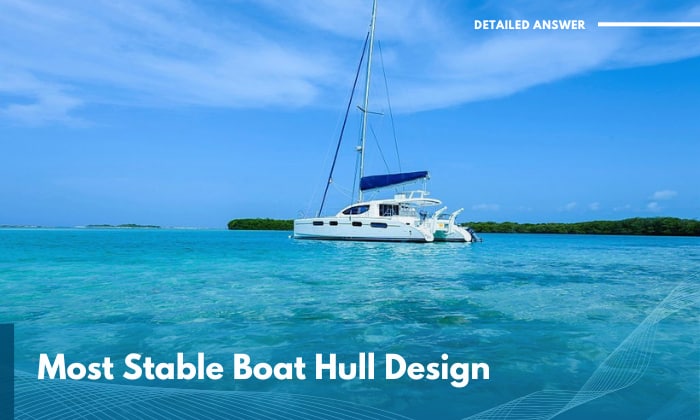
As boaters, we may not say it out loud, but we have an innate instinct to get the most out of our vessels. As much as possible, we don’t want our watercraft to get the short end of the stick in terms of speed, storage, efficiency, and, finally, stability.
We want it to perfectly fit our preferences like a glove to a hand. As such, wanting to know the most stable boat hull design is entirely reasonable.
The short answer is you should go for most multi-hulled options. Check out a double hull boat or deep v hull boats.
Table of Contents
1. The Case for Catamarans
2. what about those venturesome v-hulls, 2. displacement, 3. semi-displacement, 4. flat bottom, 5. round bottom, features of the most stable hull, the most stable hull design.
Based on the answer above, there’s no single “most stable boat design”. There are two boat hull shapes vying for that top spot, and at best, they’re tied if we consider their unique advantages and disadvantages.
Plus, it’s not like the shape of boat is the sole factor we need to be looking at in terms of stability. For example, the keel and rudder design play just as much of a big role in generating lift that lends to that, too.
To get down pat on this subject, let’s take a closer look at the hull design for boats I mentioned above.
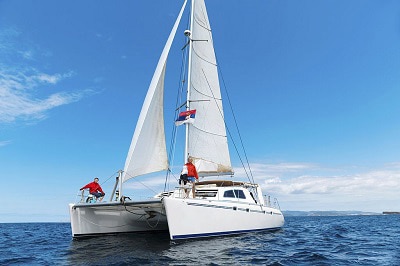
People will argue that a multi-hull is the most stable, and I don’t mind saying that oftentimes I agree with them. If you’ve ridden a catamaran before, won’t you say the same?
- These vessels have two parallel hulls (hence, the term multi- or double-hull) with a wider beam that allows them to cover a larger surface area in the water and effectively handle changes to center of gravity.
The hulls lead to a lower CG, which is an important factor in balancing anything including boats.
- On the other side of the coin is buoyancy, which this vessel packs plenty Catamarans have a great center of buoyancy because it is also concentrated between the two submerged hulls, the same as the vessel’s center of gravity.
As long as there’s harmony between these two elements (i.e. CG sits above CB), you can expect almost picture-perfect stability in any vessel due to the naturally higher tilt resistance in such a setup. And, yes, this is true even in instances when strong winds and waves batter the catamaran.
Got a slight fear of boating but can’t get enough of the sea life? That near-unsinkable vessel may be the best option for you.
Feel free to take it up a notch further with a trimaran while you’re at it! Or if you like fishing, a tri-hull may be a better partner.
Don’t get too carried away, though, as these vessels are not entirely invincible. For instance, once they go belly-up, they often have a hard time flipping over again like a turtle.
Obviously, the points I shared above barely scratch the surface of boat stability.
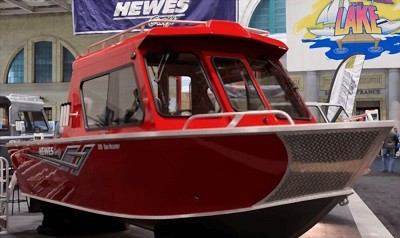
Think of a deep V hull sailboat or powerboat. Already, they beat those flat bottom boat types because they’re able to cut through the water and waves with ease.
Indeed, if we ask boat dealers and examiners about a speed boat hull design with this specific characteristic, they’re quick to point out that they’re the best performers in choppier conditions.
The hull’s shape allows it to act like a keel that boosts stability while maintaining high speeds. This is why they’re ubiquitous in any kind of offshore hull design built for racing, much like their double-hulled cousins.
However, like most kinds of boat hulls, they’re not perfect.
In fact, they’re actually one of the least efficient hull designs, especially when it comes to sailing speed, and contribute to poor visibility.
Read more : F lat bottom vs v hull jon boat: which is better?
Other Notable Types of Boat Hulls
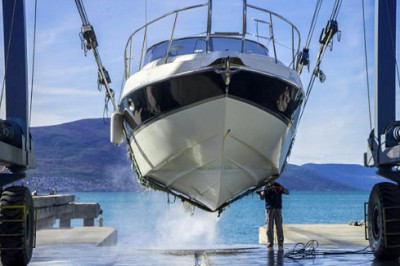
Planing hulls are more of an umbrella category that includes V hulls, round bottoms, and pontoons. As their name readily suggests, they give boats the ability to get up on plane.
That means they can raise the bow high enough to be able to reduce water resistance and move more smoothly and quicker on the water. Many consider these built-for-agility hulls the fastest boat hull design for this reason.
These hulls are designed to push or “displace” water as they move, hence their name. Consequently, V-hulls fall under this category as well.
Most displacement hulls other than V-hulls come to a close second in terms of stability due to their innate size advantage and, of course, their unique design.
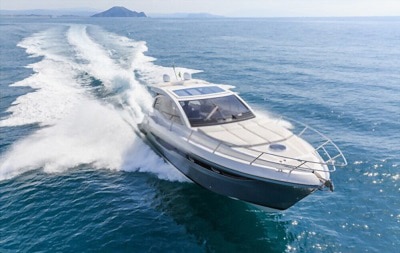
More of a hybrid displacement/planing hull, it combines the best of both worlds and, thus, imparts ready versatility.
It pushes water as it moves, but it can also go up on plane and enjoy a palpable speed boost. It’s a mix of speed and stability, in short, which is pretty much a win-win for any hardcore boater.
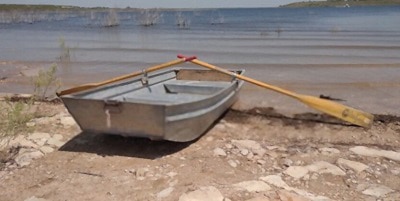
If V hulls and their flat bottom counterparts happen to be fighting for the most efficient boat hull design trophy, the latter could very well win outright since they consume less fuel. They’re naturally more capable of getting up on plane and staying in it, after all, all thanks to the fact that they’re technically planing hulls as well.
A round bottom hull can sometimes also be called a displacement hull, but they’re not exactly the same thing. Round bottoms found in canoes and sailboats are more suited to calmer waters, where they’re more stable, much like flat-bottom vessels.
Once the going gets tough, though, they tend to quickly pale in comparison to the two designs I discussed above.
Whether you’re looking for the most stable small boat or something larger, you only need to look at what makes V-hulls and multi-hulls stand out:
- They’re able to keep center of gravity and center of buoyancy optimal most of the time, with good overall weight distribution.
- They can readily take on the challenge of tougher wind and water conditions.
- They tend to integrate keels and rudders.
- Last but not least, it should have close to the same capabilities as the FLIP research platform.
What is the most efficient hull design?
If we’re talking about fuel efficiency, look no further than planing hulls. Their unique capability explained above has no equal compared to other hull types.
What hull shape is best for rough water?
The most ideal boat hull for rough water will always be either the V-hull or multi-hull. This is because these two are designed with heightening stability in mind and keeping the center of gravity and center of buoyancy optimal, regardless of the water and weather conditions.
Deep V-hulls may be the better option if you’re dealing with larger-than-normal waves, though.
To summarize, the most stable boat hull design is a coin toss between catamarans or other multi-hulls and deep V-hulls. After all, each one is able to stand out in its own way when we consider the fundamental factors that influence boat stability while out in the waterways.
These strengths all the more shine when they’re put next to other types of hulls; although, there are definitely runner-ups that aren’t exactly pushovers in the said department.

“My intention from the first day establishing Boating Basics Online is to provide as much help as possible for boaters who want to experience a first safe and convenient trip. So feel free to join us and share your beautiful journeys to the sea!”

Yachting Monthly
- Digital edition

25 of the best small sailing boat designs
- Nic Compton
- August 10, 2022
Nic Compton looks at the 25 yachts under 40ft which have had the biggest impact on UK sailing

There’s nothing like a list of best small sailing boat designs to get the blood pumping.
Everyone has their favourites, and everyone has their pet hates.
This is my list of the 25 best small sailing boat designs, honed down from the list of 55 yachts I started with.
I’ve tried to be objective and have included several boats I don’t particularly like but which have undeniably had an impact on sailing in the UK – and yes, it would be quite a different list if I was writing about another country.
If your favourite isn’t on the best small sailing boat designs list, then send an email to [email protected] to argue the case for your best-loved boat.
Ready? Take a deep breath…

Credit: Bob Aylott
Laurent Giles is best known for designing wholesome wooden cruising boats such as the Vertue and Wanderer III , yet his most successful design was the 26ft Centaur he designed for Westerly, of which a remarkable 2,444 were built between 1969 and 1980.
It might not be the prettiest boat on the water, but it sure packs a lot of accommodation.
The Westerly Centaur was one of the first production boats to be tank tested, so it sails surprisingly well too. Jack L Giles knew what he was doing.
Colin Archer

Credit: Nic Compton
Only 32 Colin Archer lifeboats were built during their designer’s lifetime, starting with Colin Archer in 1893 and finishing with Johan Bruusgaard in 1924.
Yet their reputation for safety spawned hundreds of copycat designs, the most famous of which was Sir Robin Knox-Johnston ’s Suhaili , which he sailed around the world singlehanded in 1968-9.
The term Colin Archer has become so generic it is often used to describe any double-ender – so beware!
Contessa 32
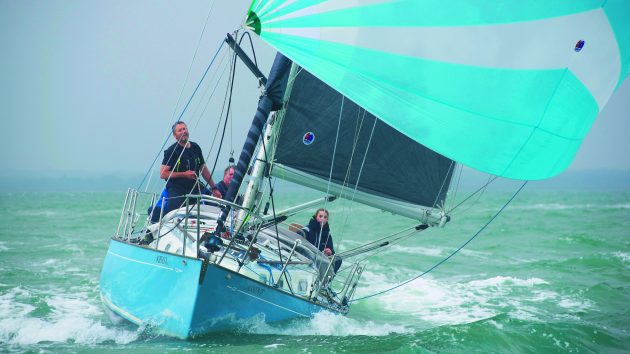
Assent ‘s performance in the 1979 Fastnet Race makes the Contessa 32 a worth entry in the 25 best small sailing boat designs list. Credit: Nic Compton
Designed by David Sadler as a bigger alternative to the popular Contessa 26, the Contessa 32 was built by Jeremy Rogers in Lymington from 1970.
The yacht’s credentials were established when Assent , the Contessa 32 owned by Willy Kerr and skippered by his son Alan, became the only yacht in her class to complete the deadly 1979 Fastnet Race .
When UK production ceased in 1983, more than 700 had been built, and another 20 have been built since 1996.
Cornish Crabber 24

It seemed a daft idea to build a gaff-rigged boat in 1974, just when everyone else had embraced the ‘modern’ Bermudan rig.
Yet the first Cornish Crabber 24, designed by Roger Dongray, tapped into a feeling that would grow and grow and eventually become a movement.
The 24 was followed in 1979 by the even more successful Shrimper 19 – now ubiquitous in almost every harbour in England – and the rest is history.
Drascombe Lugger
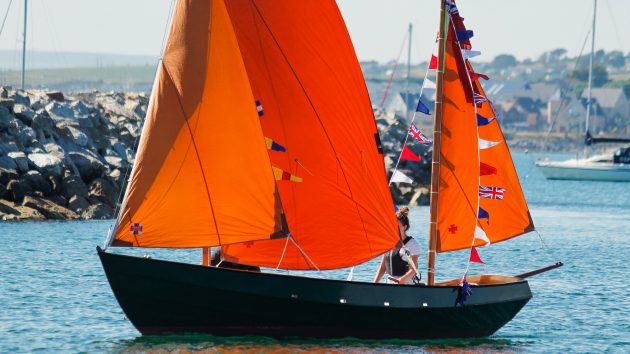
Credit: David Harding
There are faster, lighter and more comfortable boats than a Drascombe Lugger.
And yet, 57 years after John Watkinson designed the first ‘lugger’ (soon changed to gunter rig), more than 2,000 have been built and the design is still going strong.
More than any other boat, the Drascombe Lugger opened up dinghy cruising, exemplified by Ken Duxbury’s Greek voyages in the 1970s and Webb Chiles’s near-circumnavigation on Chidiock Tichbourne I and II .

The 26ft Eventide. Credit: David Harding
It’s been described as the Morris Minor of the boating world – except that the majority of the 1,000 Eventides built were lovingly assembled by their owners, not on a production line.
After you’d tested your skills building the Mirror dinghy, you could progress to building a yacht.
And at 24ft long, the Eventide packed a surprising amount of living space.
It was Maurice Griffiths’ most successful design and helped bring yachting to a wider audience.

You either love ’em or you hate ’em – motorsailers, that is.
The Fisher 30 was brought into production in 1971 and was one of the first out-and-out motorsailers.
With its long keel , heavy displacement and high bulwarks, it was intended to evoke the spirit of North Sea fishing boats.
It might not sail brilliantly but it provided an exceptional level of comfort for its size and it would look after you when things turned nasty.
Significantly, it was also fitted with a large engine.

Credit: Rupert Holmes
It should have been a disaster.
In 1941, when the Scandinavian Sailing Federation couldn’t choose a winner for their competition to design an affordable sailing boat, they gave six designs to naval architect Tord Sundén and asked him to combine the best features from each.
The result was a sweet-lined 25ft sloop which was very seaworthy and fast.
The design has been built in GRP since the 1970s and now numbers more than 4,000, with fleets all over the world.

Credit: Kevin Barber
There’s something disconcerting about a boat with two unstayed masts and no foresails, and certainly the Freedom range has its detractors.
Yet as Garry Hoyt proved, first with the Freedom 40, designed in collaboration with Halsey Herreshoff, and then the Freedom 33 , designed with Jay Paris, the boats are simple to sail (none of those clattering jib sheets every time you tack) and surprisingly fast – at least off the wind .
Other ‘cat ketch’ designs followed but the Freedoms developed their own cult following.
Hillyard 12-tonner

The old joke about Hillyards is that you won’t drown on one but you might starve to death getting there.
And yet this religious boatbuilder from Littlehampton built up to 800 yachts which travelled around the world – you can find them cruising far-flung destinations.
Sizes ranged from 2.5 to 20 tons, though the 9- and 12-ton are best for long cruises.

The innovations on Jester means she is one of the best small sailing boat designs in the last 100 years. Credit: Ewen Southby-Tailyour
Blondie Hasler was one of the great sailing innovators and Jester was his testing ground.
She was enclosed, carvel planked and had an unstayed junk rig.
Steering was via a windvane system Hasler created.
Hasler came second in the first OSTAR , proving small boats can achieve great things.

Moody kicked off the era of comfort-oriented boats with its very first design.
The Moody 33, designed by Angus Primrose, had a wide beam and high topside to produce a voluminous hull .
The centre cockpit allowed for an aft cabin, resulting in a 33-footer with two sleeping cabins – an almost unheard of concept in 1973 –full-beam heads and spacious galley.
What’s more, her performance under sail was more than adequate for cruising.
Finally, here was a yacht that all the family could enjoy.
Continues below…

What makes a boat seaworthy?
What characteristics make a yacht fit for purpose? Duncan Kent explores the meaning of 'seaworthy' and how hull design and…

How boat design is evolving
Will Bruton looks at the latest trends and innovations shaping the boats we sail

How keel type affects performance
James Jermain looks at the main keel types, their typical performance and the pros and cons of each

Boat handling: How to use your yacht’s hull shape to your advantage
Whether you have a long keel or twin keel rudders, there will be pros and cons when it comes to…
Nicholson 32

Credit: Genevieve Leaper
Charles Nicholson was a giant of the wooden boat era but one of his last designs – created with his son Peter – was a pioneering fibreglass boat that would become an enduring classic.
With its long keel and heavy displacement, the Nicholson 32 is in many ways a wooden boat built in fibreglass – and indeed the design was based on Nicholson’s South Coast One Design.
From 1966 to 1977, the ‘Nic 32’ went through 11 variations.

Credit: Hallberg-Rassy
In the beginning there was… the Rasmus 35. This was the first yacht built by the company that would become Hallberg-Rassy and which would eventually build more than 9,000 boats.
The Rasmus 35, designed by Olle Enderlein, was a conservative design, featuring a centre cockpit, long keel and well-appointed accommodation.
Some 760 boats were built between 1967 and 1978.

Credit: Larry & Lin Pardey
Lyle Hess was ahead of his time when he designed Renegade in 1949.
Despite winning the Newport to Ensenada race, the 25ft wooden cutter went largely unnoticed.
Hess had to build bridges for 15 years before Larry Pardey asked him to design the 24ft Seraffyn , closely based on Renegade ’s lines but with a Bermudan rig.
Pardey’s subsequent voyages around the world cemented Hess’s reputation and success of the Renegade design.

Would the Rustler 36 make it on your best small sailing boat list? Credit: Rustler Yachts
Six out of 18 entries for the 2018 Golden Globe Race (GGR) were Rustler 36s, with the top three places all going to Rustler 36 skippers.
It was a fantastic endorsement for a long-keel yacht designed by Holman & Pye 40 years before.
Expect to see more Rustler 36s in the 2022 edition of the GGR!

It was Ted Heath who first brought the S&S 34 to prominence with his boat Morning Cloud .
In 1969 the yacht won the Sydney to Hobart Race, despite being one of the smallest boats in the race.
Other epic S&S 34 voyages include the first ever single-handed double circumnavigation by Jon Sanders in 1981

Credit: Colin Work
The Contessa 32 might seem an impossible boat to improve upon, but that’s what her designer David Sadler attempted to do in 1979 with the launch of the Sadler 32 .
That was followed two years later by the Sadler 29 , a tidy little boat that managed to pack in six berths in a comfortable open-plan interior.
The boat was billed as ‘unsinkable’, with a double-skinned hull separated by closed cell foam buoyancy.
What’s more, it was fast, notching up to 12 knots.

Credit: Dick Durham/Yachting Monthly
Another modern take on the Contessa theme was the Sigma 33, designed by David Thomas in 1979.
A modern underwater body combined with greater beam and higher freeboard produced a faster boat with greater accommodation.
And, like the Contessa, the Sigma 33 earned its stripes at the 1979 Fastnet, when two of the boats survived to tell the tale.
A lively one-design fleet soon developed on the Solent which is still active to this day.

A replica of Joshua Slocum’s Spray . Credit: Alamy Stock Photo
The boat Joshua Slocum used for his first singlehanded circumnavigation of the world wasn’t intended to sail much further than the Chesapeake Bay.
The 37ft Spray was a rotten old oyster sloop which a friend gave him and which he had to spend 13 months fixing up.
Yet this boxy little tub, with its over-optimistic clipper bow, not only took Slocum safely around the world but has spawned dozens of modern copies that have undertaken long ocean passages.

Credit: James Wharram Designs
What are boats for if not for dreaming? And James Wharram had big dreams.
First he sailed across the Atlantic on the 23ft 6in catamaran Tangaroa .
He then built the 40ft Rongo on the beach in Trinidad (with a little help from French legend Bernard Moitessier) and sailed back to the UK.
Then he drew the 34ft Tangaroa (based on Rongo ) for others to follow in his wake and sold 500 plans in 10 years.

Credit: Graham Snook/Yachting Monthly
The Twister was designed in a hurry.
Kim Holman wanted a boat at short notice for the 1963 season and, having had some success with his Stella design (based on the Folkboat), he rushed out a ‘knockabout cruising boat for the summer with some racing for fun’.
The result was a Bermudan sloop that proved nigh on unbeatable on the East Anglian circuit.
It proved to be Holman’s most popular design with more than 200 built.

Credit: Alamy Stock Photo
Laurent Giles’s design No15 was drawn in 1935 for a Guernsey solicitor who wanted ‘a boat that would spin on a sixpence and I could sail single-handed ’.
What the young Jack Giles gave him was a pretty transom-sterned cutter, with a nicely raked stem.
Despite being moderate in every way, the boat proved extremely able and was soon racking up long distances, including Humphrey Barton’s famous transatlantic crossing on Vertue XXXV in 1950.
Wanderer II and III

Credit: Thies Matzen
Eric and Susan Hiscock couldn’t afford a Vertue, so Laurent Giles designed a smaller, 21ft version for them which they named Wanderer II .
They were back a few years later, this time wanting a bigger version: the 30ft Wanderer III .
It was this boat they sailed around the world between 1952-55, writing articles and sailing books along the way.
In doing so, they introduced a whole generation of amateur sailors to the possibilities of long-distance cruising.
Westerly 22

The origins of Westerly Marine were incredibly modest.
Commander Denys Rayner started building plywood dinghies in the 1950s which morphed into a 22ft pocket cruiser called the Westcoaster.
Realising the potential of fibreglass, in 1963 he adapted the design to create the Westerly 22, an affordable cruising boat with bilge keels and a reverse sheer coachroof.
Some 332 boats were built to the design before it was relaunched as the Nomad (267 built).
Enjoyed reading 25 of the best small sailing boat designs?
A subscription to Yachting Monthly magazine costs around 40% less than the cover price .
Print and digital editions are available through Magazines Direct – where you can also find the latest deals .
YM is packed with information to help you get the most from your time on the water.
- Take your seamanship to the next level with tips, advice and skills from our experts
- Impartial in-depth reviews of the latest yachts and equipment
- Cruising guides to help you reach those dream destinations
Follow us on Facebook , Twitter and Instagram.
- Cars, Jets & Yachts
The Best Eco-Friendly Yachts of the 21st Century
There are many options for enjoying these beasts of the ocean in a more responsible way.
By Elite Traveler

As yachts get larger in size, they generally also increase in fuel capacity and consumption, running costs and also environmental impact. However, in recent years, there has been a change in the world of superyachts. Today, we are witnessing more and more yachts take steps towards efficiency, reducing fuel usage and innovating when it comes to improving sustainability credentials.
Much like aviation, bio and sustainable fuels are becoming far more accessible and prevalent in yachting. There has also been an uptick in the use of hybrid propulsion — the use of a combination of different energy sources — most commonly this results in a combination of both diesel and battery power. There has also been a renaissance of the sail, with some owners looking to harness the power of the wind to aid their transportation. It also undeniably looks superb.
As many yacht owners and potential buyers begin to focus more on the sustainability of these vessels, yacht builders are taking note. Here, Elite Traveler takes a closer look at some of the most impressive eco-friendly yachts to have hit the water during the last two decades. We will also be taking a quick look at what’s on the horizon.
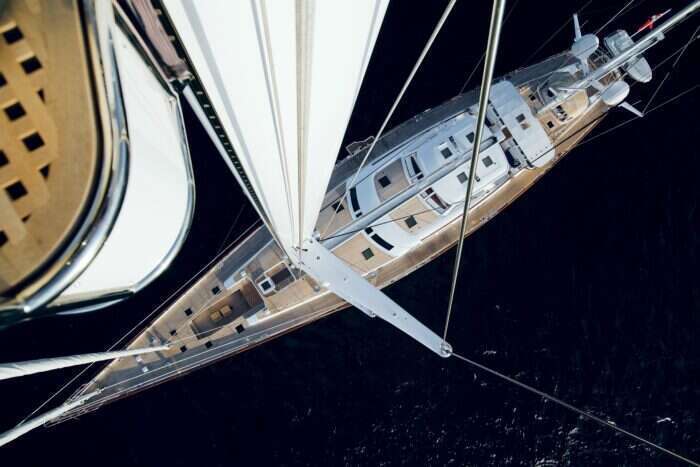
Launched by Dutch yard Royal Huisman in 2008, 190-ft ketch Ethereal was a trendsetter that paved the way for future ‘eco’ superyachts. The first superyacht with a true hybrid system on board, she was the dream of owners Bill and Shannon Joy who set out to challenge the norm of yacht building. Together with the shipyard, naval architect Ron Holland and exterior/interior designer Pieter Beeldsnijder, the Joys worked to create a yacht that would have the lowest possible impact on the planet. The result was a technologically advanced design that delivered energy efficiency in a sleek and high-performance package.
Thanks to a twin hybrid electro-mechanical propulsion system, which recharges her battery bank, Ethereal can operate for long periods of time under the quiet stored power of her own resources. Every detail of Ethereal was examined for ways to reduce energy demands—from lighting to air-conditioning—and she delivers an impressively efficient performance when underway. Her open interior, with a warm and welcoming feel, invites guests in— fittingly, as her entire layout was designed to maximize spaces and allow those on board to spend quality time together. Since her launch Ethereal has traveled the world, treading lightly wherever she goes.
royalhuisman.com

These Yacht Charters Offer Prime Access to Remarkable Places

These are the 7 Yacht Interior Designers to Know
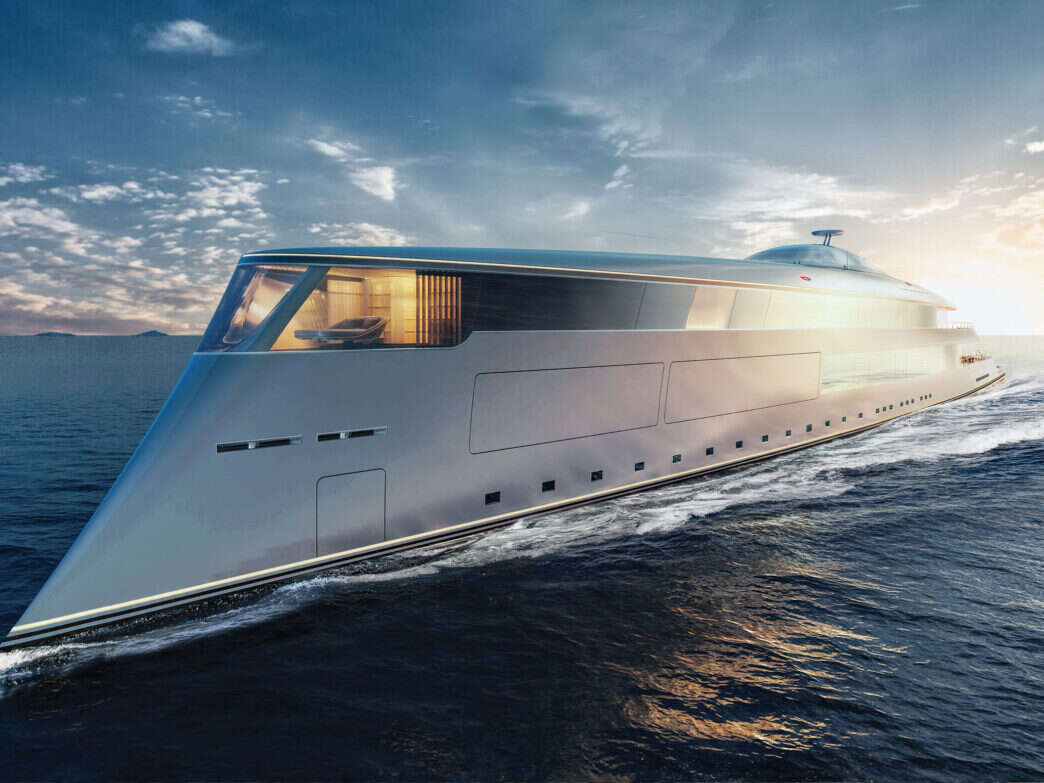
The Ultimate Guide to Hydrogen-powered Yachts
Black pearl.
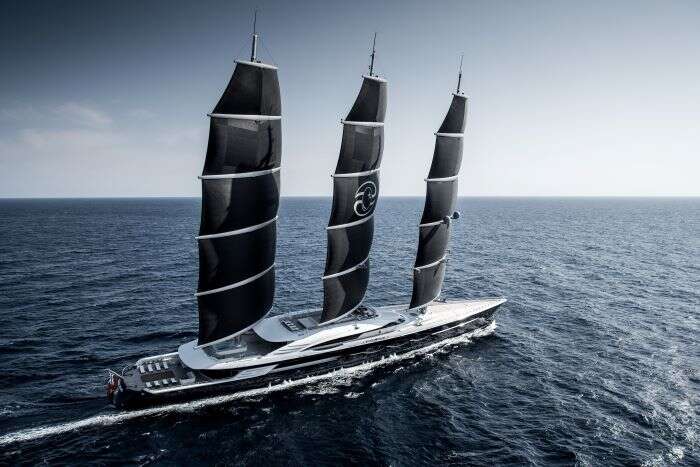
At 350 ft, Black Pearl is the largest sailing superyacht in the world. She is certainly not inconspicuous but, despite her size, she is extremely eco-friendly. Delivered by Oceanco in 2016, Black Pearl is said to have the capability to cross the Atlantic using zero fossil fuel. Plans for undertaking this particular feat were underway when Covid-19 hit and delayed this attempt, but her captain, Chris Gartner, says that the owner and the Black Pearl’s team are committed to going ahead with that as soon as possible.
[See also: Step Inside the Black Pearl Yacht]
Black Pearl incorporates features that ensure a lower environmental impact: propellers that can generate electricity when operating in ‘regeneration mode’ and, one of her most impressive features, her sails also double as a source of power. Measuring an incredible 31,215 sq ft, Black Pearl’s sails have built-in solar panels that create electricity that is then stored so it can be put to use elsewhere as needed. The DynaRig sails also allow the yacht to be easily operated under sail power as much as possible, greatly reducing the need for fuel.
Content from our partners

Nightcap: Enjoy Live Music All Summer at Nemacolin Resort
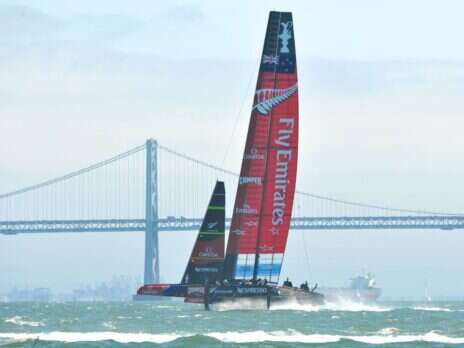
How to Enjoy America’s Cup 2024 in Barcelona

From Mexico to Manhattan: Clase Azul’s Latest Tequila Captures NYC
oceancoyacht.com

Savannah , built by Dutch shipyard Feadship and hailed as the first hybrid motoryacht at her 2015 launch, is also the world’s largest metallic-painted floating object. This beautiful yacht has collected many awards, including the coveted Motor Yacht of the Year at the 2016 World Superyacht Awards. Her ‘Breathe’ propulsion system delivers 30% fuel-saving economies, and she can cruise under diesel-electric or simply electric battery power.
Savannah set a precedent for other eco-friendly projects from Feadship, including the ultra-sustainable 308-ft Viva (Hull 817), which has made waves since her February 2021 launch. As attractive as she is innovative, her elegant, four-deck floating superstructure pairs world-class technology with timeless style; features include the ‘Nemo Lounge,’ where you can peek below the waves and marvel at passing sea life from the comfort of the yacht. The main deck has a 30-ft pool and two main salons that are divided by a video wall, and the owner’s stateroom boasts a skylight above the master bed for admiring the starscape above.
feadship.nl
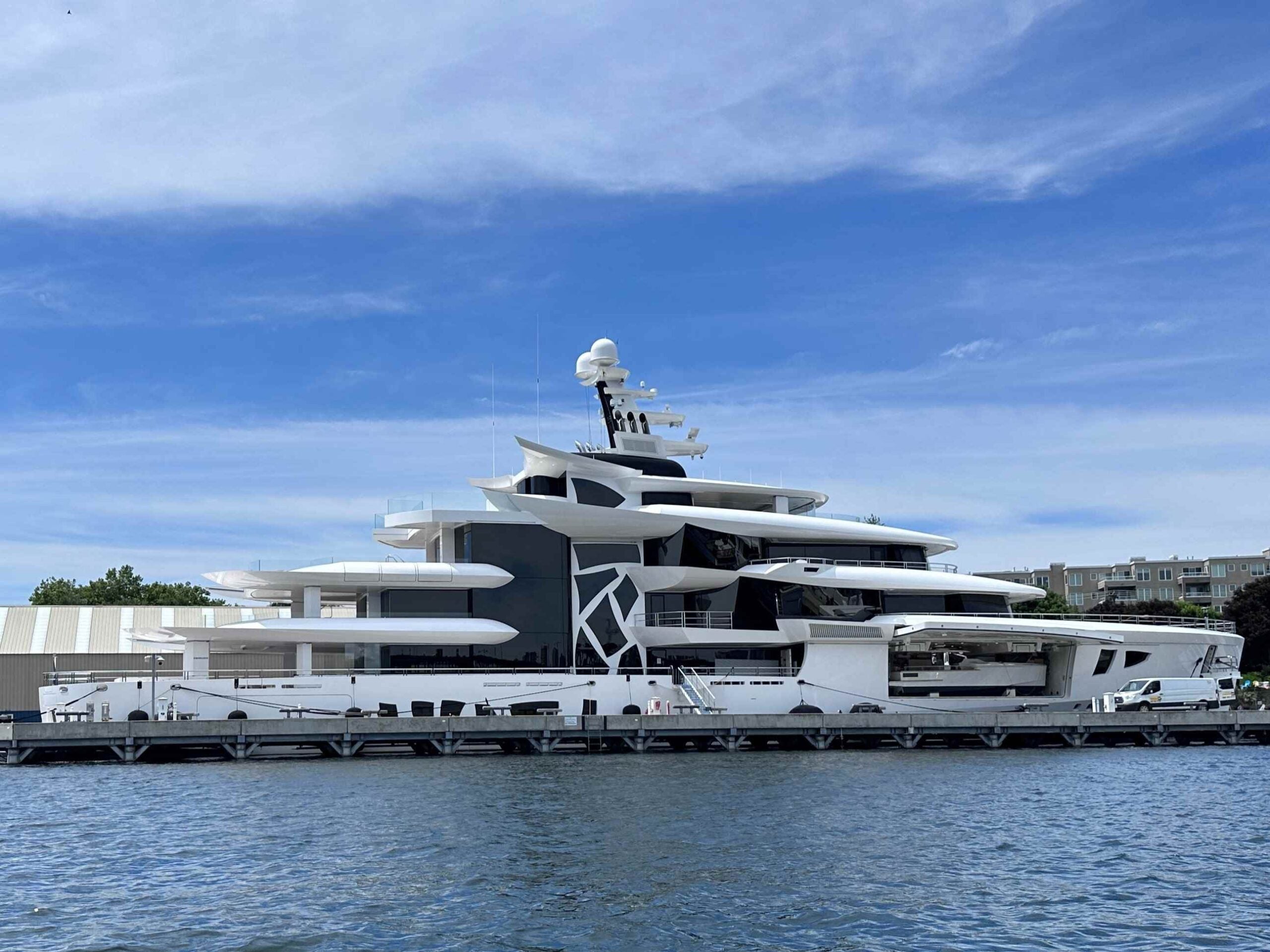
The impressive 262-ft Artefact , designed by Gregory C Marshall and delivered by Nobiskrug Yachts in 2020, is a head-turner for more than one reason. Her striking exterior, which makes clever use of glass, is the most obvious, but her eco-credentials are her biggest asset. Built for visionary owners who specifically requested a yacht with a reduced environmental impact, Artefact’s many solutions for this brief include 248 ft of solar panels and a battery storage system that allows the yacht to operate without its main engines for extended periods.
[See also: Artefact: The Eco Superyacht that Changed the Game]
Added to that is her dynamic positioning system and Azipod propulsion system – these allow Artefact to easily hold her position without needing to use her anchors and reduce her emissions while also upping her efficiency. In fact, she was one of the very first superyachts built to meet IMO Tier III emissions regulations. For those wishing to enjoy pristine surroundings without interruption, Artefact is also capable of silent operations. This ‘greener’ superyacht certainly doesn’t compromise on comfort and on her launch was the biggest volume yacht of her size in the world. She perfectly pairs form and function… in other words, this award-winning yacht is the full package.
nobiskrug.com
Sailing Yachts
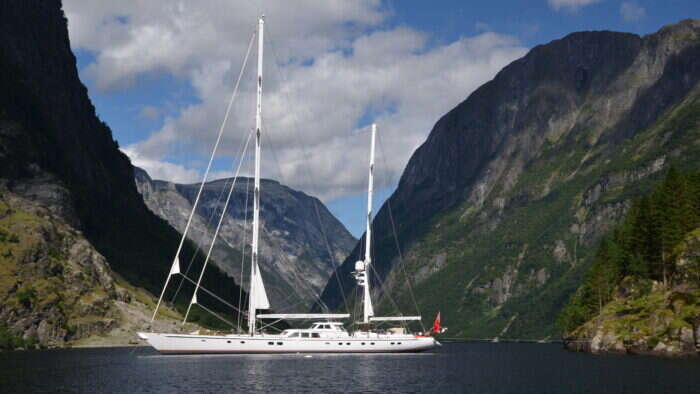
Originally launched in 1993, the 143-ft Juliet was reborn in 2021 after an extensive “go greener” refit at her original build yard, Royal Huisman. Newly transformed into a hybrid yacht, Juliet now bears technologies that will future-proof her for years to come. Her new hybrid system offers numerous benefits including silent operations, zero emissions, peak-shaving, shaft-generated power under sail and reduced fuel consumption. A brand-new gearbox, aligned with a sophisticated new electric motor/generator, will allow electric propulsion that is powered by either the main engine or alternatively the battery pack or generator. Meanwhile, a battery bank will allow Juliet to operate in ‘silent ship’ mode.
When stretching her legs under sail, the rotation of the propeller will generate electric power. When at anchor she can run on battery power so guests can relax without any noise pollution that might detract from their surroundings. With nearly a quarter a million miles logged since her launch, Juliet is now ready for the next quarter million miles to come.
Swan 88 Hybrid
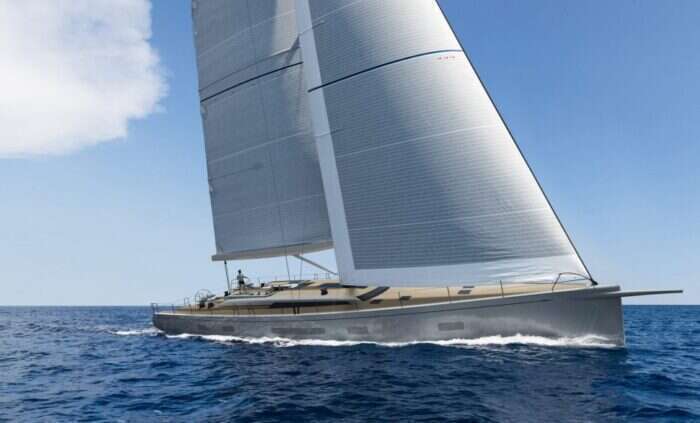
Finnish builders Nautor’s Swan has joined the trend for hybrid yachts with its Swan 88 Hybrid model, which has a hybrid-electric propulsion system that marks a new era for the yard’s Maxi range. This new direction for the yard includes making greater use of eco-friendly materials in its designs. The Swan 88 Hybrid is the yard’s first attempt at a hybrid yacht, and the design has already borne fruit – in May 2021 it announced it had already sold the first hull.
Described by Nautor’s Swan as a “dual soul of racer and cruiser,” the Swan 88 Hybrid pairs comfort and performance and is an excellent ‘starter size’ superyacht that is spacious but manageable. The minimalist exterior design by German Frers is complemented by “a comfortable, harmonious and magical” interior by Misa Poggi. An easy-handle sail plan makes use of the brand’s long experience in ocean racing, delivering “efficient, uncomplicated and easily managed sailing”. The layout and design has been tailored to maximize guest comfort on longer trips – this first model will be able to travel the world with a lighter footprint thanks to her eco credentials.
nautorswan.com
Sailing purists the world over treasure the sight of a J Class yacht. Original J Class yachts raced in the 1930s under the Universal Rule, in events including the America’s Cup. There have been several replica J Class yachts built in modern times as well. Elegant Rainbow is one such replica and was built in Holland in 2012 by Holland Jachtbouw. Her design was based on the original Rainbow , which won the America’s Cup in 1934, and it paired the best of classic yacht design with all the necessary modern technologies and comforts.
Like many other eco-friendly sailing yachts, Rainbow is powered by a hybrid propulsion system – in fact, she was the first J Class to boast this capability. This means a welcome 30% reduction in fuel usage, as well as the option of silent operations when underway. As beautiful on the inside as she is on the outside, Rainbow ’s luxurious interior makes use of elegant mahogany woods, sophisticated styling and plenty of space to enjoy.
y.co/yacht/rainbow
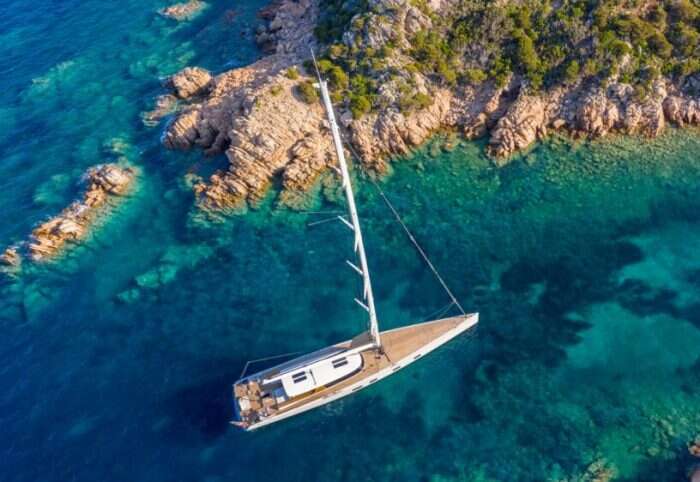
Built by Finnish firm Baltic Yachts in 2019, the 142-ft Canova takes the title of being the yard’s very first zero emissions yacht over 100 ft. This was a mandate of her owner, who wanted his long-distance cruising yacht to be as green as possible. Canova more than met the mark and carries an impressive line-up of modern technologies including a power regeneration system that, in theory, allows a never-ending supply for the yacht to make use of. An added first is that Canova is the first superyacht to be fitted with a transverse Dynamic Stability System foil, which delivers unprecedented comfort levels for a sailing yacht by reducing heel and motion.
Guests can relax on board Canova and enjoy nine hours of ‘silent’ mode made possible by an electric propulsion system that also charges the on-board battery bank. An easy-to-handle, yet powerful, sail plan ensures hoisting the sails is a breeze, meaning Canova can make the most of her sailing prowess (again cutting down on engine use). Large spaces and good indoor/outdoor flow make her a home away from home, with communal spaces including the large, sheltered cockpit with drop down glass sides. Canova was built to take her owner and guests around the world and will be venturing to a wide variety of destinations over the coming years.
balticyachts.fi
Sw108 Hybrid
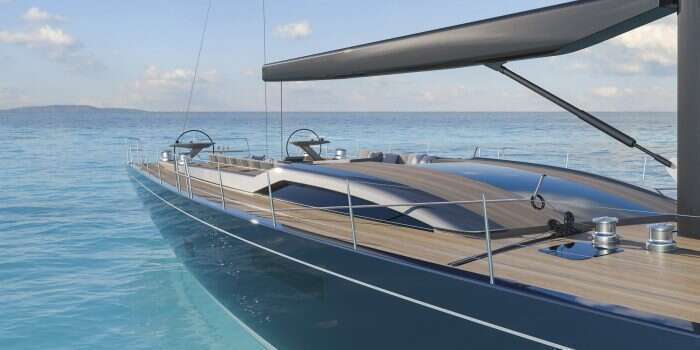
First revealed in 2021, the SW108 Hybrid from South African shipyard Southern Wind Shipyard (SWS) is an exciting diesel-electric concept that has been designed with the planet in mind. It is the result of an impressive collaboration between SWS, Nauta Design and Farr Yacht Design. Featuring the ‘SWS Diesel-Electric Hybrid System,’ the SW108 Hybrid will allow for efficient consumption of fossil fuels and reduce harmful emissions.
[See also: Discovering the World’s Most Exciting Superyacht Concepts]
All this is presented in a sleek, elegant and reliable package typical of SWS. Key features include a plus-sized beach club and a garage with room for a 16 ft tender. Sure to appeal to sailors looking for a reliable and comfortable “greener” sailing yacht, the design is what the yard describes as “a more environmentally friendly approach to performance yacht sailing.” The shipyard takes its responsibilities to deliver more eco-friendly yachts very seriously and the SW108 Hybrid will likely set the tone for future designs from SWS.
sws-yachts.com
To the Future…
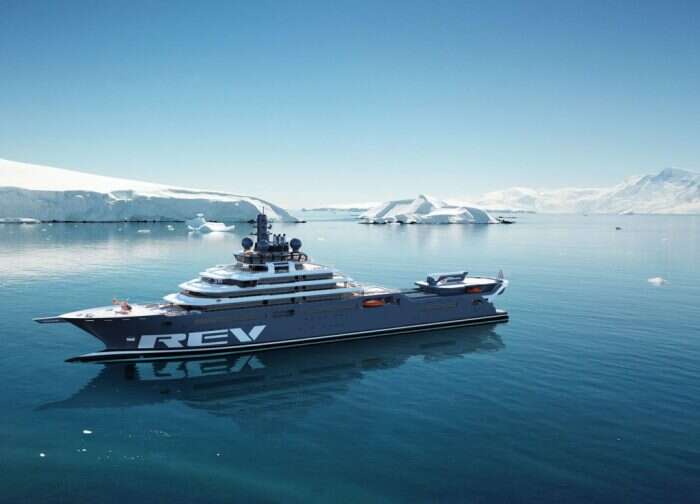
Now due to be completed in 2025, 640-ft REV Ocean will be the world’s largest research vessel. With construction well underway in Norway, REV Ocean is a state-of-the-art yacht that has been designed to ensure ‘one healthy ocean.’ As a luxury floating laboratory, her impressive facilities will allow her to undertake cutting-edge ocean science. She has an abundance of sustainable features, and her assets will include everything from a deep-diving submarine to a lecture theater for discussing discoveries.
[See also: Inside the Incredible Superyacht REV]
“ REV Ocean’s hull and propeller were designed for less resistance and more efficiency moving through the water, saving up to 15% on fuel consumption,” explains Lawrence Hislop of REV Ocean . “Additionally, lithium-ion battery packs, LED lighting, a heat recovery system, an onboard incinerator and DNV SILENT-R rating all contribute to the philosophy of making REV Ocean one of the world’s most sustainable research and expedition vessels.” Want to experience REV Ocean for yourself? She will be offering special, once-in-a-lifetime charters that allow guests to play their own part in REV Ocean’s important work.
revocean.org

The Arksen 85 — dubbed Project Ocean — the first self-proclaimed “ultimate marine exploration vessel” to be built by Arksen Yachts. Created to travel the world, with a stable, hardy design, the Arksen 85 is intended to explore with low environmental impact. She’s built in an eco-friendly way, with her hull and superstructure made from low-carbon, recycled aluminum. A range of up to 7,000 nm will give her plenty of scope for adventures, and her eco credentials include a solar array option for zero-carbon electrical power and a hybrid propulsion system.
Buying an Arksen yacht offers several bolt-ons such as membership in the Arksen Explorers’ Club, which helps owners make the most of their vessels, and an invitation to join the Arksen Foundation, where owners are invited to pledge 10% of their vessels’ sea time to ocean-exploration projects. The Arksen 85 offers luxurious comfort and large onboard spaces. This first build will include a full beam master suite, media room and children’s cabin. She is due to launch in 2022, and a large portion of her time at sea has already been committed to the Arksen Foundation.
Project AQUA
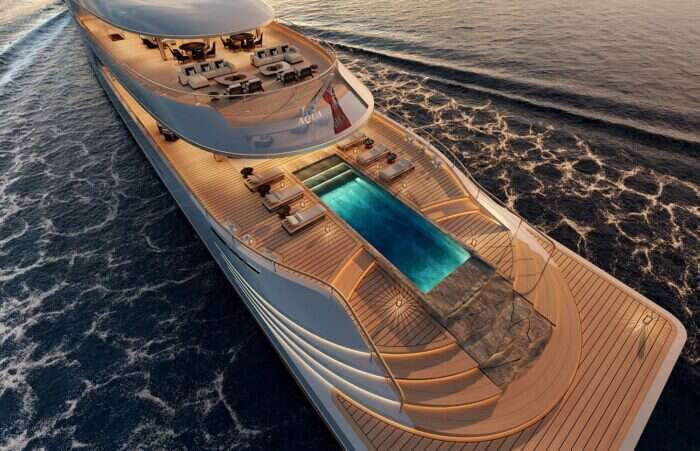
Project AQUA made headlines around the world when rumors started that she was being built for Bill Gates. This speculation was later dispelled but, in the process, the world got a good look at the 367-ft vessel and so too a glimpse of what the future of yacht design might look like. The work of Lateral Naval Architects in collaboration with Sinot Yacht Design, hydrogen-powered Project AQUA represents how yachting might one day achieve zero carbon usage.
[See also: Hydrogen-Powered Yachts: What to Know]
“For Project AQUA we set ourselves an objective of using near-future technology,” explains Simon Brealey, principal mechanical engineer at Lateral. “Liquid hydrogen has the potential to be created from renewable sources via electrolysis and as such can be considered a zero carbon fuel with the only local emissions being water. Project AQUA demonstrates [that] the onboard technology to enable a zero carbon project is ready, and we hope that it acts to inspire superyacht owners, shipyards, the hydrogen infrastructure industry and the wider maritime industry.”
The Sinot team used “an integrated and highly poetic design approach” when creating her: Cascading exterior decks are paired with a minimalist Japanese beach-style interior that provides living spaces in perfect balance with the water on which the vessel sits.
lateral.engineering , sinot.com
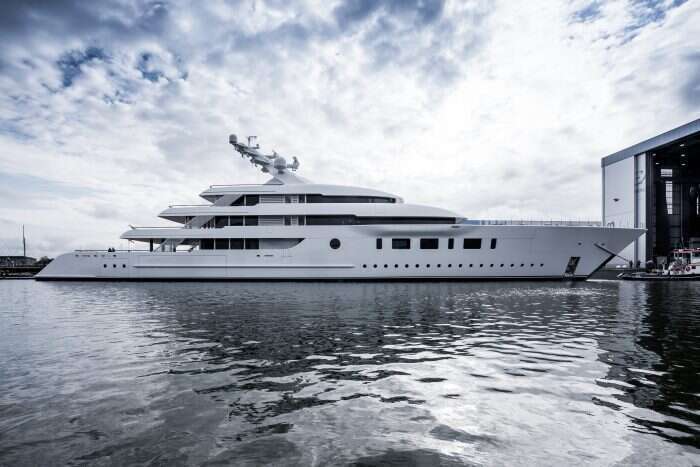
Dutch yard Feadship now has a good number of eco yachts to its name, and 312-ft hybrid yacht Bliss is the most recent to have hit the water. Launched in May 2021, Bliss benefits from the very latest advances in technology with an all-new hybrid propulsion system. De Voogt Naval Architects were heavily involved in the design and engineering of the hybrid system, which will allow the yacht to sail in diesel-electric mode. In a win-win for comfort and for the world, “this package helps to protect the environment and provides premium comfort for all who step aboard,” says Feadship. Bliss also has Polar Code compliance – what better way to connect with the importance of protecting the health of our planet than by coming face to face with the icy majesty of the Polar regions?
Currently owned by founder of Snapchat, Evan Spiegal, Bliss features an exterior design by Jan Schaffers of Studio de Voogt and interior design by Remi Tessier. This team has created an elegant style that they describe as “natural and welcoming, inside and out.” Highlights include nine cabins, a gym and wellness space, a pool and a convertible helideck. Designed for family fun and to see the world this magnificent custom yacht is a timeless triumph.
Eco Explorer
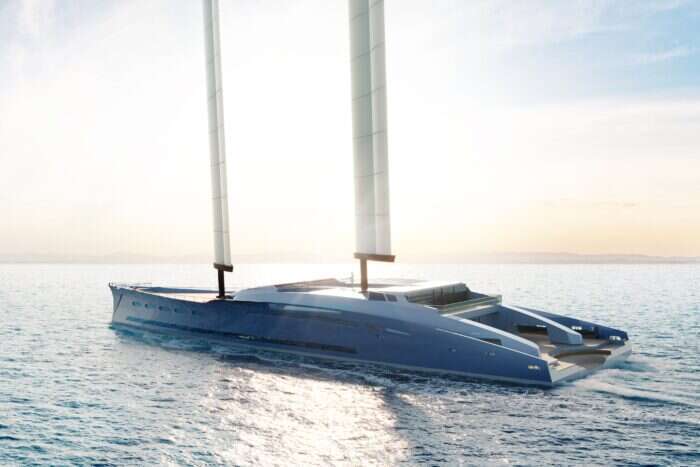
A collaboration between Dutch yard Feadship and French design studio Merveille Yachting, the Eco Explorer concept is described by Feadship as “a genuinely eco-friendly superyacht.” The yacht combines all the best elements of motor and sail yachts in one efficient package. She features a mast system that has fully automated wings twice as powerful as a standard sailing yacht rig, while the use of sail power reduces fuel use as well.
Energy is also harnessed from a trio of onboard solutions including wind turbines, solar panels and underwater turbines. These, together with other reduction elements, add up to the use of an estimated 50-70% less fossil fuel, and more than three times the range of an equivalent boat. The 55-ft beam ensures plenty of space on board, with an inviting interior and vast beach club that includes a 49-ft swimming pool. The perfect yacht for seeing the world guilt-free, “the Eco Explorer is on the forefront of cutting-edge, environmentally friendly technology,” says Feadship.
feadship.nl , merveille-yachting.com

A mighty 328-ft sailing yacht concept, Vento is the brainchild of Nuvolari-Lenard. First revealed in June 2021 at the Venice Boat Show, this behemoth was created by design duo Carlo Nuvolari and Dan Lenard to be a “manifesto for environmental protection” and a visual appeal to superyacht designers to create truly green yachts. This radical concept will use the wind as its main source of propulsion and its slipstream hull will ensure it moves efficiently through the water. Its Wing Sail sail plan is more efficient than traditional rigs, allowing for better performance. A diesel-electric system with variable speed generators and variable pitch propellors will allow operations to be adjusted to achieve maximum efficiency.
Nuvolari and Lenard both believe that it is not enough to design a yacht that is “greener,” and instead our entire mentalities and attitudes towards yacht design needs to shift. “ Vento speaks to a market sensitive to environmental issues, worried about the future of the marine ecosystem, which is ready to do its part,” they say. Vento is their testimony and, they believe, proof that a truly green yacht needn’t mean compromising on innovative designs and luxurious living.
nuvolari-lenard.com
Project Crystal
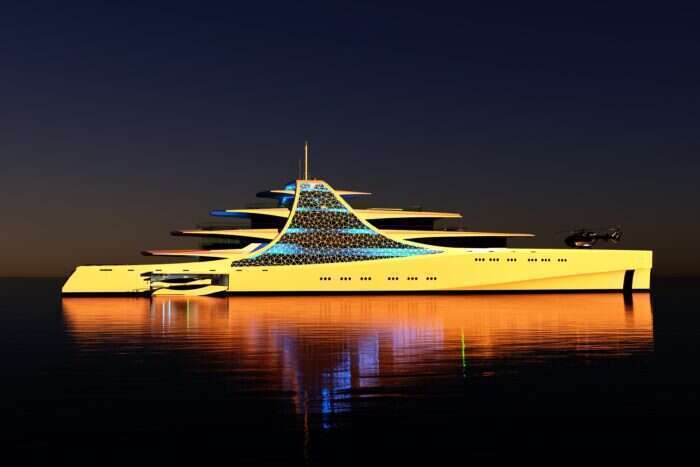
The size of the 308-ft Project Crystal is an eco yacht option for buyers who can’t let go of the idea of a very large yacht. She, like the rest on this list, has been designed in a way that will allow efficient operations and energy savings. “As with all our designs, the impact of a vessel on its context is crucial — environmental considerations extend from the controllable pitch propellers which maximize efficiency, through the hydrodynamic optimizations of the hull, hybrid power systems and glazing arrangements that minimize solar gain,” says Nick Stark, naval architect at Nick Stark Design.
Project Crystal is named for the distinctive crystalline lattice that forms a striking part of the exterior profile. Designed to be a sanctuary, Project Crystal is a safe and relaxing space that is both beautiful on board and from afar. “We wanted to create an aesthetic that is celebratory,” says Stark. “The lines flow up and across, both lifting our gaze and also guiding it to what is around us: the people, the community and the environment”. The design is able to achieve swift global navigation and she has been crafted with a relentless focus on hydrodynamic fundamentals – the sleek unadorned underwater lines tick the boxes for both fuel efficiency and superb seakeeping. Not to mention she looks pretty exceptional too.
nickstark.design
Sunreef 80 Eco
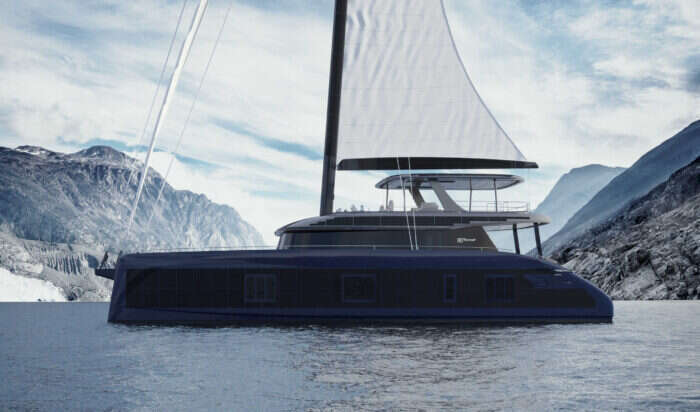
The Sunreef 80 Eco catamaran design is described by Sunreef Yachts as “an eco-responsible luxury craft combining electric propulsion, superyacht living spaces, reliable sailing performance and the latest green technologies in the industry.” The Sunreef 80 Eco is the largest in the yard’s Eco range, which boasts a large number of appealing ‘green’ features. These include state-of-the-art batteries, sustainable interiors, wind generators and smart water management. In fact, the entire Sunreef brand has undergone a central shift and rebrand towards producing “eco luxury” catamarans.
[See also: Style and Sustainability: The New Sunreef 80 Eco Catamaran]
Sunreef Yachts have worked hard on developing their own proprietary solar panel system, which has been integrated into the Sunreef 80 Eco design, allowing for 1,765 sq ft of ultra-light solar panels installed around the vessel. Pairing comfort and green technology, she has been designed for long range offshore cruising in total silence and in harmony with her surroundings. The entire design can be customized to suit her owners, with plenty of light-filled spaces in close proximity to the ocean. The first Sunreef 80 Eco is currently in build and due to make her debut in 2021.
sunreef-yachts-eco.com
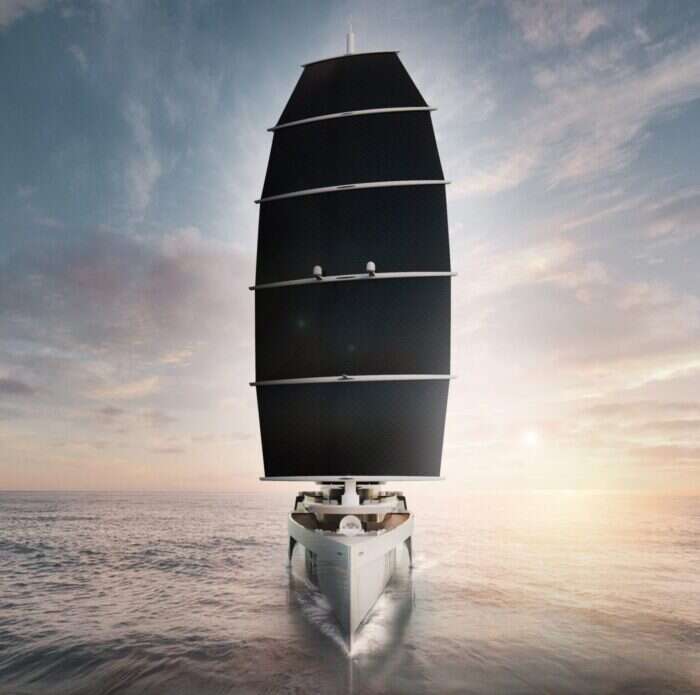
Tillberg Design of Sweden (TDoS) revealed its interpretation of an eco superyacht, the 265-ft Aegir 2.0 . The design house describes it as “the sailing yacht with the lowest possible environmental footprint.” A big claim indeed. The design has a wind-electric propulsion system that recharges her batteries as she sails. This means her range is theoretically infinite – the world will be her oyster. A Dynarig sail plan will ensure excellent performance, while the trimaran hull delivers excellent seakeeping.
Her eco credentials do not mean a sacrifice on comfort as Aegir 2.0 has plenty of luxury features including a swimming pool, beach club space and spacious rooms. A minimalist Scandinavian style interior pairs a subtle color palette with natural materials, complemented by large windows that fill all spaces with light.
tillbergdesign.com
Lürssen’s fuel cell yacht
There is little public information available about an exciting new project from German yard Lürssen Yachts, but it certainly warrants a place in this list for the feat of being the yard’s first yacht with fuel cell technology. Now in build, the yacht has been commissioned by a forward thinking and technology driven owner. This project is huge news as it represents a big step towards an emission free Lürssen superyacht. Flanking the traditional generators, the fuel cell will offer many benefits including the ability to anchor for 15 days or cruise 1,000 miles at slow speed with no emissions.
Complementing this new build project, the yard has set up an Innovation Laboratory that will “simulate and test the integration and operation of a Marine Hybrid Fuel Cell System on board a yacht powered by methanol.” Lürssen is certainly looking to the future and has ambitious goals to lead the field in the construction of emission free yachts.
lurssen.com
Elite Traveler
Latest in luxury, the explorer.
Thank you for subscribing to Elite Traveler.
Most Seaworthy Boats Under 30 Feet (What Are The Best Options?)

August 30, 2022

If asked about the most seaworthy boats, you would think of giant cruise and cargo ships. But what are the most seaworthy boats under 30 feet?
The most seaworthy boats tend to be quite large as longer and wider boats offer more stability at sea. But not everyone needs something as big as a super yacht to have fun and feel safe out on the open ocean, and smaller boats are definitely a lot more accessible to the average person. So what are the most seaworthy boats under 30 feet?
Some of the best and most seaworthy boats under 30 feet are:
- The Boston whaler 280 outrage
- Blackfin 272CC, the Hunter 27
- And the cape dory 28
All of these boats offer everything you’ll need to have a great time on the water. There are lots of things to consider when measuring how seaworthy a boat is. So what exactly makes a boat seaworthy, and what are some of the most common types of boats under 30 feet that are considered to be seaworthy? If you’re thinking about buying a boat, these are all things that you can really benefit from knowing, and if not, it's always good to learn something new.
Growing up in a small coastal town in Massachusetts, I spent a lot of time navigating the coastal waters of the surrounding area. Though I prefer sailing, there is no shortage of quality, seaworthy boats, both sail, and motor, that are perfect for spending time on the sea.
Table of contents
what makes a boat seaworthy.
There are lots of different factors to consider when thinking about how seaworthy a boat is; however, the two most important factors are stability and durability.
Boat stability can be defined as the boat's ability to right itself or come back to an even keel after something like the wind or a wave has caused it to roll to one side. This ability of the boat to stop itself from keeling over in rough conditions is incredibly important to any seaworthy vessel.
There are lots of different elements that affect how stable a boat will be, including the center of gravity, the center of buoyancy, and the general shape of the hull.
When calculating the stability of a boat, the center of gravity and the center of buoyancy is incredibly important. The center of gravity of an object is essentially the center of its mass. If you were to support the object from just this, it would balance perfectly, remaining in equilibrium. The center of buoyancy, on the other hand, is the center of mass of the water displaced by the vessel.
These forces of gravity and buoyancy push in opposite directions from these points, gravity pushing the boat down and buoyancy pushing it back up. When the boat is completely level, the center of gravity will be directly under the center of buoyancy. These two forces pulling in opposite directions ensure that the boat stays level.
However, if another force is applied to the boat, the centers of gravity and buoyancy can shift. Imagine a wave hits the side of the boat, causing it to lean in one direction. The farther the boat leans to one side, the closer the center of gravity and center of buoyancy come to one another.
As long as the center of buoyancy remains above the center of gravity, the forces of gravity and buoyancy will push the boat back up to a stable position. However, if the boat leans far enough to the side the center of buoyancy is below the center of gravity, causing the boat to be unstable and capsize. This is why it's so important for a boat to have a low center of gravity.
The shape of the hull also has also affected the stability of a boat, especially when the boat is heeled at a low angle. In general, boats with wider hulls are more stable. However, if you go overboard with this, a very wide boat without a center of gravity far below the water level is a recipe for disaster, as it will be much easier to capsize than it would be for a boat with a thinner hull and lower center of gravity.
Another very important factor to consider when determining the seaworthiness of a boat is its durability. Essentially, how unsinkable is the boat? Can it take a lot of damage before it will sink or will only minor damage cause catastrophic failure?
Unfortunately, for boats around 25 to 30 feet, durability can be quite a bit issue. As you know, in order for a boat to stay afloat, it has to displace its own weight in water, a boat's ability to do this can be easily compromised with even the smallest amount of damage.
Normally smaller boats under 20 feet contain a lot of foam in the hull to help keep the boat afloat if damaged. Larger boats do this as well, but they also employ the strategy of compartmentation in their designs. Basically, if the hull is divided into enough separate compartments, damage to one part of the hull isn’t much of a big deal. If one compartment is filled with water there are still plenty of others that aren't, allowing the boat to stay afloat and get back to shore.
Unfortunately, boats between 25 and 30 feet are likely to lack the necessary foam and compartmentation needed to keep them afloat if the hull is damaged. Even the smallest of holes form in the hull could cause the boat sink quickly. Because of this, it is often boats that are smaller than 20 feet and much longer than 30 feet that are the hardest to sink, leaving boats in the middle to have a higher risk of being catastrophically damaged than the others.
Most boats also have bilge pumps that allow water that collects in the bilge, the bottom of the inside of the hull, to be pumped out. This can help keep the boat afloat by removing much of the water that's been taken on over time. This allows the boat to better maintain its ability to displace its own weight.
In all, it is incredibly important that the boat is able to take the harsh beating that the sea will inevitably give it. The structural integrity of the boat must not be easily compromised by the abuse it takes, and the hatches and windows need to be just as strong and watertight to be truly seaworthy.
Other Factors That Can Affect Seaworthiness
Water shedding, reserve buoyancy, speed, and the design of the helm are a few more things to consider when talking about the seaworthiness of a boat.
For boats with self-bailing hulls that use gravity as opposed to a water pump to remove water, the ability for the boat to shed water is critical. If you get hit with a wave and water comes on board, you’ll want to be sure that the boat is able to rid itself of the extra water as quickly as possible.
Reserve buoyancy is also an essential thing to consider. Your boat may sit high on the water without any gear, fuel, or passengers on board; as the boat is loaded up, it will sit lower and lower in the water. This is incredibly important to be aware of as reserve buoyancy is integral to the stability of the boat.
The speed capabilities of the boat can also be crucial if you end up in a bad situation. An incoming storm may be able to be outrun by a faster boat, but in a boat with a speed of only 10 to 15 knots, it will be nearly impossible to get out ahead of the storm. Speed can also help you dodge waves and gives you increased control of your location and water conditions.
In addition to those aforementioned, the design and setup of the helm is another significant factor in the seaworthiness of a boat. The most important thing here is all-around visibility. Simply being able to see straight ahead doesn’t help you achieve the necessary overall situational awareness needed when piloting a boat in rough conditions.
The helm should also be equipped with the necessary electronic systems required to safely and efficiently pilot the boat. Water depth and GPS information should be easily accessible and the radio should be easily operable from one singular position around the wheel. An intelligently designed helm can really improve the overall seaworthiness of a boat.
What Types Of Boats Under 30 Are The Most Seaworthy?
If you were asked about what you think the most seaworthy boats are, there is no doubt that you would immediately think of some sort of giant, an ocean-crossing ship like a cruise ship or cargo ship. At the very least, you’ll think of some type of large yacht, most likely over 50 feet in length. In either case, the common link is that the boats you normally think of as being particularly seaworthy are also much larger than 30 feet in length.
So then, what types of boats are most commonly considered seaworthy while remaining under that 30 feet mark? Fishing boats and sailboats are two that immediately come to mind. While it would be inadvisable to cross the Atlantic in one of these boats, at least not without a lot of experience and preparation, fishing boats and sailboats alike are built durably enough to withstand the immense battering that the ocean can shell out while still oftentimes being under 30 feet.
Because sailboats and fishing tend to be the most seaworthy at this length while also being so vastly different from one another, I will be talking about the fishing boats that I deem to be the most seaworthy first, and will then list the most seaworthy sailboats after that.
The Most Seaworthy Fishing Boats Under 30 Feet
As mentioned before, fishing boats are among the most common seaworthy vessels under 30 feet, so I will be sharing the fishing boats that I deem to be the most seaworthy first.
1. Boston Whaler 280 Outrage
Coming in at 28 feet in length, the Boston Whaler 280 Outrage is an incredible boat for anyone looking to buy one of the most seaworthy offshore fishing boats. The boat is incredibly powerful, coming standard with two 250-horsepower Mercury Verado outboard engines. If you’re willing to shell out a bit of extra cash, these engines can be upgraded to two 400-horsepower engines that allow the boat to reach about 65 mph at full throttle.
Boston Whaler is known for making their boats unsinkable, and the 280 Outrage is no different, only adding to the seaworthiness of the vessel. The 280 Outrage is constructed using materials that float, so even if you take on water or damage the hull of the boat; it will stay level above the water. However, even if water does come on board, there's no need to worry as this boat’s self-bailing deck will shed the water in an instant.
As you would hope with any fishing boat, the 280 Outrage is packed to the brim with all the amenities you’ll need to have a successful fishing trip. The boat is equipped with 14-rod holders located all around the boat and also includes two 54-gallon fish boxes to store what you reel in. The inclusion of a convenient bait-prep area and tackle storage drawers adds to the utility of this incredibly seaworthy fishing boat.
2. Blackfin 272CC
At 27 feet and 2 inches, the Blackfin 272CC is almost a whole foot shorter than the Boston Whaler, but this doesn’t mean it's any less seaworthy. Easily the best-looking boat on this list, the 272CC’s design philosophy of utility and comfort really shine when you’re on this boat.
Boasting up to 600 horsepower, this boat has more than enough power to get up above 60 mph, and its hull remains stable in even the toughest of waters. The boat won’t leave you feeling uncomfortable either as many other fishing boats might. The seats at the helm and forward bow are beautifully designed and largely outmatch all of its competitors in the comfort department, so you know that your family won’t get restless the next time you take them out on the water.
Of course, as a fishing boat, you can still expect the boat to have all of the things necessary to aid you on your next fishing trip. The 272CC has 8-rod holders, two 54-gallon fish boxes, a 30-gallon bait well and a 5-gallon bait bucket. Though not quite as many rod holders as the aforementioned 280 Outrage, you can also upgrade and get six additional hardtop rod holders that can bring the total to 14.
The Most Seaworthy Sailboats Under 30 Feet
Though the aforementioned fishing boats are worth consideration for anyone looking for the most seaworthy boats under 30 feet, I’ve always been much more of a sailor myself, so here are the sailboats I think are the most seaworthy.
1. Cape Dory 28
Coming in at 28 feet and 9 inches, the Cape Dory 28 is a classic sailboat with unmatched seaworthiness. In fact, to prove how seaworthy this boat is, in 2009, a sailor named Fred Bickum successfully circumnavigated the earth, a voyage that took him three years in his 1978 Cape Dory.
Produced from 1975 to 1988, the Cape Dory 28 is still one of the most rugged and sought-after sailboats today. Designed by Carl Alberg, the Cape Dory combines classic design elements with comfort, durability, and spaciousness. When onboard, this bout truly feels much bigger than it actually is, even when compared with many modern 28-foot sailboats.
The build quality of this boat is unrivaled, with solid fiberglass in polyester resin hull and decks made from balsa and plywood-cored fiberglass. However, though its construction is solid, if not properly maintained over the years, osmotic blistering in the hull and water absorption through stress cracks in the deck can cause the structure of the boat to be weakened. Bronze is used for most of the fittings around the boat and the 8 opening ports, which adds to the classic look of this sailboat.
Under sail, the Cape Dory 28 is incredibly capable in harsh waters and in conditions with choppy water or low wind; the boat still maintains the ability to move a lot more quickly than many other similarly sized sailboats.
The spaciousness of the Cape Dory’s interior is also one of the big selling points, especially for a boat this old that can still compete with newer models. It features a V-berth bed and a cockpit with wheel steering that can comfortably fit six adults, as well as a galley and bathroom equipped with a toilet and shower. The interior cockpit is especially useful if you run into stormy weather as you can easily escape the harsh outside conditions and still maintain control of the boat.
2. Hunter 27
Also coming in at 27 feet and 2 inches, the Hunter 27 is a great seaworthy sailboat for anyone from beginner sailors to seasoned veterans. First introduced in 1974, the Hunter 27 has stood the test of time and is still one of the most popular sailboats to this day.
The Hunter 27’s lack of customization and standardized construction means that the price of this boat is much lower than many others, but don’t even begin to think that this boat is built poorly as the hull is strong enough to handle whatever the ocean throws at it. The boat is shipped with a mainsail and 110% genoa, offering an average amount of square sail footage for a boat its size and features wheel steering, something much more commonplace on a larger boat.
The Hunter 27 handles great under sail, but even if winds are particularly weak or you’re simply feeling a bit lazy, you won’t have to worry about being stranded. Since 1979 this boat has come standard with a reliable 14-horsepower Yanmar diesel engine. Though this won’t get you moving at groundbreaking speeds, it's enough to keep you moving if you need it to.
The boat also provides all the space you’ll need when spending multiple days on the water. The Hunter 27 includes a comfortable cabin, a saloon with enough seating for six centered around a table, a solid galley, and a toilet and shower, all wrapped up in this compact package.

What's The Fastest Boat That Has Crossed the Atlantic Ocean?

Is Motion Sickness Worse In The Front Or Back Of A Boat?

Sailing As A Sport: An Overview Of Its History And Evolution

How Do Boats Float?
This article may contain affiliate links where we earn a commission from qualifying purchases. The images and content on this page may be created by, or with the assistance of, artificial intelligence, and should be used for entertainment and informational purposes only.
About THE AUTHOR
Brian Samson
I have a deep love of houseboating and the life-changing experiences houseboating has brought into my life. I’ve been going to Lake Powell on our family’s houseboat for over 30 years and have made many great memories, first as a child and now as a parent. My family has a passion for helping others have similar fun, safe experiences on their houseboat.
Trending Now

How Fast Does A Shipping Boat Go?

Mastering Boat Steering Techniques: From Rudder to Tiller

Is A Ferry A Type Of Boat? (Everything You Need To Know)

What Is The Gunwale On A Boat?
After spending over 30 years on houseboats, the memories and knowledge we've gained will never fade. Learn from our experiences here on LakeWizard. You can read more about us and our team, here .
©2024 LakeWizard. All rights reserved.
You can email us at [email protected]
LakeWizard.com is a participant in the Amazon Services LLC Associates Program, an affiliate advertising program designed to provide a means for sites to earn advertising fees by advertising and linking to Amazon. This site also participates in other affiliate programs including but not limited to ShareASale, CJ, and ClickBank, and is compensated for referring traffic and business to these companies.
Yachting World
- Digital Edition

Best sailing tender: get a buzz from your boat or boot
- Toby Hodges
- July 13, 2022
Want some easy, fun sailing this summer? launched from your yacht or car, the latest sailing tender ideas give that instant sailing buzz. Toby Hodges and Sam Fortescue report

While we all crave as much helming pleasure as possible from our cruising yachts, the reality is that after making realistic space, volume and budget compromises, they may not always be that exhilarating on the helm. But once you reach a destination or anchorage, what’s to stop you, your friends or kids getting your hands-on tiller-sailing fix if you can stow the right sailing tender aboard?
You could argue that the development of lightweight, modular or inflatable dinghies in recent years has solved a headache for some yacht owners – now they can go for extra volume, or switch to a multihull perhaps, safe in the knowledge they can get the spray-in-the-face dinghy experience from a tender or toy once anchored.
Stowage space, whether on deck, on davits or in a locker, governs what options are available. In the past the choice has fallen into three categories: a rowing dinghy you can sail, a nesting dinghy, or a sailing inflatable (such as the Tinker Tramp). And while these categories haven’t necessarily changed, the design and technology lately has made the products immeasurably more appealing!
The ability to stow a quick-to-rig toy in the boot or on the roof of the car, has also unlocked the potential to explore a multitude of different sailing waters easily. These designs have brought to sailing what inflatable paddleboards have brought to watersports.
Best sailing tender

For cruising sailors, this could be an ideal solution: a stable, lightweight tender that will sail well too
OC Sailing Tender
This has been at the top of my wishlist for tenders for some time, but now the family-run New Zealand company has come out with a rig for this lightweight composite boat that has just doubled the appeal.
OC Tenders was developed by experienced cruising sailors who were after a dry, stable, maintenance-free tender which is light enough to pull up a beach. A wide hull shape with plumb bow and flat run provides stability and volume and early planing ability, while foam sandwich construction makes it solid (puncture free) and light enough to carry. These also happen to be key elements for many modern performance sailing dinghy designs.
OC Tenders is unveiling a new Sailing Tender version this year, a kit which transforms two of its existing tenders into sailing dinghies. The main difference is a centreboard case which attaches to the thwart with a mast step below, neither of which can be removed, but only add 6kg weight. The rest of the sailing components are stored in bags which fit inside the tender, including a 6m mast in two sections, boom (both in 30% carbon), centreboard, rudder, hiking straps and 7.5m2 sail.
OC has a video of the tender surfing along and another of how easy it is to right it if you capsize. The boats weighs 68kg for the 3.3m or 74kg for the 3.5m, while the sailing components add just 15kg. Both are also available in carbon versions (a NZ$4,000 upgrade). The slight catch may be the cost, and that it’s a small company with low production run and high demand.
Price: OC330 from NZ$23,500 (circa £12,000).
Buy it now from octenders

Reverso Air is quick to get on the plane. Photo: Armand Dayde
Reverso Air
It may be a nesting dinghy, but there’s nothing clinker-built about the Reverso Air. From the outset, the team behind this pocket beast of a boat were focused on performance, and that is what you get in spades. It has been clocked at 16 knots and readily takes to the plane, surfing down anything from harbour chop to long swell.
Reverso is built in Brittany using advanced composite construction. The 3.40m hull is infused in honeycomb sandwich, for stiffness and light weight, and carbon reinforcing is added where the loads are greatest, such as the mast step. The mast itself is a tube of high-modulus carbon fibre weighing just under 3kg, and the sail is 7m2 of high-tech membrane from Incidence.
Part of the stellar performance comes from the hull shape, designed by Charles Bertrand. A broad beam, flat bottom and deep chines provide stability for sailing with kids and a great platform for planing when a gust blows. “It is the lightness of the boat which makes it fast and efficient, allowing it to accelerate quickly,” says founder Antoine Simon. “Also, the quality of the materials, which give a dynamic response and transmit the forces, especially with the rigid hull.”
The boat is designed to take two grown-ups or an adult and two kids, so you can refine your technique in company if you like. Simon says this makes the boat ideal for teaching kids or going out for a solo burn.
Assembly is pretty simple and can take less than two minutes. The hull is composed of four parts, the heaviest of which weighs 16.8kg. The sections clip together along the coaming using stainless-steel levers. Then you add tension along the bottom of the boat using two Dyneema lines with a 1:14 cascade that puts on 600kg of compression.
When disassembled, the parts nest inside each other, fitting readily into the boot of a family car or an SUV. Measuring 1.45m x 0.92m x 0.72m, the folded boat is also designed for easy fixing to a trailer or towing-ball platform behind a car.
Accessories that improve the storage and use of the boat include a bag, (€490); smaller padded bags for the four mast sections, centreboard, tiller and rudder; a mounting mat to protect the boat on rough surfaces (€170); and a folding beach trolley (€490). And there’s a GPS speedometer (€499), specially designed for mounting at the base of the mast.
Price: Reverso Air €8,913 plus €1,090 shipping.
Buy it now from Sailreverso

You don’t have to be a pro to get the AST Foiler skimming the waves. Photo: Sören Hese
Foiling is no longer limited to pros and daredevils. AST’s beautifully designed foiling dinghy makes it possible for almost anyone to experience the exhilaration of flying on water. With a top speed of 25 knots-plus and a really simple control system, it is easy to get airborne.
The key is the mechanical foiling system, which requires no trimming. A foil on each side of the 3.85m hull resembles nothing more than a giant spider’s leg, or a wonky ‘7’. The foils are loose-mounted in such a way that they can cant slightly according to the tack you’re on. When the boat goes about, the leeward foil rises and the new windward foil drops. It requires no electronics or hydraulics – just a bit of elementary physics.
You control the boat using a T-shaped rudder whose foil supports the boat aft and helps keep you balanced while foiling. With foils deployed, the effective beam jumps from 1.58m to 2.10m and the draught from 15cm to 1.10m, giving the boat excellent stability.
AST says the hull will fly from 8 knots of true wind, thanks in part to the lightweight layup, with an overall weight of 55kg. The foils, rudder and mast are all in carbon fibre, while the hull is in a lightweight foam-epoxy sandwich.
With a cool reverse bow, open transom and hiking wings, this boat looks the business. It can support up to 95kg of crew weight, so could in theory take two children. But this is really a solo sailer, designed for thrills and spills. AST offers two different sails, 7.5m2 or 9.5m2.
The foils can be folded flush to the hull for transport., there’s a custom-made aluminium trolley for launching and towing; padded covers for the foils and rudder (€269); and a Velocitek SpeedPuck to measure your speed (€399).
This is not a cheap option… but it is a fun one.
AST also does a non-foiling L12 Lowrider – a 3.82m planing performance dinghy, which weighs just 30kg.
Prices: AST Folier €15,631 inc VAT, L12 Lowrider €8,824 ex VAT.
Buy it now from Ast-yachts

IZIBoat is easy to transport and can be assembled in 15 minutes
IZIBoat germinated from a desire to make sailing easy, fun and accessible to all, by creating a catamaran that is ultra fast to assemble (less than 15 minutes). No tools are needed thanks to a neat plug, lock and tension system. While speeds of 14+ knots are reportedly achievable, it is more aimed at accessible sailing, regardless of age or ability. So it can seat four and is intuitive for new sailors thanks to joystick steering – just tilt the stick the way you want to turn.
The brainchild of François Tissier, who dreamed of a dinghy with ease and stability while living in the South Pacific, it took many years of R&D and 11 prototypes. The beach cat measures 500x62cm, so can easily be stored in a garage and its five components weigh 152kg, so it can be transported on the roof of a car or even towed by a bike or e-bike.
Price: from €8,990.
Buy it now from Iziboat

LiteboatXP 16 can be rowed or sailed – fast
LiteboatXP 16
This is a fun sailing boat that you can row properly for recreation too. The first Liteboat XP was a 20ft model which we tested four years ago and were so impressed with the sailing ability, we jointly gave it a European Yacht of the Year award. It’s also excellent for rowing enthusiasts. For those still sceptical, consider that it’s drawn by in-demand IMOCA designer Sam Manuard.
The new 5m/16ft model is more compact and lighter still (100kg). There’s no cuddy, but it still sports a sliding rowing seat, carbon oars and outriggers and a catboat-style rig with two part carbon mast and a 7.5m2 boom-less sail. But it’s when reaching with the 6m2 gennaker that you’ll really get the buzz. It converts from sailing to rowing mode in under a minute. It’s an efficient explorer that’s blast to sail, will keep you fit and avoids the need for a smelly, noisy outboard.
Price: from €14,500.
Buy it now from Liteboat
Best inflatable sailing tender

The black and yellow Tiwal rocket is designed in Brittany. Photo: Christiane le Port
The original Tiwal 3 is already marking its 10th anniversary, the design having been at the forefront of using drop stitch technology to create a really stiff inflatable. Now the boat has been turbo-charged, tweaked and improved. The result is the Tiwal 3R, with a top speed of 14 knots and a helming position just millimetres off the water.
It comes deflated in two bags weighing around 30kg each (plus a smaller sail bag), and comprises a concave inflatable hull and anodised aluminium ‘exoskeleton’, which transmits the forces from the mast, rudder and daggerboard. It also provides two raised hiking ‘wings’ which allow you to balance the 6m2 or 7m2 sail, tailor-made by North Sails in Xi V2 racing laminate.
The 3R’s performance boost stems from a number of small steps. For instance, the hiking bars have been extended aft so that you can shift weight back when the wind picks up. The aluminium frame is stronger and stiffer for better power transfer, and the hull is a more efficient shape, courtesy of the rail on the stern. The mast and boom are now 90% carbon for lighter weight.
Assembly takes 25 minutes – a little longer than the original Tiwals, because of the additional elements of the frame and control lines, according to founder Emmanuel Bertrand. Experience says there is a bit of fiddly slotting of aluminium tubes together, which can be trickier if sand gets into the joint. The boat is rated for crew up to 200kg, which allows for two adults or one grown-up and two children. Really, though, you want to be sailing this alone at top speed. And with a choice of two sails, you can go out in pretty much any conditions.
Price: from £8,140.
Buy it now from Tiwal
Dutch brand DinghyGo has built a reputation for the reliability of its growing range of sailing inflatables.
They are not performance oriented, but are easy to assemble, have bags of buoyancy and can be stored in two mid-sized bags. The range starts at 2.30m LOA, but the flagship Orca 375 is the latest release, with a 4.8m2 mainsail and a 1.1m2 jib.
The four-piece mast requires three soft stays to keep it aloft, while the foot is anchored through a thwart. With 650kg of payload capacity, you can bring three adults and a heap of camping gear with you.
Price: £4,000.
Buy it now from Dinghygo
Minicat Guppy
The Czech sailor behind the MiniCat brand teamed up with round-the-world sailor Laura Dekker to launch the Guppy.
At 3.00m LOA, it is the smallest boat in the Minicat range, with a capacity for two, but weighs a staggeringly small 26kg itself.
Perched on two big 33cm floats, just a small aluminium frame does the job of supporting the mast and the trampoline. The mast and its 3.9m2 sail is stayed to a short bowsprit, and the whole takes just 15 minutes to put together. Stub keel fins help reduce leeway.
Its light weight makes it eminently portable and easy to stow.
Price: €2,665 ex-VAT.
Buy it now from Minicatamaran
Inflatable Wingfoil
Granted, it can look a bit daft watching middle-aged folk pumping and flapping away while trying to get a giant inflatable wing to lift their mass onto a skinny foil. But once you’ve experienced that feeling of pure flight, silently skimming over the surface, there’s no going back.
Whether for surfing, windsurfing, or even kiting, any solid boards take up valuable locker space. All of which arguably makes an inflatable foil board and an inflatable wing the ultimate in compact sailing fun.
The foils typically disconnect from their masts and pack in protective bags. The inflatable boards can also be used to wingsurf or paddle on in displacement mode. Or try towing one behind a tender – with a foil you only need very small speeds (around 6 knots) and, with practice, you can be surfing a wee wake.
The smaller volume boards better suit surf and wingfoil use and the larger boards are for wing and SUP enthusiasts.
F-One’s Rocket Air is designed around its rigid boards, and range from 75lt (4ft 11in) to 185lt (7ft 11in) and prices from £625-£825.
Buy it now from f-one.world
Naish, meanwhile, has models of its new Hover board from 80-170lt, which have composite carbon plates on the bottom for the foil join for a stiff ride.
Buy it now from Naishfoils
If you enjoyed this….
Yachting World is the world’s leading magazine for bluewater cruisers and offshore sailors. Every month we have inspirational adventures and practical features to help you realise your sailing dreams. Build your knowledge with a subscription delivered to your door. See our latest offers and save at least 30% off the cover price.

10 Best Small Sailboats (Under 20 Feet)
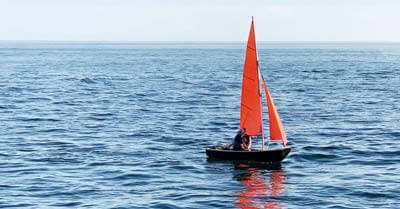
Last Updated by
Daniel Wade
December 28, 2023
Compact, easy to trailer, simple to rig, easy to maintain and manage, and affordable, the best small boats all have one thing in common: they offer loads of fun while out there on the water.
So whether you're on a budget or just looking for something that can offer ultimate daytime rides without compromising on safety, aesthetic sensibilities, alternate propulsion, and speed, the best small sailboats under 20 feet should be the only way to go.
Let's be brutally honest here; not everyone needs a 30-foot sailboat to go sailing. They come with lots of features such as electronics, entertainment, refrigeration, bunks, a galley, and even a head. But do you really need all these features to go sailing? We don't think so.
All you need to go sailing is a hull, a mast, rudder, and, of course, a sail. And whether you refer to them as daysailers, trailerable sailboats , a weekender sailboat, or pocket cruisers, there's no better way to enjoy the thrills of coastal sailing than on small sailboats.
There are a wide range of small boats measuring less than 20 feet available in the market. These are hot products in the market given that they offer immense thrills out on the sea without the commitment required to cruise on a 30-footer. A small sailboat will not only give you the feel of every breeze but will also give you the chance to instantly sense every change in trim.
In this article, we'll highlight 10 best small sailboats under 20 feet . Most models in this list are time-tested, easy to rig, simple to sail, extremely fun, and perfect either for solo sailing or for sailing with friends and family. So if you've been looking for a list of some of the best small sailboats , you've come to the right place.
So without further ado, let's roll on.
Table of contents
{{boat-info="/boats/hunter-15"}}
The Marlow-Hunter 15 is not only easy to own since it's one of the most affordable small sailboats but also lots of fun to sail. This is a safe and versatile sailboat for everyone. Whether you're sailing with your family or as a greenhorn, you'll love the Hunter 15 thanks to its raised boom, high freeboard, and sturdy FRP construction.
With high sides, a comfortable wide beam, a contoured self-bailing cockpit, and fiberglass construction, the Hunter 15 is certainly designed with the novice sailor in mind. This is why you can do a lot with this boat without falling out, breaking it, or capsizing. Its contoured self-baiting cockpit will enable you to find a fast exit while its wide beam will keep it steady and stable no matter what jibes or weight shifts happen along the way.
This is a small sailboat that can hold up to four people. It's designed to give you a confident feeling and peace of mind even when sailing with kids. It's easy to trailer, easy to rig, and easy to launch. With a price tag of about $10k, the Hunter 15 is a fun, affordable, and versatile boat that is perfect for both seasoned sailors and novices. It's a low-maintenance sailboat that can be great for teaching kids a thing or two about sailing.
Catalina 16.5
{{boat-info="/boats/catalina-16-5"}}
Catalina Yachts are synonymous with bigger boats but they have some great and smaller boats too such as Catalina 16.5. This is one of the best small sailboats that are ideal for family outings given that it has a big and roomy cockpit, as well as a large storage locker. Designed with a hand-laminated fiberglass sloop, the Catalina 16.5 is versatile and is available in two designs: the centerboard model and the keel model.
The centerboard model is designed with a powerful sailplane that remains balanced as a result of the fiberglass centerboard, the stable hull form, and the rudder. It also comes with a tiller extension, adjustable hiking straps, and adjustable overhaul. It's important to note that these are standard equipment in the two models.
As far as the keel model is concerned, this is designed with a high aspect keel as the cast lead and is attached with stainless steel keel bolts, which makes this model perfect for mooring or docking whenever it's not in use. In essence, the centerboard model is perfect if you'll store it in a trailer while the keel model can remain at the dock.
All in all, the Catalina 16.5 is one of the best small sailboats that you can get your hands on for as low as $10,000. This is certainly a great example of exactly what a daysailer should be.
{{boat-info="/boats/hobie-16"}}
There's no list of small, trailerable, and fun sailboats that can be complete without the inclusion of the classic Hobie 16. This is a durable design that has been around and diligently graced various waters across the globe since its debut way back in 1969 in Southern California. In addition to being durable, the Hobie 16 is trailerable, great for speed, weighs only 320 pounds, great for four people, and more importantly, offers absolute fun.
With a remarkable figure of over 100,000 launched since its debut, it's easy to see that the Hobie 16 is highly popular. Part of this popularity comes from its asymmetric fiberglass-and-foam sandwiched hulls that include kick-up rudders. This is a great feature that allows it to sail up to the beach.
For about $12,000, the Hobie 16 will provide you with endless fun throughout the summer. It's equipped with a spinnaker, trailer, and douse kit. This is a high-speed sailboat that has a large trampoline to offer lots of space not just for your feet but also to hand off the double trapezes.
Montgomery 17
{{boat-info="/boats/montgomery-17"}}
Popularly known as the M-17, The Montgomery 17 was designed by Lyle C. Hess in conjunction with Jerry Montgomery in Ontario, California for Montgomery Boats. Designed either with keel or centerboard models, the M-17 is more stable than most boats of her size. This boat is small enough to be trailered but also capable of doing moderate offshore passages.
This small sailboat is designed with a masthead and toe rail that can fit most foresails. It also has enough space for two thanks to its cuddly cabin, which offers a sitting headroom, a portable toilet, a pair of bunks, a DC power, and optional shore, and a proper amount of storage. That's not all; you can easily raise the deck-stepped mast using a four-part tackle.
In terms of performance, the M-17 is one of the giant-killers out there. This is a small sailboat that will excel in the extremes and make its way past larger boats such as the Catalina 22. It glides along beautifully and is a dog in light air, though it won't sail against a 25-knot wind, which can be frustrating. Other than that, the Montgomery 17 is a great small sailboat that can be yours for about $14,000.
Norseboat 17.5
{{boat-info="/boats/norseboat-17-5"}}
As a versatile daysailer, Norseboat 17.5 follows a simple concept of seaworthiness and high-performance. This small sailboat perfectly combines both contemporary construction and traditional aesthetics. Imagine a sailboat that calls itself the "Swiss Army Knife of Boats!" Well, this is a boat that can sail and row equally well.
Whether you're stepping down from a larger cruiser or stepping up from a sea kayak, the unique Norseboat 17.5 is balanced, attractive, and salty. It has curvaceous wishbone gaff, it is saucy, and has a stubby bow-sprit that makes it attractive to the eyes. In addition to her beauty, the Norseboat 17.5 offers an energy-pinching challenge, is self-sufficient, and offers more than what you're used to.
This is a small, lightweight, low-maintenance sailboat that offers a ticket to both sailing and rowing adventures all at the same time. At about 400 pounds, it's very portable and highly convenient. Its mainsails may look small but you'll be surprised at how the boat is responsive to it. With a $12,500 price tag, this is a good small sailboat that offers you the versatility to either row or sail.
{{boat-info="/boats/sage-marine-sage-17"}}
If you've been looking for a pocket cruiser that inspires confidence, especially in shoal water, look no further than the Sage 17. Designed by Jerry Montgomery in 2009, the Sage 17 is stable and should heel to 10 degrees while stiffening up. And because you want to feel secure while sailing, stability is an integral feature of the Sage 17.
This is a sailboat that will remain solid and stable no matter which part of the boat you stand on. Its cabin roof and the balsa-cored carbon-fiber deck are so strong that the mast doesn't require any form of compression post. The self-draining cockpit is long enough and capable of sleeping at 6 feet 6 inches.
The Sage 17 may be expensive at $25k but is a true sea warrior that's worth look at. This is a boat that will not only serve you right but will also turn heads at the marina.
{{boat-info="/boats/laserperformance-laser-sb3"}}
Having been chosen as the overall boat of the year for 2008 by the Sailing World Magazine, the Laser SB3 is one of the coolest boats you'll ever encounter. When sailing upwind, this boat will lock into the groove while its absolute simplicity is legendary. In terms of downwind sailing, having this boat will be a dream come true while it remains incredibly stable even at extraordinary speed.
Since its debut in 2004, the Laser SB3 has surged in terms of popularity thanks to the fact that it's designed to put all the controls at your fingertips. In addition to a lightweight mast, its T- bulb keel can be hauled and launched painlessly. For about $18,000, the Laser SB3 ushers you into the world of sports sailing and what it feels to own and use a sports boat.
{{boat-info="/boats/fareast-18"}}
As a manufacturer, Fareast is a Chinese boat manufacturer that has been around for less than two decades. But even with that, the Fareast 18 remains a very capable cruiser-racer that will take your sailing to the next level. In addition to its good looks, this boat comes with a retractable keel with ballast bulb, a powerful rig, and an enclosed cabin.
Its narrow design with a closed stern may be rare in sailboats of this size, but that's not a problem for the Fareast 18. This design not only emphasizes speed but also makes it a lot easier to maintain this boat. Perfect for about 6 people, this boat punches above its weight. It's, however, designed to be rigged and launched by one person.
This is a relatively affordable boat. It's agile, safe, well-thought-out, well built, and very sporty.
{{boat-info="/boats/chuck-paine-paine-14"}}
If you're in the market looking for a small sailboat that offers contemporary performance with classic beauty, the Paine 14 should be your ideal option. Named after its famous designer, Chuck Paine, this boat is intentionally designed after the classic Herreshoff 12.5 both in terms of dimensions and features.
This is a lightweight design that brings forth modern fin keel and spade rudder, which makes it agile, stable, and faster. The Paine 14 is built using cold-molded wood or west epoxy. It has varnished gunnels and transoms to give it an old-time charm. To make it somehow modern, this boat is designed with a carbon mast and a modern way to attach sails so that it's ready to sail in minutes.
You can rest easy knowing that the Paine 14 will not only serve you well but will turn heads while out there.
{{boat-info="/boats/wd-schock-lido-14"}}
Many sailors will attest that their first sailing outing was in a Lido 14. This is a classic sailboat that has been around for over four decades and still proves to be a perfect match to modern small boats, especially for those still learning the ropes of sailing.
With seating for six people, the Lido 14 can be perfect for solo sailing , single-handed sailing, or if you're planning for shorthanded sailing. While new Lido 14 boats are no longer available, go for a functional used Lido 14 and you'll never regret this decision. It will serve you well and your kids will probably fall in love with sailing if Lido 14 becomes their main vessel during weekends or long summer holidays.
Bottom Line
There you have it; these are some of the best small sailboats you can go for. While there are endless small sailboats in the market, the above-described sailboat will serve you right and make you enjoy the wind.
Choose the perfect sailboat, invest in it, and go out there and have some good fun!
Related Articles
I've personally had thousands of questions about sailing and sailboats over the years. As I learn and experience sailing, and the community, I share the answers that work and make sense to me, here on Life of Sailing.
by this author
Best Sailboats
Most Recent

What Does "Sailing By The Lee" Mean?
October 3, 2023

The Best Sailing Schools And Programs: Reviews & Ratings
September 26, 2023
Important Legal Info
Lifeofsailing.com is a participant in the Amazon Services LLC Associates Program, an affiliate advertising program designed to provide a means for sites to earn advertising fees by advertising and linking to Amazon. This site also participates in other affiliate programs and is compensated for referring traffic and business to these companies.
Similar Posts

Affordable Sailboats You Can Build at Home
September 13, 2023

Best Small Sailboats With Standing Headroom

Best Bluewater Sailboats Under $50K
Popular posts.

Best Liveaboard Catamaran Sailboats

Can a Novice Sail Around the World?
Elizabeth O'Malley
June 15, 2022

4 Best Electric Outboard Motors

How Long Did It Take The Vikings To Sail To England?

10 Best Sailboat Brands (And Why)
December 20, 2023

7 Best Places To Liveaboard A Sailboat
Get the best sailing content.
Top Rated Posts
Lifeofsailing.com is a participant in the Amazon Services LLC Associates Program, an affiliate advertising program designed to provide a means for sites to earn advertising fees by advertising and linking to Amazon. This site also participates in other affiliate programs and is compensated for referring traffic and business to these companies. (866) 342-SAIL
© 2024 Life of Sailing Email: [email protected] Address: 11816 Inwood Rd #3024 Dallas, TX 75244 Disclaimer Privacy Policy
- Articles and Guides
11 Best Small Sailboat Brands: How to Choose Your Next Daysailer or Pocket Cruiser
12th oct 2023 by samantha wilson.

Sailing is a relaxing, invigorating pastime that allows you to harness wind and waves in a unique and historic way without requiring a 50-foot yacht to enjoy what’s special about the experience. In fact, small sailboats allow a delightful back-to-basics experience that often gets lost on larger, systems-heavy sailboats.
On a small sailboat you can connect with the sea, feeling the boat move beneath you. The boat is typically easy to rig, simple to sail, and can even be sailed solo. Small sailboats give you the freedom to trailer your or car-top your boat and go anywhere, and they’re perfect for learning the nuances of sailing. There are many excellent brands and models of small sailboat, each with their own appeal, and here we narrow down some of our favorite in the daysailer and pocket cruiser categories under 30 feet.
Difference Between a Daysailer and a Pocket Cruiser
While there are many different types of sailboat on the market and there is no single definition of either a daysailer or a pocket cruiser, they are used in a particular way, as the names imply. The term daysailer covers a huge array of sailboats, smaller and sometimes larger, and is generally defined as any day boat used for local sailing, with a simple rig, and easy to get underway. A pocket cruiser typically offers a cabin and head, and adequate accommodations for an overnight stay and sometimes longer cruises. Having said that, there is a large overlap between the two in many instances, so the lines may become blurred.
What Size is a Small Sailboat?
Small is a relative term of course, but in general—and for the purposes of this article—a small sailboat is one that could be sailed by a small crew, often with one or two people aboard. It will have a simple rig and be trailerable, and it might be either a daysailer or pocket-cruiser style vessel as above. Within those categories, there are many models and styles, but when it comes to length we consider a sailboat as small when it’s under 30 feet in overall length.
The Best Sailboats Under 30 Feet
Pocket cruiser: Beneteau First 27. The Beneteau First 27 is a modern example of a pocket cruiser, earning Cruising World ’s Boat of the Year award in the Pocket Cruiser category in 2022. With space for up to six people accommodated in a separated bow-cabin and open saloon, it offers families the chance to go farther, explore more, and cruise in comfort. There is a galley with freshwater and a head, adding to the interior home comforts. The sailboat itself is modern, fast, and stable, designed by Sam Manuard, and has been designed to be incredibly safe and almost unsinkable thanks to its three watertight chambers. The handling is also refreshingly intuitive, with a well-designed cockpit, simple deck controls, and double winches allowing it to be sailed solo, by two people, or a small crew.

Photo credit: Beneteau
Daysailer: Alerion 28. You’ll certainly turn heads cruising along in an Alerion 28, a daysailer whose forerunner by the same name was designed by Nathanael Herreshoff in 1912 and then updated with a modern underbody for fiberglass production by Carl Schumacher in the late 1980s. This pretty daysailer manages to combine a traditional silhouette and classic feel, with very modern engineering creating an excellent package. Over 470 of these sailboats were built and sold in the past 30 years, making it one of the most popular modern daysailers on the water. With a small cabin and saloon, complete with miniature galley area, it offers respite from the sun or wind and the option for a night aboard. The cockpit offers a beautiful sailing experience, with plenty of space for the whole family.

Photo credit: Alerion Yachts
The Best Sailboats Under 25 Feet
Pocket cruiser: Cornish Crabber 24. British manufacturer Cornish Crabber has been producing beautiful, traditional style small sailboats for decades, ensuring they honor their heritage both in the construction style and appearance of their boats. The Cornish Crabber 24 is the most iconic of their range and dates back to the 1980s. It offers a simple yet surprisingly spacious interior layout with cabin, galley, and head, and a good sized cockpit, as well as seating for up to six people. It’s the perfect family sailboat, with clever use of storage as well as just under 5000 pounds of displacement providing stability and easy tacking. Aesthetically the 24 is simply beautiful, with a traditional silhouette (combined with modern engineering), finished in hardwood trims.

Photo credit: Cornish Crabber
Daysailer: Catalina 22 Capri. Catalina sailboats need little introduction, and are one of the world’s best-known, most-respected brands building small sailboats. The Catalina 22 Capri (also available in a sport model) is a great example of what Catalina does so well. While we’ve classified it as a daysailer, it could easily cross into the pocket cruiser category, as it offers excellent sailing performance in almost all conditions as well as having a small cabin, galley, and head. Loved for its safety, stability, ease of handling and simple maintenance, it makes for a good first family boat for getting out onto the bay or lake.

Photo credit: Catalina
The Best Sailboats Under 20 Feet
Pocket cruiser: CapeCutter 19. This is another model that combines the beauty of the traditional silhouettes with modern-day advancements. The design originates from the classic gaff cutter work boats, but today offers excellent performance—in fact it’s one of the fastest small gaffers in the world. The interior is cleverly spacious, with four berths, two of which convert into a saloon, as well as a simple galley area. With quick rigging, it can be sailed solo, but is also able to accommodate small groups, making it a capable and hugely versatile pocket cruiser.

Photo credit: Cape Cutter 19
Daysailer: Swallow Yachts’ BayRaider 20. Classic looks with modern performance are combined in Swallow Yachts’ beautiful BayRaider 20. This is one of the most capable and safest daysailers we’ve seen, but also incredibly versatile thanks to the choices of ballast. Keep the ballast tank empty and it’s light and fast. Fill the tank up and you’ve got a stable and safe boat perfect for beginners and families. While it’s got an eye-catching traditional style, the engineering is modern, with a strong carbon mast and construction. While this is a true daysailer, you can use the optional spray hood and camping accessories to create an overnight adventure.

Photo credit: Swallow Yachts
The Best Sailboats Under 15 Feet
Pocket Cruiser: NorseBoat 12.5. Can we truly call the NorseBoat 12.5 a pocket cruiser? Yes we can! The sheer versatility of this excellent little sailboat has convinced us. These beautiful hand-crafted sailboats offer exceptional performance and are described by the manufacturer as ‘the Swiss Army Knives of sailboats’. The traditionally styled 12.5 can be sailed, rowed, and motored. It can be trailered, easily beached, and even used as a camp cruiser, allowing for overnight adventures. There is no end to the fun that can be had with this easy-to-sail and easy-to-handle boat, which makes it a dream to learn in. With positive flotation, lots of clever storage, and a full-size double berth for camp cruising, it really is the perfect mini pocket cruiser.

Photo credit: NorseBoats
Daysailer: Original Beetle Cat Boat 12: All across the bays of the US east coast cat boats have long been part of the ocean landscape. Able to access shallow rocky coves yet also withstand the strong coastal winds, these traditional New England fishing boats have an iconic shape and gaff-rigged mainsails. Beetle Cat have been producing elegant wooden cat boats for over 100 years – in fact they’ve made and sold over 4,000 boats to date. Their 12 foot Cat Boat 12 is one of their finest models, offering lovely daysailing opportunities. It has a wide beam and centerboard that lifts up, allowing it to access shallow waters, as well as a forward mast and single sail gaff rig in keeping with the traditional cat boats. To sail one of these is to be part of the heritage of New England and Cape Cod, and to honor the ancient art of hand-made boat building.
Beetle Cat official website

Photo credit: Beetle Cat
The Best Small Sailboats for Beginners
When it comes to learning to sail, it’s important to have a boat that is easy to handle. There’s no quicker way to put yourself or your family off sailing than to start off with a boat that is either too big or too complicated. When choosing your first boat we recommend the following characteristics:
- Small: The benefits of starting off with a small boat are many, as we’ve seen above. They’re easier to control as well as to moor, and they react more quickly to steering and sails. They can be trailered and launched easily, and the loads generated are much lower than on bigger, heavier boats.
- Easy to sail: You want a boat that is stable and forgiving of mistakes, doesn’t capsize easily, and isn’t too overpowered in a stronger breeze. Keep things simple and learn as you go.
- Simple sail configuration: Choosing a boat that can be rigged by one person in a few minutes, and easily sailed solo, makes it easier to take along inexperienced crews. With regards to the rig, all you need are a halyard to hoist the mainsail and a sheet to control the mainsail.
- Tiller steering: We recommend boats with tiller steering over wheel steering when starting out. The tiller allows you to get a real feel for the boat and how the rudder works as it moves through the water.
For more information on choosing the best beginner sailboat check out our full guide. There are many popular brands of beginner boats including Sunfish, Laser, and Hunter Marlow. Some of our favorites include;
Hobie 16: The classic Hobie catamaran has been a well-loved beginner sailboat for years, and the Hobie 16 started life back in 1969. Since then they’ve made and sold over a staggering 100,000 of the 16s. It has twin fiberglass and foam hulls, a large trampoline, and a pull-up rudder so it can be sailed straight onto the beach. The basic package comes with an easy to handle main and jib with plenty of extras available too such as a spinnaker and trailer. The Hobie 16 promises a great learning experience and lots of fun in a very nifty and inexpensive package.

Photo credit: Hobie
Paine 14: You’ll immediately fall in love with sailing when you step into a beautiful Paine 14. Made from seamless epoxy cold-molded wood, the P-14 is simply beautiful and offers the classic sailing experience with the design and innovation of a more modern hull and rig. Two people will be able to enjoy getting out on the water together and learning the ropes. The Paine 14 has a lead ballast keel that accounts for nearly half her weight, giving her the feel of a much larger boat, but is still trailerable and easy to manage offering the best of both worlds.

Photo credit: Chuck Paine
High-Performance Small Sailboats
Small sailboats generally become high performers if they are light, have a lot of sail area, or they have more than one hull. More recently, some of have been designed with foiling surfaces, as well. For the purposes of this article, we’d like to close by pointing out one model that is super fast and has versatile pocket-cruising capabilities.
Corsair 880 trimaran : The Corsair 880 trimaran is the grandchild of the company’s F27, a model that launched the popularity of trailerable leisure trimarans about 40 years ago. The 880 has taken the model to new heights and exemplifies the incredible space benefits you can achieve in a 29-foot sailboat. We’re talking an aft cabin, room to sleep 5 people, an enclosed head, and standing headroom in the galley and main saloon. It brings many of the opportunities that a much larger yacht plus the ability to cruise in extremely shallow water. Whether you want to cruise to the Bahamas or enjoy a high-adrenaline race, the Corsair 880 offers incredible performance and unlimited adventures in a truly pocket size.

Photo credit: Corsair
Written By: Samantha Wilson
Samantha Wilson has spent her entire life on and around boats, from tiny sailing dinghies all the way up to superyachts. She writes for many boating and yachting publications, top charter agencies, and some of the largest travel businesses in the industry, combining her knowledge and passion of boating, travel and writing to create topical, useful and engaging content.

More from: Samantha Wilson
Related Articles and Guides
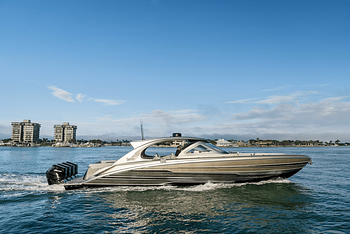
12th Jul 2024
Top Performance-Boat Brands, Where There’s Something For Everyone
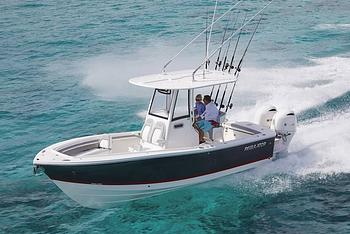
28th Jun 2024
Best Center Console Boats: The Best Brands Across the Spectrum
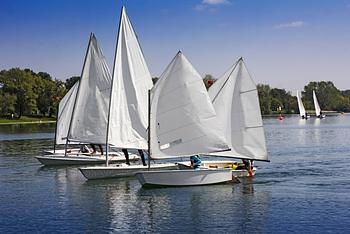
23rd Jun 2024
Small Sailboat Types: Sail Smaller and Savor It All
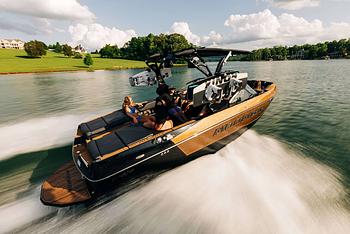
22nd Jun 2024
The Best Wake Boat Brands, a Complete Guide
- Explore Rightboat
- Boats for Sale
- Boating Articles
- Buyers Guide
- About RightBoat
- Sell Your Boat
- Boat Selling Advice
- All manufacturers
- All categories
Enter your email to keep up to date with the latest news
Join for free
Sign up now for free and discover how easy it is to keep up to date with THE latest boats for sale. Find your right boat, and tailor your voyage to finding your next boat.
Benefits of becoming a member:
- Set up tailored alerts
- Personalise your experience
- Download full specifications and broker details
- Keep tabs on your favourite boats
Are you a broker? Join as a Broker
Rightboat - join for free.
Do you have an account already? Login
Save this search
Save your search and receive new boats in your email..
You can unsubscribe from your alerts whenever you like. By pressing the button you accept the Legal Terms and conditions
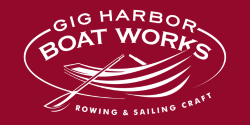
Call Us: (253) 851-2126 Mon-Fri 9-5 Pacific Time
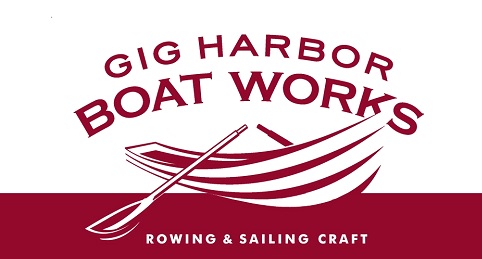
Customer Question: Which boat is most stable?
by GHBoats Webmaster | Jun 13, 2012 | Customer Questions | 2 comments
Recently we received this inquiry about the stability of our boats:
“We are interested in learning more about your small row boats. We need it to be stable on rough water that we often experience on Priest Lake. It also must be comfortable for my wife to row at age 78. The Navigator looks good, but perhaps others are just as good or better. We look forward to hearing from you. Thank you.”
First, we need to define the meaning of the word ‘stable’. Without being evasive, we prefer to use the word ‘forgiving’ rather than ‘stable’. Here’s why….
When most people think of stability, they think of a boat that won’t move when they do. Or they assume that most of what makes a boat “stable” has to do with ballast. There is actually a lot more to it than that, and much of it comes down to the hull design.
Any boat that is actually enjoyable to row MUST have a fair hull with rounded sides so the boat will slip through the water with a nice easy, long glide. It should also have a full length keel so the glide is straight, meaning the rower doesn’t have to make numerous course corrections just to row in a straight line. The counterpoint to rounded sides is that the hull will lean one way or the other if the rowers sits off center. This can make inexperienced boaters nervous, since it can take some time to get used to balancing your load – but with enough practice, balanced weight distribution becomes second nature.
There are a lot of variations of rounded hulls, ranging from the extremely critical competitive rowing shell to the forgiving type of ‘working rowboat’ hull we recreate. These shapes were designed to allow working boaters to earn a living in the days before the advent of external power, so they had to be efficient enough to work all day, yet carry a reasonable payload in difficult conditions. The forgiving nature means the rower can move around in the boat unless they do something really silly… then the boat will tell them to sit down and pay attention. The hard third chine and high freeboard will let the boat heel and recover without drama.
Compare that to a modern ‘stable’ aluminum rowboat; sure you can stand on the gunwale, but at the cost of efficiency. For example, one pull of the oars on a boat like our 12′ Point Defiance will result in 30 to 40 yards of glide. The same amount of power applied to an aluminum square transom boat will move it about 6 feet. Which is more fun? Which will you row because you WANT to, not because you HAVE to?
Now, specific to the original asker’s question, although the Navigator is a very nice rowboat, the 10′ range falls into the category of ‘dinghy’. Dinghies are primarily used for short term, ship to shore voyages of one or two people. For pleasure rowing, especially for folks who aren’t as flexible as they used to be, the higher seating position of the Point Defiance is more comfortable. The longer waterline and higher freeboard also will feel more assuring when the wind and seas pick up.
For a visible demonstration of just how much it takes to capsize one of our boats, check out the video of our Melonseed buoyancy test. You can also see how in the unlikely event that the boat does capsize, the rounded hull actually makes it relatively easy to right the boat again.
Hope that is helpful! If you have any other questions about our boats, or which one may be best for you, please get in touch with us at [email protected] – we’re happy to help!
I did some stability testing with my Swampscott dory. I haven’t dumped it (yet!) but one day I took it out and tried to lean it over to get the gunnel wet. I couldn’t do it! I got it pretty dang close and if you look at my photos you can see how far over the boat was but it wouldn’t go any further. Some warm day this summer I may go out and try again.
I’ll second the description GH gives above about stability. I just moved from a whitehall to a Point Defiance in a search for more stability and security (I’m not getting any younger!) and can vouch for the PD being forgiving and more secure than the whitehall, though not quite as fast rowing or sailing. I prefer to sail when I can and a sail full of wind has a lot of leaverage – enough to put the rail under on a whitehall if you aren’t very careful. In similar conditions, I’ve never gotten the rail close to the water in the PD. She’s wider, has higher freeboard, and more bearing aft, all of which kick in to hold her up when the pressure is on. She’s also a sweet thing to row, much closer to a whitehall than you’d expect. The lines are smooth, the waterline beam is narrow, and the keel is long enough to track nearly as well despite two feet less waterline length than a whitehall. But 12 feet is about as short as you can go and still have these properties.
Newest Posts
- Lobster Boat Update #3: Preorders Now Open!
- “Pale Valley” Salish Voyager Finishes Strong in Seventy48
- See You at Anacortes Boat & Yacht Show, May 16-18!
- Mailbag: Using a 14′ Whitehall as a Yacht Tender
- Lobster Boat Redesign — Update #2
- Beach Dolly (1)
- Best of GHBoats (5)
- Customer Questions (8)
- Customization (1)
- Galleries (4)
- Maintenance and Repairs (3)
- Announcements (13)
- Boat Shows (13)
- Just for Fun (17)
- Mailbag (44)
- Newsletters (25)
- Ocean Rowing (13)
- Press Reviews (10)
- Now Hiring (1)
- Woodwork (3)
- Captain's Gig (2)
- Jersey Skiff (4)
- Lobster Boat (5)
- Melonseed (6)
- Navigator (4)
- Nisqually (2)
- Point Defiance (7)
- Salish Voyager (18)
- Swampscott Dory (1)
- Whitehall (7)
- Sea Stories (13)
- Site Guide (4)
- Uncategorized (1)
Blog Archives
Site search.
The most fabulous yachts to charter this summer

There are an estimated 6,000 superyachts — vessels that are more than 100 feet long — at sea in 2024
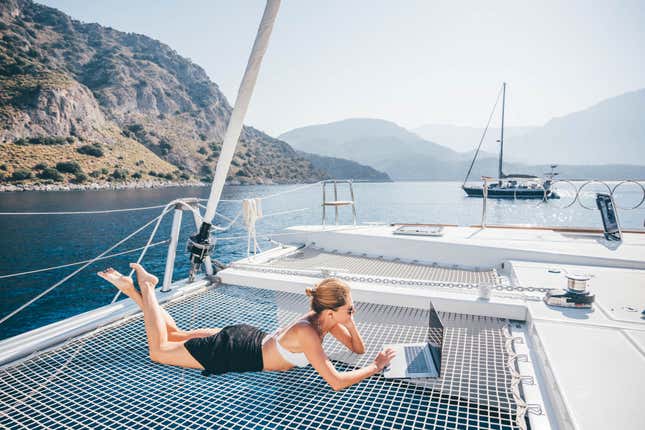
As summer reaches its peak across the Northern Hemisphere, it’s hard to imagine a better way of spending a vacation than channeling your inner ship captain and sailing across the ocean.
In recent years, yacht companies have reported a boom in sales — far from the decline that many in the industry feared, due to both the lingering effects of the COVID-19 pandemic and the economic realities of the Russia-Ukraine War.
“I spent my days [in 2020] doing worst-case scenarios and drawing up the budgets to go with them,” Giovanna Vitelli, chairwoman of Azimut|Benetti, the world’s largest yacht manufacturer, told the Economist in 2023.
Instead, her company reported a 23% growth in production value in 2023 —a reality that is not unique to just one yacht manufacturer. The luxury yacht market is expected to grow in value from $7.67 billion in 2023 to $17.33 billion by 2032, according to a recent report from Fortune Business Insights .
Analysts attribute the ships’ rise in popularity to the increasing number of extremely wealthy individuals . Yachts have long been considered a status symbol — a reality that has only increased as wealth becomes concentrated in the hands of a small group of high status individuals .
There are an estimated 6,000 superyachts —vessels that are more than 100 feet long — at sea as of this year. This is nearly quadruple the number of yachts seen in the ocean just three decades ago, according to Bloomberg .
Aside from an increase in popularity, the yacht industry has seen other changes in recent years. Increasingly, those in the market for a luxury ship are turning to alternate means of powering their vessels, as critics point to the excess emissions traditional yachts produce simply for recreational use.
In their 2024 report, Fortune Business Insights highlighted the growing trend of electrification as a significant area of growth in the coming years.
“A tough regulatory environment for traditional yachts and rising fuel prices will pave the way for the solid growth of electric yachts in the future,” the report reads. “Huge investments from various manufacturers and government support measures will accelerate the demand for electric yachts.”
Read on to learn more about the most luxurious yachts available for chartering in 2024.
Carinthia VII
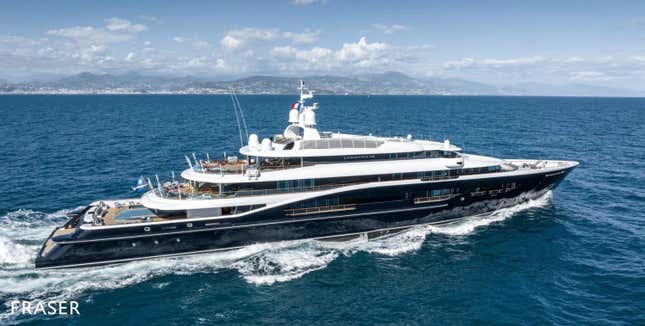
Originally constructed in 2002, the award-winning Carinthia VII was recently remodeled and reimagined specifically for private charters. The 319-foot ship spans six decks and can accommodate up to 12 guests in eight staterooms. Among the ship’s amenities are two bars, a fully equipped gym and an outdoor projection screen that allows for an “immersive cinematic experience like no other.” The cost of chartering the Carinthia VII is $1,525,700 during both the winter and summer seasons.
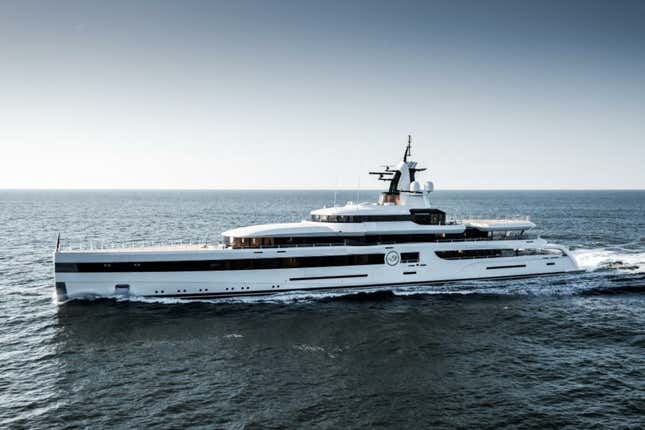
The Lady S yacht boasts a number of exciting water toys, including jet skis, water skis, wakeboards and kayaks for athletic guests on the 305-foot ship. For those who prefer more indoor-oriented activities, however, you can also catch a film on the ship’s IMAX Dolby cinema — the first of its kind on any yacht in the world. Accommodating 12 guests, in seven cabins, the cost of chartering the Lady S begins at $1,743,328 a week.

The interior of the Ahpo yacht seems more reminiscent of a luxury hotel than a simple ship. Accommodating 16 guests and 36 crew members, the vessel features a full-size gym, a winter garden and a spa complete with a Himalayan salt sauna. The 378-foot long yacht was first manufactured in 2021 by the German shipyard Lürssen. Excited sailors can charter the Ahpo from superyacht broker Edmiston, beginning at $2,833,376 a week.
500EXP Para Bellum
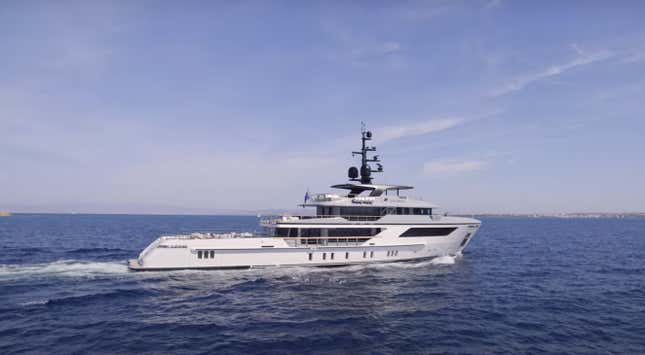
This 154-foot-long yacht can accommodate up to 12 travelers in its six cabins, along with up to 10 crew members. The ship was specially designed to enable “guests a 360-degree experience and relationship with the sea” through its unique stern and sundeck that allow travelers to safely stand “almost at sea level,” according to its Italian manufacturer San Lorenzo . Interested travelers can rent the ship for $359,609 a week.
The Renaissance
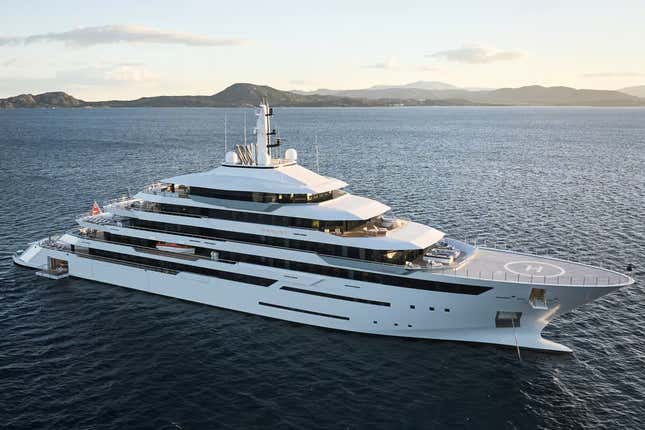
The Renaissance lives up to its grandiose name by going beyond traditional private yachts and bridging the gap between a personal vehicle and a full-on cruise ship. The 367-foot long ship features five decks and can accommodate 36 guests in 19 cabins. The Renaissance’s amenities include a 19-seat movie theater, a sushi-bar, and a full spa deck featuring a wellness area, plunge pools and a hair salon. The cost of chartering the ship from Burgess Yachts ranges from $3,269,280 to $3,814,160 a week.

IMAGES
VIDEO
COMMENTS
The most stable boat hull design depends largely on the type of boat, and the conditions it's used in. To make things simple, I've made a neat overview below. What is the most stable boat hull design? Generally, multihulls and deep-V hulls are considered the most stable hull designs in most situations. In practice, the most stable hull design ...
Finally, Peters noted that good hull designs stand the test of time. With most major advancements taking place in hybrids, like stepped hulls and multihulls, the average boat owner is going to be looking at hull designs that haven't changed much in 20 or 30 years. And that's OK. "Most people just want a good family boat," he said.
The most stable boat hull design is considered the flat bottom hull. This kind of design offers more stability than the rest due to its flattened bottom. Flat bottom hulls include small boats used in shallow waters, mainly in rivers or lagoons such as small fishing boats. For deeper waters, the most stable hull design is a multihull.
The European Yacht of the Year awards is the most thorough and impartial awards programme ... JPK has redefined the modern performance cruiser: stiff, stable and efficient to the max.
The most stable boat hull designs are multihulls and deep Vs. Flat-bottomed boats and monohulls with very deep keels are also in the running for exceptional stability. However, multihulls are the steadiest among these four hull types because they are reliably stable in almost any weather. Broader and flatter hulls are more stable than narrow ...
It has been updated to reflect the most innovative vessels on the water as of the current publishing date. Read More On: Catamaran. Dream Machines 2022. Heesen. Nobiskrug. Oceanco. Sailing Yacht ...
Modified-V. Sometimes called a warped plane, this is the most common hull for small boats, because it combines some of the best characteristics of the other shapes. The flatter sections toward the stern add stability as well as increase the speed, just like a flat-bottom. The wedge-shaped forward hull cushions the ride like a deep-V, and also ...
The most stable boat hull designs are generally those with a wide beam and a deep V‑shaped hull. Wide beams help to create a large base of stability, while the V‑shaped hull helps to reduce drag and provide a smooth ride in choppy waters. Catamarans, pontoon boats, and center console boats are all examples of ...
The Flat Bottom Hulls. The flat bottom hull is thought to be the most stable boat hull design usually found in smaller vessels. Due to its flattened bottom, this type of design gives greater stability than the others. Small boats with flat bottom hulls, like small fishing boats, are utilized in shallow waters, typically in rivers or lagoons.
Staying afloat is a major desirable yacht characteristic, and stability has a big role to play in the process. ... The lower the CG, the more stable the vessel becomes and the higher in degrees its limit of positive stability. Adding a large cabin structure can also change the heeled center of buoyancy and, at extreme angles, may contribute to ...
Its NE is 31.68 degree-feet: (180 - 120) x -0.8 x 0.66 = 31.68. Its stability ratio is thus 6.2: 196.56 ÷ 31.68 = 6.2. As a general rule, a stability ratio of at least 3 is considered adequate for coastal cruising boats; 4 or greater is considered adequate for a bluewater boat.
2. Displacement. These hulls are designed to push or "displace" water as they move, hence their name. Consequently, V-hulls fall under this category as well. Most displacement hulls other than V-hulls come to a close second in terms of stability due to their innate size advantage and, of course, their unique design.
Assent 's performance in the 1979 Fastnet Race makes the Contessa 32 a worth entry in the 25 best small sailing boat designs list. Credit: Nic Compton. Designed by David Sadler as a bigger alternative to the popular Contessa 26, the Contessa 32 was built by Jeremy Rogers in Lymington from 1970. The yacht's credentials were established when ...
Arcona 435. The Performance Cruiser winner at the 2019 European Yacht of the Year awards, the Arcona 435 is all about the sailing experience. She has genuine potential as a cruiser-racer, but her ...
Dutch yard Feadship now has a good number of eco yachts to its name, and 312-ft hybrid yacht Bliss is the most recent to have hit the water. Launched in May 2021, Bliss benefits from the very latest advances in technology with an all-new hybrid propulsion system. De Voogt Naval Architects were heavily involved in the design and engineering of ...
There are lots of different elements that affect how stable a boat will be, including the center of gravity, the center of buoyancy, and the general shape of the hull. ... At the very least, you'll think of some type of large yacht, most likely over 50 feet in length. In either case, the common link is that the boats you normally think of as ...
Lagoon 380. Small production catamarans aren't very common, so not too many choices are available until the 40' mark. That's what makes the Lagoon 380 so enticing. Currently the smallest—but also the most popular—of the Lagoon catamaran fleet, the 380 was launched in 1999 and well over 500 hulls have been built to date.
The boats weighs 68kg for the 3.3m or 74kg for the 3.5m, while the sailing components add just 15kg. Both are also available in carbon versions (a NZ$4,000 upgrade). The slight catch may be the ...
Best Feature: The command deck of the 46 BF can be completely enclosed and is climate-controlled. A perfect escape from the elements. Staterooms & Heads: 2/1. MSRP: $1,640,000. About Viking Yachts: With a mantra to build a better yacht every day, Viking leads the industry with over 50 years of experience, unmatched customer service, and quality ...
jlodrummer. Catalina Yachts are synonymous with bigger boats but they have some great and smaller boats too such as Catalina 16.5. This is one of the best small sailboats that are ideal for family outings given that it has a big and roomy cockpit, as well as a large storage locker. Designed with a hand-laminated fiberglass sloop, the Catalina ...
The Baba 30 also offers a nice extra perk. According to Jack Hornon, she "continues to have one of the highest resale values of any boat of this type and size.". A quick look at Yacht World reveals Baba 30s from the mid-70s and mid-80s typically cost anywhere between $20,000 and $70,000.
The Best Sailboats Under 25 Feet. Pocket cruiser: Cornish Crabber 24. British manufacturer Cornish Crabber has been producing beautiful, traditional style small sailboats for decades, ensuring they honor their heritage both in the construction style and appearance of their boats. The Cornish Crabber 24 is the most iconic of their range and ...
Compare that to a modern 'stable' aluminum rowboat; sure you can stand on the gunwale, but at the cost of efficiency. For example, one pull of the oars on a boat like our 12′ Point Defiance will result in 30 to 40 yards of glide. The same amount of power applied to an aluminum square transom boat will move it about 6 feet.
The most fabulous yachts to charter this summer There are an estimated 6,000 superyachts — vessels that are more than 100 feet long — at sea in 2024. By. Madeline Fitzgerald.